

11 Top-Rated Tourist Attractions in Nagoya
Written by Bryan Dearsley and Meagan Drillinger Updated Dec 26, 2023 We may earn a commission from affiliate links ( )
Thanks to its position opening onto the Pacific Ocean, Nagoya has developed into Japan's busiest port. It has also long been an important manufacturing site of such traditional industries as ceramics and textiles. The ceramics industry was established here in the 12th century and has become somewhat of a tourist attraction thanks to its numerous workshops and factory tours.
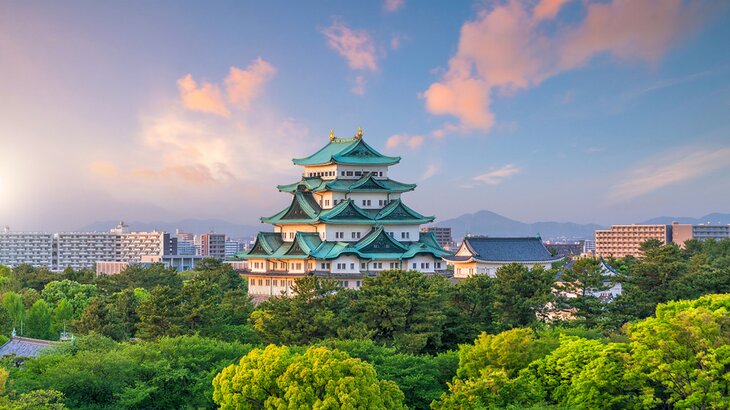
Many of the city's historic sites remain intact and are great places to visit for tourists. These include the magnificent 16th-century castle, which like much of the city center, was rebuilt after the destruction of WWII.
These days, this large city is a pleasure to explore for its excellent network of wide modern streets; world-class attractions, including museums and art galleries; and countless points of interest, such as its many historic shrines and temples. You'll find no shortage of things to see and do.
Discover the best places to visit in the city with our list of the top tourist attractions in Nagoya.
1. Atsuta Jingu (Shrine)
2. nagoya castle, 3. the museum meiji-mura (meiji village), 4. the tokugawa and nagoya city art museums, 5. the port of nagoya, 6. higashiyama zoo and botanical gardens, 7. nagoya tv tower and hisaya ōdori park, 8. toyota techno and toyota automobile museums, 9. the temples of ōsu, 10. noritake garden and ceramics factory tour, 11. legoland japan, where to stay in nagoya for sightseeing, tips and tours: how to make the most of your visit to nagoya, map of tourist attractions in nagoya, nagoya, japan - climate chart.
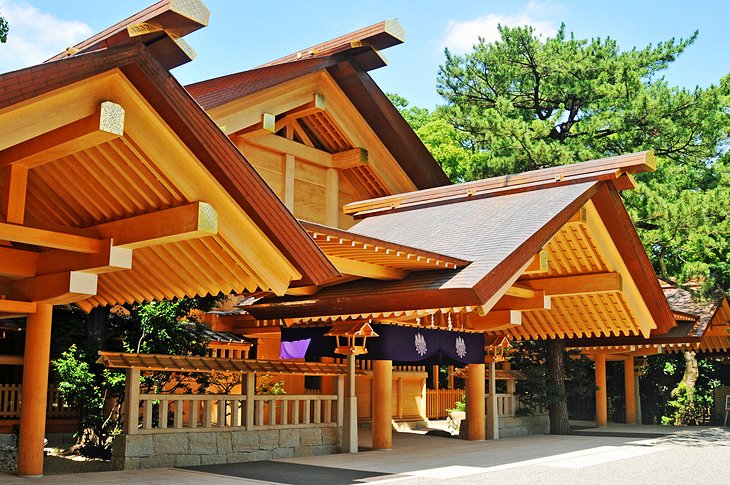
Highlight : The most important Shinto shrine in Japan with one of only three preserved Imperial insignias in the country
The Atsuta Shrine , widely considered the most important Shinto shrine in Japan, was established in the first century AD. It's most famous for its preserved Imperial insignia, the "grass-mowing sword" (kusanagi-no-tsurugi), one of only three in the country.
According to Japanese mythology, the sword originally belonged to the storm god Susanoo but was presented to the legendary hero Yamato-takeru as he set out to conquer the eastern provinces. When his enemies tried to kill him by setting the long grass on fire, he saved himself by mowing the grass with his sword (the name of the shrine, Atsuta, means "burning field").
In the northern part of the wooded precinct is the principal shrine, Hongu, surrounded by an enclosing wall. To the east is the Treasury, a modern building that contains a large number of works of art including old and modern paintings, ceramics, jewelry, and traditional masks. Hot Tip: With nine million visitors annually, the Atsuta Shrine is busy, so try to time your visit near opening or closing to avoid the crowds, or during the off-peak seasons such as spring or autumn.
Address: 1 Chome-1-1 Jingu, Atsuta Ward, Nagoya, Aichi 456-8585
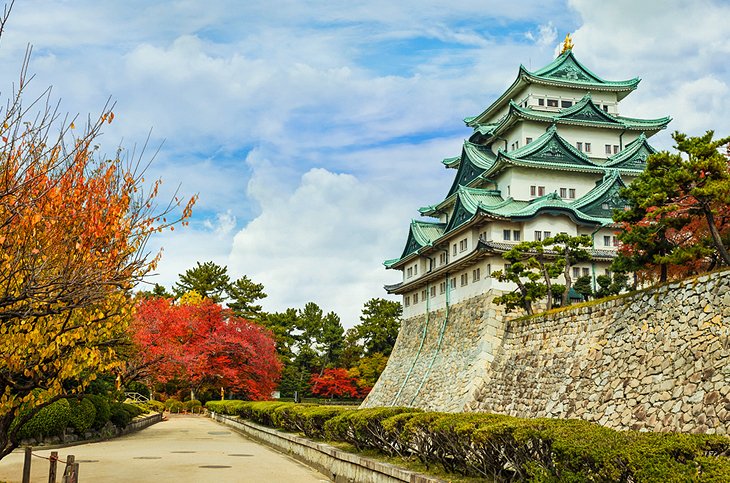
Highlights : A moated complex with a 48-meter-tall tower that houses a museum and has beautiful city views
Nagoya Castle was completely rebuilt in 1959 and remains one of the city's most important (and visited) landmarks. Originally constructed in 1612, this splendid moated complex includes highlights such as its splendid 48-meter-tall main tower. Famous for its two gilded dolphins (shachi) high up on its gables, the tower now houses a museum containing numerous art treasures, including painted wall screens, sliding doors, and wall paintings mainly of the Kano school.
From the fifth floor of the tower, visitors can enjoy extensive views of the city and the Nobi Plain. Three of the original corner towers survive, along with the second gateway and walls, and they are fun to explore. So, too, is the nearby Ninomaru Garden with its teahouse.
Be sure to look out for the golden fish statues perched atop the castle, too. They represent the mythological "shachihoko ," a creature that's half fish and half tiger, perched some 50 meters above the ground. If you're not averse to winter travel, seeing the castle shrouded in snow is a never-to-be-forgotten experience.
Address: 1-1 Honmaru, Naka Ward, Nagoya, Aichi 460-0031
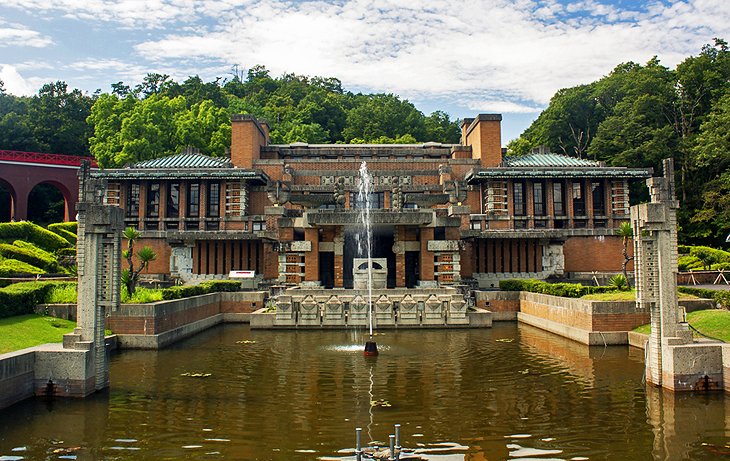
Highlights : Beautifully preserved examples of Japanese architecture that date back to the Meiji period, as well as other examples of international architecture
Just 24 kilometers north of Nagoya's city center, the Meiji-mura Village Museum in Inuyama is an open-air museum featuring many fine examples of Japanese architecture from the Meiji period of 1868 to 1912.
All told, the site consists of more than 60 buildings of interest that were brought here and reassembled from across the country. Of special interest are elements of the old Imperial Hotel, a unique design created by famous American architect Frank Lloyd Wright .
Other fascinating structures include a prison, post office, bathhouse, churches, and homes, many of them influenced by design elements from Western nations. Numerous buildings are open to the public and house interesting collections of furniture, temporary exhibits, and other items related to the respective buildings. There's also a historic tram and bus service (as well as a vintage steam train), which makes this a fun diversion for kids.
If you're traveling with kids, try to allocate some time in your itinerary to visit the nearby Little World Museum of Man . They'll love the opportunity to dress up in traditional costumes from around the world and learn about different cultures.
Address: 1 Uchiyama, Inuyama, Aichi 484-0000
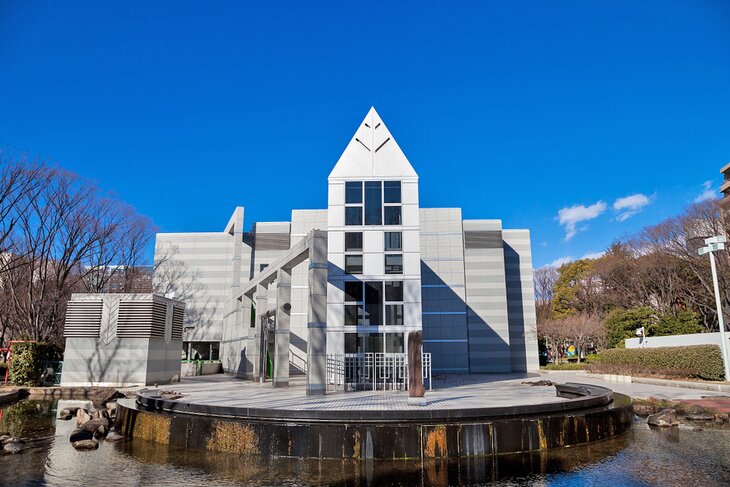
Highlights : Two impressive picture scrolls, one of which contains 43 parts and was made by Fujiwara Takayoshi.
Perhaps the best-known of Nagoya's world-class art facilities is the excellent Tokugawa Art Museum . This excellent gallery is home to many treasures that once belonged to the city's wealthy Tokugawa family, including numerous fine paintings, items of porcelain, weapons, and documents.
Of particular note are the 43 parts of the famous Genji-monogatari-emaki, a picture scroll made by Fujiwara Takayoshi. Another must-see here is the Saigyo-monogatari-emaki, an ancient scroll depicting scenes from the life of the priest Saigyo from 1118-90.
Also worth seeing is the Nagoya City Art Museum (Nagoya-shi Bijutsukan). Opened in 1987, this museum is home to a permanent collection that includes the work of Surrealist artists from around the globe, including Sean Scully, Kansuke Yamamoto, and Alexander Calder, as well as temporary exhibits.
Finally, be sure to squeeze in a visit to the Nagoya Museum of Fine Arts (Nagoya Bosuton Bijutsukan). Sister museum to Boston's Museum of Fine Arts, it's notable for bringing items from the latter's collection of Impressionist and other artworks to Japan, and is also worth a visit for art lovers.
Address: 1017 Tokugawacho, Higashi Ward, Nagoya, Aichi 461-0023
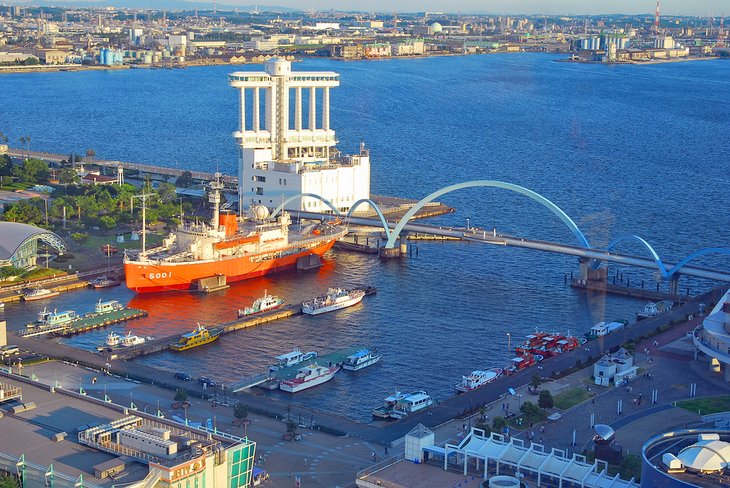
Highlights : Home to the Port of Nagoya Public Aquarium, the historic Fuji vessel that sailed to the South Pole, and a small amusement park
In addition to being a bustling harbor, the Port of Nagoya in Ise Bay has become something of a tourist attraction in recent years. One of the most popular things to do, particularly for those traveling with kids, is to visit the excellent Port of Nagoya Public Aquarium . Highlights include its large collection of native marine life, many exotic species of fish from across the Pacific, as well as a popular dolphin show.
Also worth checking out is the Fuji , a historic Antarctic-going vessel that now serves as an interesting museum dedicated to the exploration of the South Pole. There's also a small amusement park (Sea Train Land) that's fun for the kids, along with a lovely wildflower garden.
Numerous fine walkways crisscross the port, connecting it to the main parts of the city, and are fun to explore.
Hot Tip: For a truly memorable experience, try to time your visit for the fireworks displays held on Marine Day and Christmas Eve.
Address: 1-3 Minatomachi, Minato Ward, Nagoya, Aichi
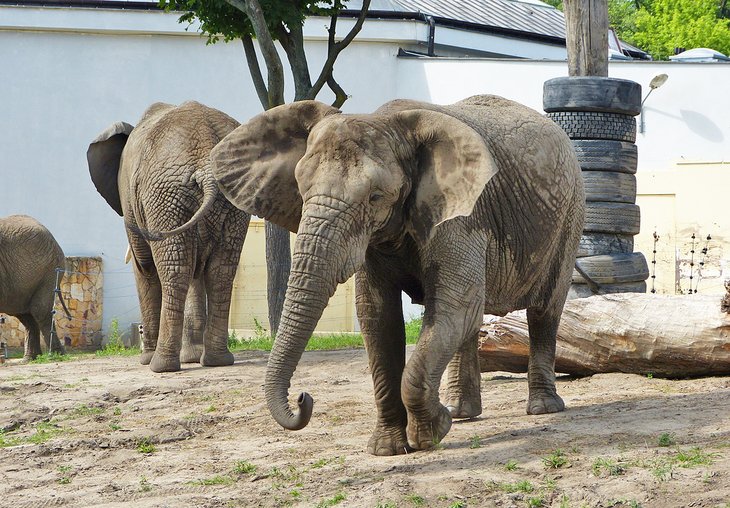
Highlights : A combination of a zoo, amusement park, and botanical garden that features 125 species of animals, as well as the Higashiyama Sky Tower observation platform
Opened in 1937 and one of the oldest (and largest) such establishments in Japan, the Higashiyama Zoo and Botanical Gardens (Higashiyama Dōshokubutsuen) makes for an excellent excursion that can easily occupy the best part of a day.
Part zoo, part amusement park, and part botanic garden, this popular tourist attraction offers plenty of fun for visitors of all ages. For animal lovers, the zoo area includes some 125 different species including gorillas, hippos, elephants, lions, tigers, giraffes, and koalas, along with tropical fish, numerous birds, and a reptile house.
Afterward, be sure to wander the pathways through the lovely botanical gardens section with its collections of both native and non-native species. From here, you can also visit the 100-meter-tall Higashiyama Sky Tower with its observation platforms and restaurant offering great views over the city.
Address: 3-70, Higashiyama-motomachi, Chikusa-ku, Nagoya 464-0804
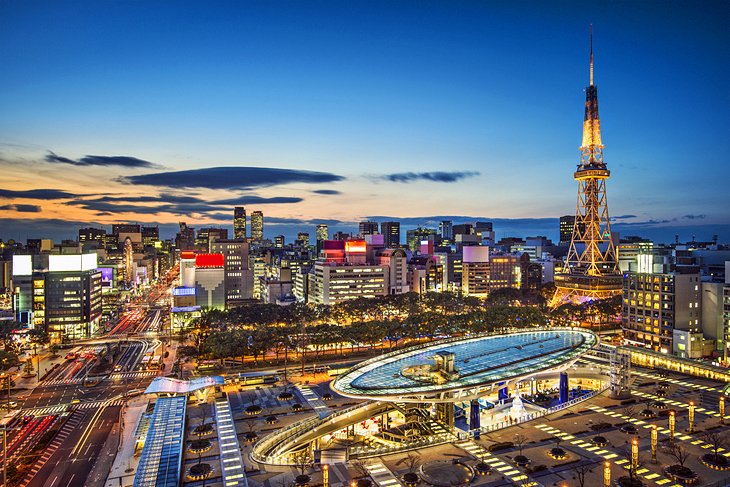
Highlight : The best views in the city from the 100-meter outdoor Sky Balcony
Some of the best views over Nagoya are from the 180-meter-tall Nagoya TV Tower (Nagoya Terebi-tō). Built in 1954 in the heart of Hisaya Ōdori Park, the tower holds the record as the oldest electric wave tower in the country. It also boasts two observation decks: the Sky Balcony (outdoors) at 100 meters, and the Sky Deck (indoors) at 90 meters.
Looking not unlike the famous Eiffel Tower in Paris, the site includes an informative exhibition about its history, as well as a restaurant.
Be sure to spend time also exploring the nearby Hisaya Ōdori Park. This pleasant two-kilometer-long green space in the heart of the city boasts many trees, fountains, and sculptures, and is regularly used as a venue for events and festivals. A highlight is the famous Nagoya Festival (Nagoya Matsuri) with its parades, traditional costumes, and music.
Address: 3 Chome-6-15 Nishiki, Naka Ward, Nagoya, Aichi 460-0003
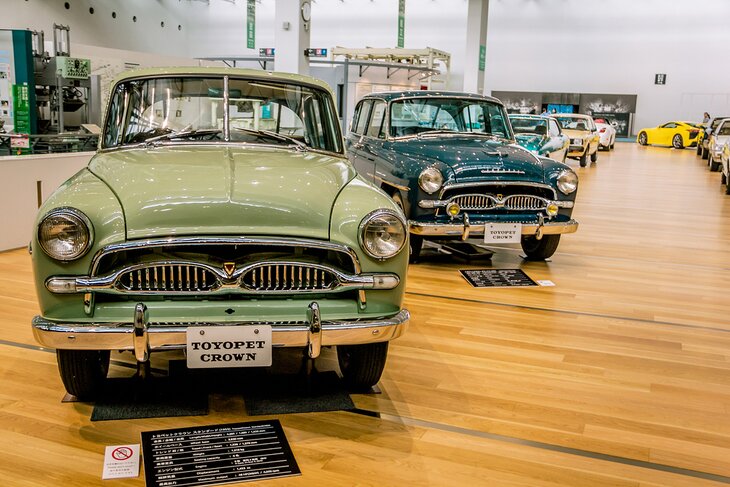
Highlights : A science and tech museum with exhibits that show Toyota's transition to one of the largest auto manufacturers in the world
Opened in 1994 to celebrate Nagoya's largest and most famous company, the excellent Toyota Commemorative Museum of Industry and Technology (Sangyo-Gijutsu Kinenkan) makes for a fun day out.
Highlights of a visit to this science and technology museum, often simply referred to as "Toyota Techno," include numerous still-working exhibits of the huge looms and textile manufacturing processes that Toyota started out making in 1933.
You can also see interesting displays detailing its eventual transition into the world's largest automobile manufacturer, including numerous robots. Car buffs will also want to visit the huge Toyota Automobile Museum in nearby Nagakute , home to a superb collection of vintage cars made by Toyota and other leading manufacturers from around the globe.
Also well worth a visit is the SCMaglev and Railway Park (Rinia Tetsudōkan), a superb museum dedicated to the Central Japanese Railway Company featuring 39 trains, along with models and a fun simulator.
Address: 4 Chome-1-35 Noritakeshinmachi, Nishi Ward, Nagoya, Aichi 451-0051
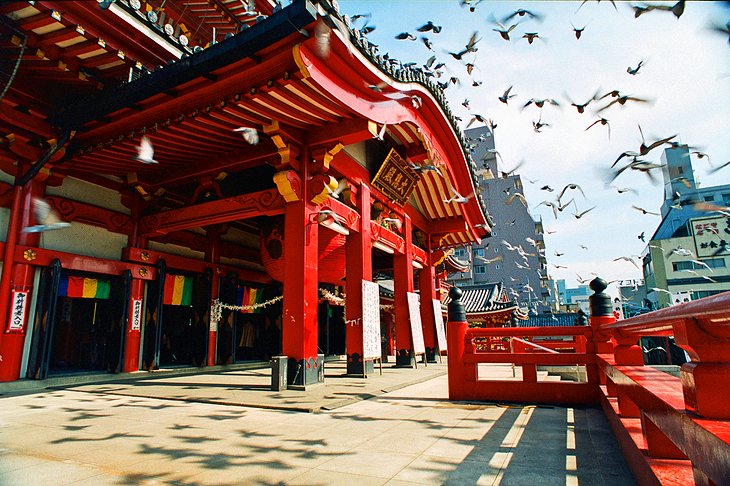
Highlight : The iconic red paper lantern in the main hall, where pilgrims can hang their prayers
One of Nagoya's most popular districts is Ōsu, much visited for its many fine temples and shrines. One of the most important is the Buddhist temple of Ōsu Kannon (Kitanosan Shinpuku-ji Hōshō-in), built in the early 14th century in an area that turned out to be prone to flooding and moved to its current location around 1612.
Rebuilt in the 1970s, this magnificent building is home to the famous red paper lantern hanging from the ceiling of the main hall to which pilgrims attach their prayers.
After visiting some of Ōsu's other important temples, most notably Bansho-ji and Hongan-ji Betsuin , be sure to wander the surrounding historical streets with their many small shops offering traditional Japanese crafts and food.
Address: 2 Chome-21-47 Ōsu, Naka Ward, Nagoya, Aichi 460-0011
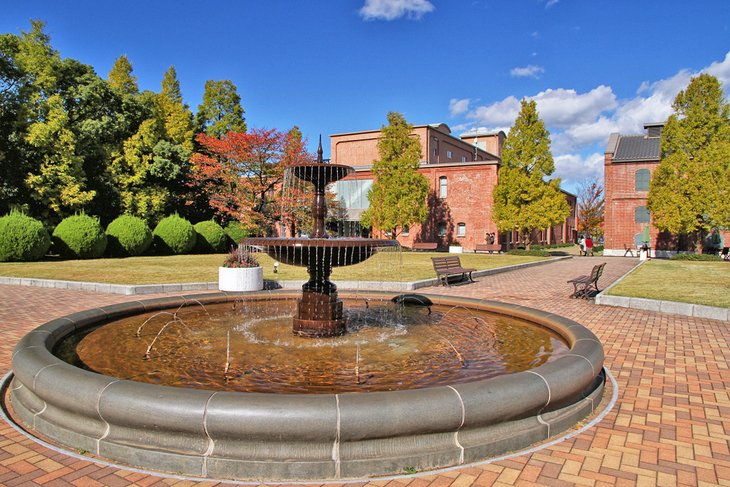
Highlights : Displays that show off the company's antique porcelain, alongside demonstrations of how the ceramics are made
Started in 1876 by two brothers looking to increase Japan's trade with Western markets, the Noritake ceramics company has a long and storied past in the city of Nagoya. An interesting attraction for both collectors and the curious alike is Noritake Garden, a fascinating insight into the manufacturing process of this historic ceramics company housed on the original factory grounds.
Highlights include displays showcasing the company's history and antique porcelain, as well as demonstrations of the manufacturing process, hands-on workshops, and gift shops. The site's gardens are beautiful, and the grounds are also home to restaurants.
Address: 3 Chome-1-36 Noritakeshinmachi, Nishi Ward, Nagoya, Aichi 451-8501
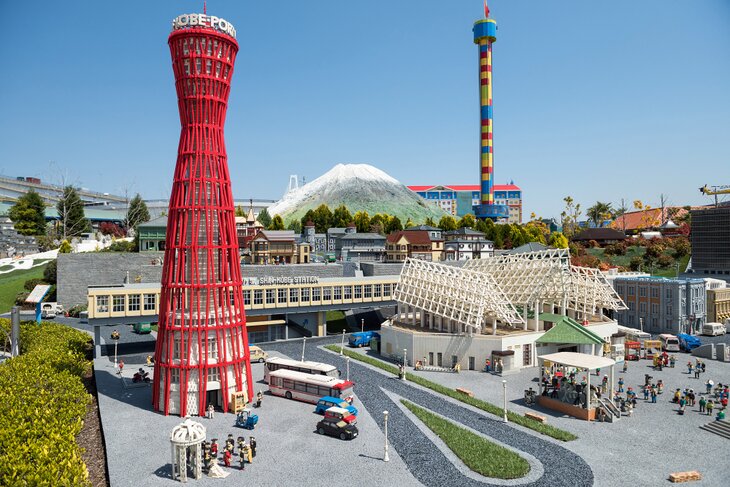
Highlights : Rides, attractions, and a Lego reconstruction of some of Japan's most famous landmarks
One of the newest major theme parks to have been built in the country for some decades, Legoland Japan in Nagoya only opened in 2017 and is already attracting well over two million visitors a year.
In addition to its numerous rides and attractions, the park includes a fascinating and extremely detailed miniature town, complete with accurate scale Lego reconstructions of recognizable landmarks from across Japan, including the famous Nagoya Castle. A new hotel opened up at the site in 2018, and future plans include the addition of an aquarium.
Address: 2-2-1 Kinjoufutou, Minato-ku Nagoya-shi, Aichi 455-8605
Luxury Hotels :
- In Nakamura near Josen-ji Temple, the Nagoya Marriott Associa Hotel is one of the most luxe hotels in town. There is a mix of rooms and suites, including family rooms if you're traveling with kids. Amenities here include a swimming pool, hot tub, workout room, and a spa. There is also a restaurant on-site, and room service is available. If you are driving, there is parking at the hotel.
- Hilton Nagoya is another relatively luxe option. Located in the heart of Nagoya's business, shopping, and entertainment district, it runs a free shuttle service to nearby attractions like Nagoya Castle. It is also just five minutes from the main train station. Rooms and suites are modern and comfortable with traditional Japanese style. There are great city views from large windows, and blackout curtains for when you want to sleep. Choose from multiple restaurants when it is time to dine. There is also a 49-foot indoor swimming pool, a 24-hour gym, and a sauna on-site.
- There are not a lot of luxury hotels in Nagoya, but the brand-new Hotel Keihan Nakoya is one option. The 4-star property is in the central Naka district and has contemporary western-style rooms with king beds and giant flat-screen TVs. These also have sitting areas and are quite large.
Mid-Range Hotels :
- Nishitetsu Hotel Croom Nagoya is brand new and offers small but very clean and comfortable rooms in a central location in the Naka district. Suites have more space to move around. The decor is Western with Japanese-style elements. Expect comfy beds draped in thick white duvets, and pale wood minimalist furnishings. Amenities at this family-friendly hotel include a restaurant, hot tub, and free breakfast.
- Located right above Nagoya main station, the JR Gate Tower Hotel is a contemporary hotel with great views from rooms on higher floors - corner rooms have windows on two sides and a bright and airy feel. There is a restaurant on-site that serves a morning breakfast buffet. There is also a coffee shop, hot tub, currency exchange, laundry service, and fitness center on-site. Paid public parking is available nearby.
- Daiwa Roynet Hotel Nagoya Taikodoriguchi is another good mid-range choice. In Nakamura, it is within walking distance of a number of attractions and restaurants. The Western-style rooms are tidy and comfortable and even feature small sitting areas. There is a restaurant with a breakfast buffet on-site, as well as a hot tub and paid private parking.
Budget Hotels :
- n a convenient location, Nagoya B's is a good budget choice. The Western-style rooms feature sitting areas, fridges, and desks. On-site amenities include private paid parking, a hot tub, a spa, and a workout room. Breakfast is also included in the rate.
- Nagoya at Night : Japan is an extremely safe country, so those interested in spending time exploring the best bits of Nagoya should certainly feel comfortable doing so after nightfall. Popular things to do at night in Nagoya include wandering the quaint old streets of the Endoji Shotengai Shopping Street and checking out the traditional crafts and artisan wares (as well as enjoying authentic Japanese food). Also fun is walking the perimeter of Nagoya castle, which is beautifully illuminated at night.
- Experience Rural Japan : There's also plenty to see and do in the area surrounding Nagoya. A great option for those with a full day to spare is a private tour to Shirakawago, Hida Furukawa, and Takayama, an immersive journey that provides an unforgettable slice of life in rural Japan. Highlights include a walk around the town of Hida Furukawa, as well as a chance to explore the old town of Takayama and visit Shirakawago, a UNESCO World Heritage site famous for its well-preserved traditional architecture.
Nagoya has a temperate climate year-round, but the best time to visit Nagoya is March, April, May, October, and November . Nagoya's springtime falls over the months of March, April, and May. Days during this period are between 15 and 20 degrees Celsius, and the end of March through early April in Nagoya is prime time to view the beautiful cherry blossoms. Expect lots of crowds at the end of April and early May, which is when domestic travel peaks.
Nagoya is also beautiful during October and November. Temperatures range between 13 and 18 degrees Celsius. Days are warm and sunny, while nights are a bit cool. Throughout November, the leaves in Nagoya begin to change colors, so expect crowds to rise as travelers come to see the beautiful colors.
The summer months in Nagoya include June, July, August, and part of September. This is the rainiest, hottest, and most humid time of year in the city, but the crowds will also have thinned out.
More Related Articles on PlanetWare.com
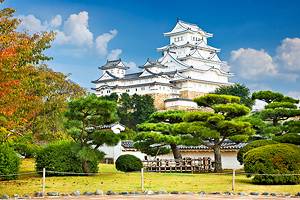
Great Day Trips from Nagoya : Its position on the main rail routes means Nagoya is perfectly situated for fun day trips to other nearby cities. A must is taking the train to historic Kyoto , just 1.5 hours away and considered the quintessential Japanese cultural destination. From here, you can also venture off and explore the area around Kyoto , too, including such gems as Arashiyama for an authentic taste of small-town Japan. And just a short ride farther west of Kyoto is Osaka , another marvelous destination for those in search of a great cultural experience.
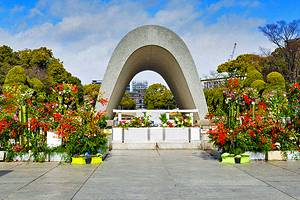
Longer Trips from Nagoya : For those willing to travel farther afield, Nagoya is the perfect jumping-off point for all kinds of adventures. An approximately five-hour-long return trip will expose you to the very best of Nara , considered to be the epicenter of Japanese culture and home to many fine historical buildings, museums, and quaint streets, which haven't changed in centuries. Then there's Hiroshima , a three-hour rail journey (each way) to one of the world's most historically significant reminders of the cruelty of war, yet home to some of the most beautiful shrines in the world, including the remarkable Island Shrine of Itsukushima.

Japan Vacation Ideas : Japan certainly has no shortage of great vacation options. If you're not averse to traveling in the shoulder season, consider the beautiful city of Sapporo on the northernmost island of Hokkaido. Come winter, the city bursts into life with its annual Sapporo Snow Festival, as well as activities such as skiing at the Mount Moiwa Ski Resort. Also worth considering are the tourist attractions of Tokyo ; the nearby icon that is Mount Fuji ; and the city of Fukuoka , popular for its lovely castle, shrines, and temples.
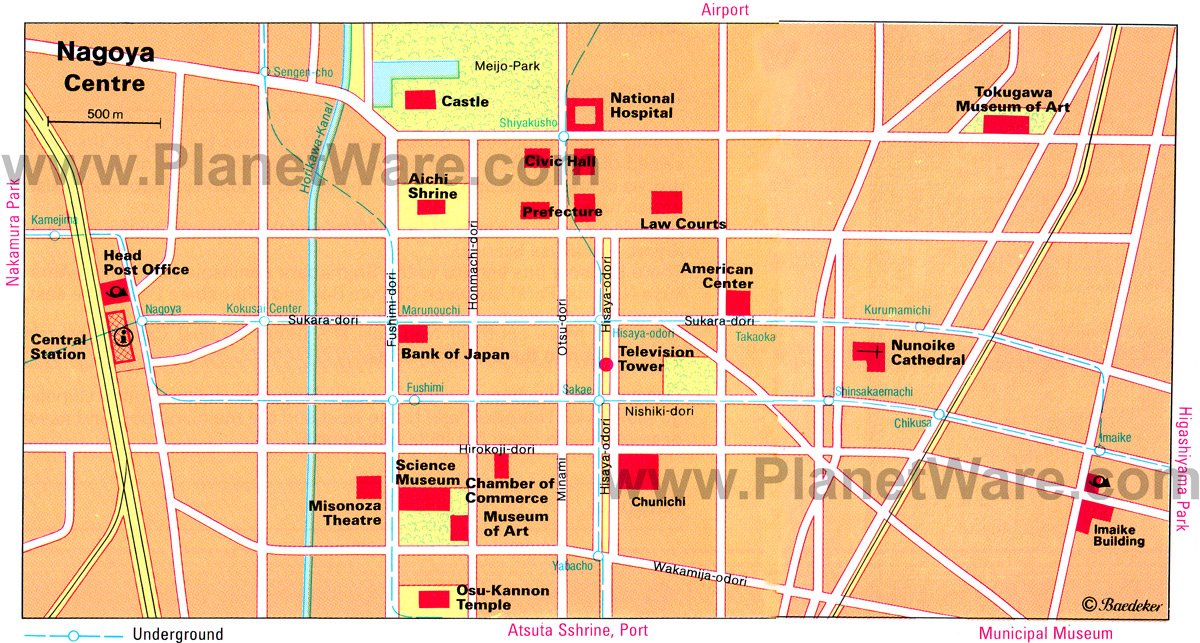
More on Japan

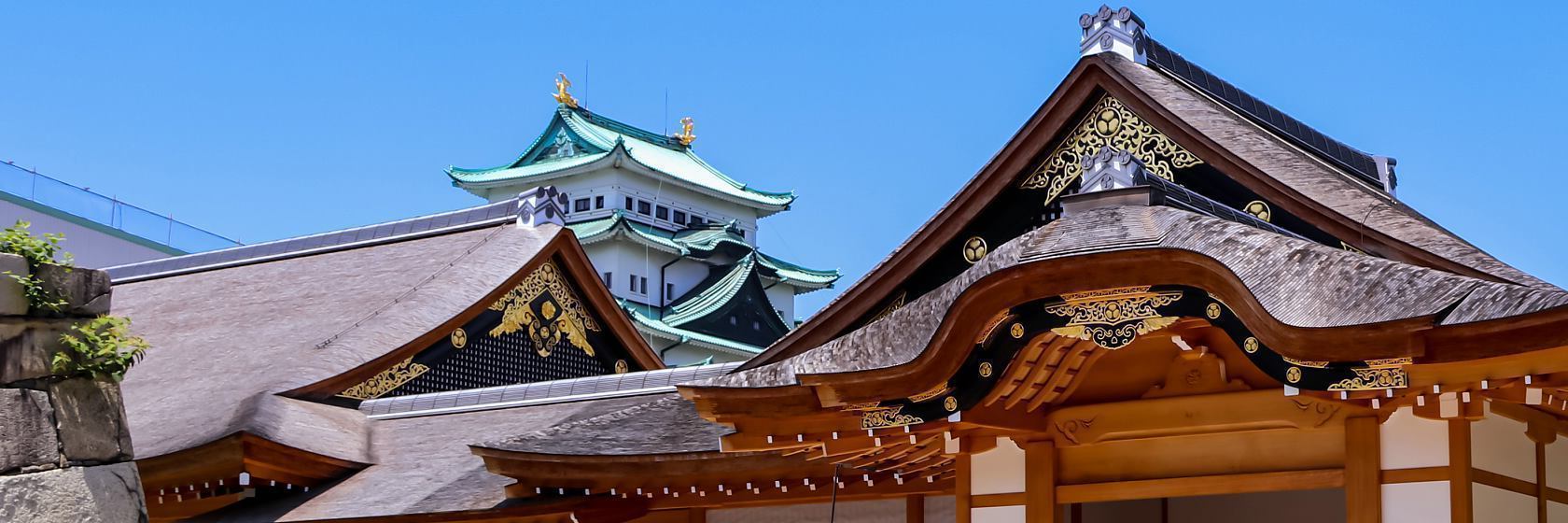
With over two million inhabitants, Nagoya (����) is Japan's fourth most populated city after Tokyo , Yokohama and Osaka . It is the capital of Aichi Prefecture and the principal city of the Nobi plain, one of Honshu's three large plains and metropolitan and industrial centers.
Nagoya developed as the castle town of the Owari, one of the three branches of the ruling Tokugawa family during the Edo Period . Much of the city, including most of its historic buildings, were destroyed in the air raids of 1945. The Toyota Motor Corporation maintains its headquarters just outside of Nagoya.
Top attractions in Nagoya
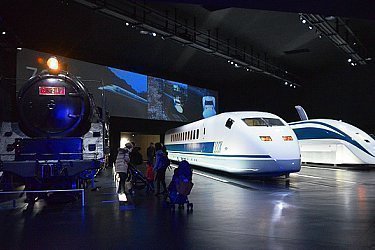
Railway Museum •
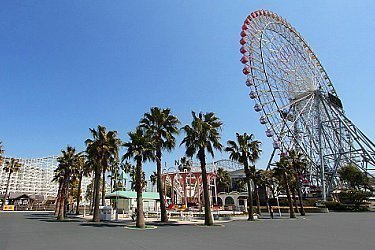
Nagashima Resort •
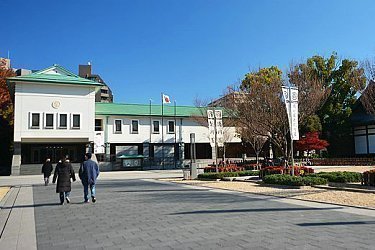
Tokugawa Art Museum •
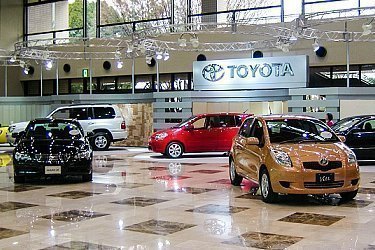
Toyota-related Sights •
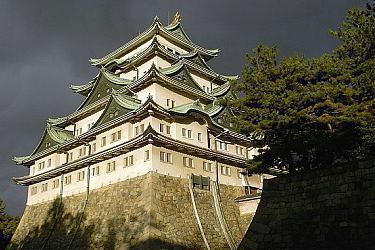
Nagoya Castle •
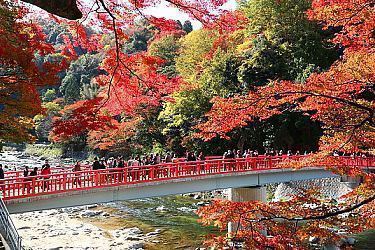
Science Museum
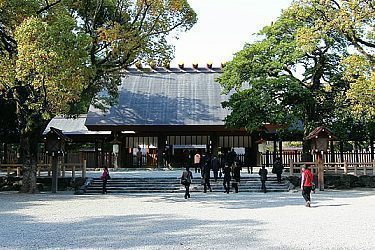
Atsuta Shrine
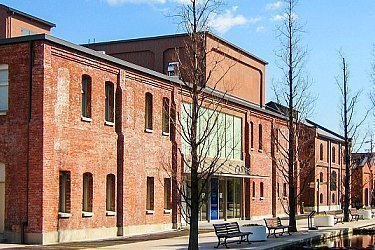
Noritake Garden
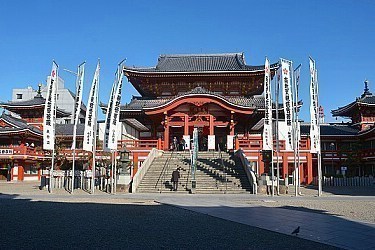
Osu Kannon Temple
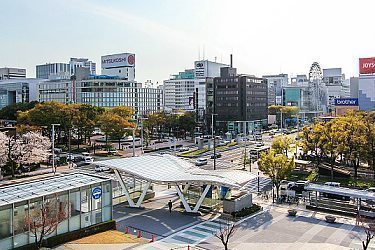
Nagoya Port Area
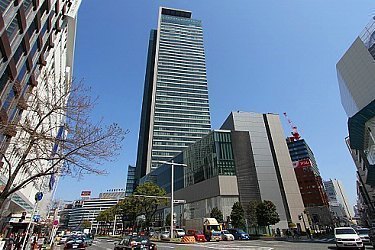
Midland Square
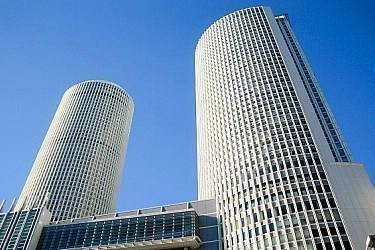
JR Central Towers
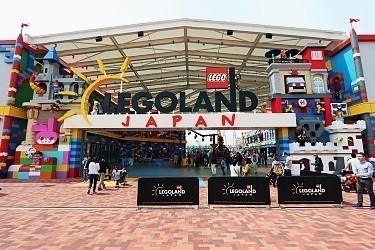
Ghibli Park
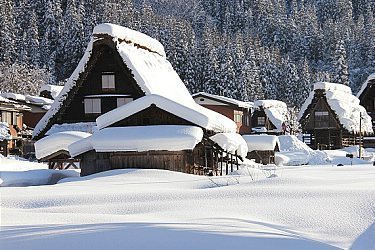
Shirakawago & Gokayama ••
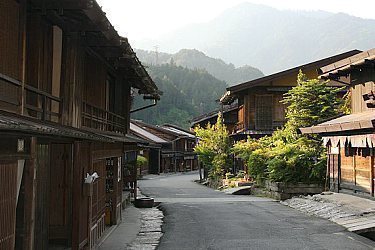
Kiso Valley ••
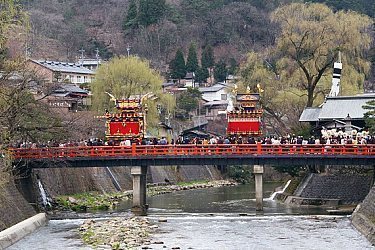
Takayama ••
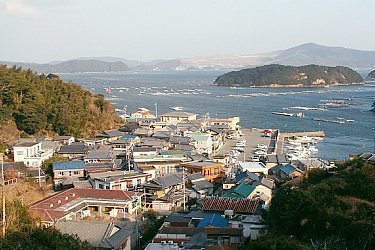
Ise Shima ••
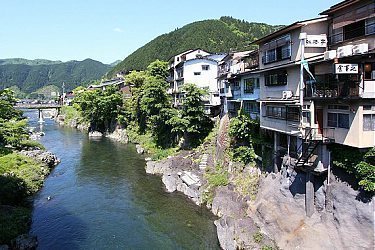
Gujo- Hachiman •
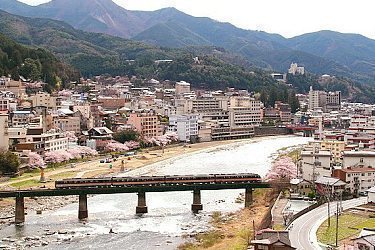
Nagoya by interest

Getting there and around
Questions? Ask in our forum .
Links and Resources
Nagoya city, hotels around nagoya.


Home » Travel Guides » Japan » 25 Best Things to Do in Nagoya (Japan)
25 Best Things to Do in Nagoya (Japan)
Nagoya is the fourth largest city in Japan and sits in the charming Aichi region of the country. It is best known perhaps for being the center of the automotive industry in Japan and you will find all the big name factories here such as Toyota, Honda and Mitsubishi.
As well as a predilection for futuristic inventions and robotics, Nagoya also has a strong history and is said to be the home of both samurai and ninja culture, so whatever part of history you are interested in, you are sure to find something of note here.
This part of Japan is not well known for its food scene, but this is a shame as Nagoya has its own range of toothsome desserts, noodles and specialist sushi that also make it worth the trip alone if you are holidaying on the island of Honshu.
Here are the 25 best things to do in Nagoya …
1. Toyota Exhibition Hall

Nagoya is known for being the central hub for Toyota production in Nagoya and with that in mind you can come to the Toyota Exhibition Hall and find some 20 different vehicles which have just been made at the Toyota Factory.
There is also a tour offered here which lasts for two hours and will fill you in on the background of the rise of Toyota as a global brand and show you how Toyota products are made.
One of the highlights of the exhibition hall is the chance to check out some of the most cutting edge products that Toyota are currently working on, so if you like engineering and robotics then it is not to be missed.
Make sure you book two weeks in advance if you want to take the tour.
2. Explore Atsuta-jingu

Atsuta-jingu is a shrine which would have originally been built 1,900 years ago.
That said, like many buildings in Japan it was destroyed over the years and was rebuilt in 1966, and it is now known for being one of the most important Shinto shrines in the country.
The shrine sits in a garden of cypress trees and is known for a famous grass-cutting sword that local believe was given to the Japanese Royal Family by Amaterasu-Omikami who is the Shinto Sun Goddess.
Make sure that you don’t miss the famous Treasure Hall which is known for its paintings, masks and weaponry.
3. Walk around Noritake Garden

Noritake Garden dates from 1904 and made up of the grounds of one of the most famous ceramics makers in Japan.
As you stroll through the garden you can check out a range of period relics such as old fashioned kilns and there is also a gallery here where you can learn more about the history of ceramics production here.
If you want to get hands-on then you can also make and glaze your own piece here as there is also a Craft Centre & Museum as well as a shop where you can buy some of your own ceramics items as souvenirs.
4. Ascend Nagoya TV Tower

Nagoya TV Tower is one of the main landmarks in Nagoya and soars to a height of some 180 meters.
The tower also has the claim to fame of being the oldest of its kind in Japan and it was built before the more famous Tokyo Tower in the country’s capital city.
You can visit the observation deck here which sits at a height of 100 meters and from there look out over Nagoya and the neighboring Hisaya-odori Park.
5. Sample the local food

Nagoya is not as well known for its food scene as other spots in Japan but that doesn’t mean that it hasn’t got a range of delicious local delicacies to try.
This part of Japan is famous for its miso production which is a sauce made from soybeans and you should make sure to try the local specialty of misokatsu which is a fried pork cutlet which is covered in thick miso sauce.
Also don’t leave without snacking on tenmusu which is is a kind of shrimp tempura which is stuffed into rice and coated in seaweed.
6. Visit Tokugawa Art Museum

If you are an art lover then make sure to visit the Tokugawa Art Museum which will tell you all you need to know about the history and culture of Japanese art.
There are some 10,000 items on display here and you can check out galleries dedicated to the art work of the shogun family.
There are also a wealth of cultural relics such as a scroll that was created in the 12th century and features the legend of the Tale of Genji.
7. Check out Nagoya Castle

Nagoya Castle would have been built in the 17th century during the time of Tokugawa Ieyasu although like many buildings in Japan it was razed to the ground in World War II. The latest version that stands today was rebuilt in 1959 and you can check out some of the famous features here such as the shachi-hoko which is a creature said to have the head of a tiger and the body of a fish.
There are also collections of costumes and weaponry on display that tell the story of Japan in the days of old.
Also make sure not to miss Ninomaru-en which is the garden that surrounds the castle and is known for its idyllic teahouses where you can stop for a refreshing drink.
8. Visit the Toyota Commemorative Museum of Industry and Technology

Nagoya is the heart of the Toyota industry in Japan so if you like cars then you need to come to the Toyota Commemorative Museum of Industry and Technology.
Here you will find a museum that extends over almost 8,000 square meters and which tells the story of how it began as a weaving plant before becoming a robotics and vehicle focused factory.
Some of the highlights of this museum include the number of interactive exhibits as well as an audio tour.
9. Tour the Nagoya City Science Museum

Nagoya City Science Museum is widely said to be one of the best museums in the country.
The museum features a large planetarium which is the biggest in the world and you can come here to find out all about the workings of the solar system.
There are also a range of quirky attraction here that science fans will love such as a tornado laboratory and a freezing laboratory.
There are also a clutch of live shows here that feature science experiments that younger visitors are sure to love.
10. Shop for bargains

If you are in Nagoya then don’t miss the chance to hunt for bargains at Komehyo which is a large discount store in the city that sells second hand items.
This store unfurls over an impressive seven floors and you can find eclectic items such as clothes, shoes, jewelry and even things such as antiques.
If you love digging for buried treasure then this is a great place to visit in the city as the prices are very competitive.
11. Attend the World Cosplay Summit

Nagoya comes alive in July and August when it opens its doors to the World Cosplay Summit.
This is a must-see attraction for anyone who likes cosplay which features players dressed up in elaborate costumes.
There are also a number of people here who dress up as famous anime characters and then play out elaborate scenarios for fans of Japanese animation.
12. Try the local desserts

Japan is known for mochi which is a famous sticky dessert but Nagoya has its own regional variation which is known as uiro.
This is a kind of mix between a sweet and a gummy treat and is made from glutinous rice flour mixed with sugar.
This is then flavored with local ingredients such as matcha (green tea powder) or azuki (red bean paste).
13. Enjoy Nagoya Matsuri

If you are in Nagoya in October then make sure that you don’t miss one of its most famous festivals which is called Nagoya Matsuri.
This festival is dedicated to the ‘Three Heroes’ of Nagoya and takes place at Hisaya-odori and you can watch processions here as well as floats which are covered in colorful puppets.
There are also dance recitals here as well as a party atmosphere which is well worth a look.
14. Visit Toganji Temple

Toganji Temple would have been built in the 16th century and is known for having a large sculpture of the seated Buddha in the center.
This is a temple dedicated to the Hindu faith and was built to honor the Goddess Saraswati who also has her own festival which is held in Nagoya in May.
One of the signature features of the temple that you shouldn’t miss is the large wood block here which is said to cleanse you of your sins if you touch it.
15. Check out Osu Kannon Temple

The Osu Kannon Temple was built in the 12th century during the Kamakura Period but was then relocated to its present location in the 17th century under the rule of Tokugawa Ieyasu.
It was then rebuilt in the 1970s and you can come here to buy a range of local charms which are known as omamori and which are said to bring good luck if you carry them on your person.
There is also a flea market held here twice a month in front fo the temple which is also well worth a look.
16. Watch the Nagoya Sumo Tournament

Nagoya Sumo Tournament is known to take place in July over fifteen days and you can come here to watch a tournament as some of the best sumo wrestlers in Japan do battle in the ring.
This is one of the main events held annually in Nagoya so if you are in town then make sure to book a ticket.
Sumo is one of the quintessential traditions in Japan so make sure to look out for all the small touches such as wrestlers purifying the ring by throwing salt in front of them before a match.
17. Visit Nittaiji Temple

Nittaiji Temple is a Buddhist temple that dates from 1904 in Nagoya and was built in honor of the special relationship between Thailand and Japan.
As you would expect, there are a number of pieces here that reflect both Japanese and Thai traditions and you can view items that were donated by King Rama V of Thailand.
This makes this one of the most unique temples in Japan and it is well worth a look if you are in town.
18. Enjoy the Nagoya Castle Summer Night Festival

The Nagoya Castle Summer Night Festival takes place in the summer season in Nagoya and is located on the weeping grounds of the main castle.
The gardens are lit up with a selection of beautiful lanterns and you can also watch people performing traditional dances to honor their ancestors here.
There are also stalls where you can buy local treats and handicrafts and, more surprisingly, and onsite beer garden.
19. Check out the Sky Promenade

The Sky Promenade is located in Midland Square and has the claim to fame of having the tallest observation deck in Japan.
The deck is located outside on the 44th to 46th floors of Midland Square and you can come here to take in panoramic views across Nagoya.
There are also some amazing sky view restaurants here and you have to walk through winding passages to get to them which is all part of the experience.
20. Walk around the Port of Nagoya Public Aquarium

One of the signature tourist attractions in Nagoya is the Port of Nagoya Public Aquarium and as such it is one of the most visited attractions in the area.
Here you will find a huge number of tanks filled with colorful marine life and there is also an amazing icebreaker ship here which you can explore and contains its own museum.
There are also some dolphin shows held here, so if you do not support dolphins being kept in captivity then you may want to give this a miss.
21. Visit Arimatsu Tie-dyeing Museum

Arimatsu Tie-dyeing Museum is one of the more quirky attractions in Nagoya and will tell you everything you need to know about the traditional art of shibori or tie-dyeing.
There are a number of galleries that tell you the history of shibori but one of the main attractions here is the chance to check out local artisans at work who will show you exactly how the pieces are made.
You can even have a go at making your own items if you are keen to get hands on although this can take up to three hours depending on the complexity of the design.
22. Try the noodles

If you are in Nagoya and feeling hungry then you need to make sure that you try the local noodles which are known as kishimen.
These noodles are made in Nagoya and are flat in shape and dressed with miso or soy sauce in a kind of broth.
Kishimen are considered a snack more than anything and you can find them at what are known as restaurant-gai which are located inside shopping centers or in places such as railway stations, making them the perfect choice if you want a quick bite.
23. Explore Higashiyama Zoo & Botanical Gardens

Higashiyama Zoo houses a range of animals although you should note that many of the enclosures are quite small and for this reason you may choose to give it a miss.
A better choice however are the Botanical Gardens which are located next to the zoo and you can walk around and take in the lush foliage and serene atmosphere.
If you are traveling with children or just looking for a slice of greenery in the city then this is a good place to come and stretch your legs.
24. Tour Aichi Prefectural Museum of Art

Aichi Prefectural Museum of Art is one of the best art museums in the region and has collections and galleries of both Japanese and international art.
Some of the famous pieces on show here were painted by Henri Matisse, Max Ernst and Pablo Picasso, and you can also check out a collection of works by Japanese artists from the 20th century to the modern day.
There are also pieces from the Edo Period and some other items such as ceramics and jewelry as well as paintings.
25. Visit SCMAGLEV & Railway Park

If you like trains then make sure not to miss a trip to the SCMAGLEV Railway Park which features a real maglev, also known as the fastest train in the world.
You will also be able to take a walk through the history of train travel in Japan and there are also interactive exhibits that make this museum a fun attraction for anyone traveling with children.
To get to the museum and park you need to travel around 20 minutes outside Nagoya but it is more than worth it as this is one of the quirkiest attractions in the city.
25 Best Things to Do in Nagoya (Japan):
- Toyota Exhibition Hall
- Explore Atsuta-jingu
- Walk around Noritake Garden
- Ascend Nagoya TV Tower
- Sample the local food
- Visit Tokugawa Art Museum
- Check out Nagoya Castle
- Visit the Toyota Commemorative Museum of Industry and Technology
- Tour the Nagoya City Science Museum
- Shop for bargains
- Attend the World Cosplay Summit
- Try the local desserts
- Enjoy Nagoya Matsuri
- Visit Toganji Temple
- Check out Osu Kannon Temple
- Watch the Nagoya Sumo Tournament
- Visit Nittaiji Temple
- Enjoy the Nagoya Castle Summer Night Festival
- Check out the Sky Promenade
- Walk around the Port of Nagoya Public Aquarium
- Visit Arimatsu Tie-dyeing Museum
- Try the noodles
- Explore Higashiyama Zoo & Botanical Gardens
- Tour Aichi Prefectural Museum of Art
- Visit SCMAGLEV & Railway Park
- Tours & Experiences
- Tailor-made Trips
- Bahasa Indonesia
We are happy to see you again!
Continue with
Or use email.
No Account? Create one
Create account
Already have an account? Sign in
Quickly Sign up with
I agree to Japan Travel's Terms of Service and Privacy Policy . Terms of--> and acknowledge that Japan Travel's Privacy--> applies to me.-->
Email reset password link
Please check your inbox and click the link we will send to you.

Exciting, vibrant city with a long history and deep culture
Things to do in nagoya.
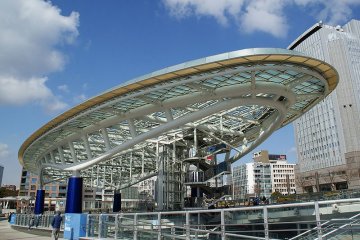
Legoland Japan

Osu Kannon Temple

Nagoya TV Tower
Upcoming nagoya events.
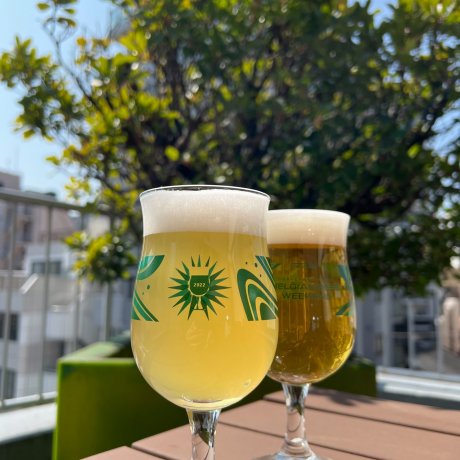
Belgian Beer Weekend 2024
Running for over 10 years now, the Belgian Beer Weekend is actually an 11 day-long affair showcasing almost 100 different types..

July Grand Sumo Tournament (Nagoya) 2024
The Nagoya Grand Sumo Tournament will feature a host of veterans and up-and-coming wrestlers at the Dolphins Arena in Nagoya.
About Nagoya
The centrally located city of Nagoya has a long history and a deep culture that is often overlooked by the rest of the country, let alone the rest of the world. There’s a joke that goes “All travelers within Japan go to Nagoya! The bullet train stops there for a whole two minutes on its run between Tokyo and Osaka!” Despite the put down, the capital of Aichi Prefecture, Nagoya, is indeed seen by many as a conservative, nondescript city, however locals will tell you of its many benefits. One hour forty minutes from Tokyo by bullet train, less than an hour from Kyoto and Osaka, a major commercial hub that remains close to nature. Nagoya is one of Japan’s most important economic centers.
Nagoya has many claims to fame. Many civil war-period daimyo and other famous samurai were born in and around Nagoya. Nagoya Castle’s keep is the biggest of all Japanese castles, and has the most “haafu”, or triangular eves of any castle. Nagoya is home to the second most venerated Shinto Shrine in Japan, Atsuta Jingu, second only to the Great Shrine of Ise. Nagoya was the birthplace of the Japanese national past time of passive gambling, Pachinko . Nagoya’s 158m tall TV broadcast tower was the first of such towers across all major cities, and Nagoya’s CBC Radio was the nation's first commercial radio broadcaster. Nagoya Station is listed as the world’s largest railway station space-wise.
Nagoya Port handles the most international cargo of any port in Japan, and its international airport, Centerair, located 40 minutes drive south of the city was once voted among the world’s top three best designed, easily accessed and convenient airports.
Nagoya’s Higashiyama Zoo and Botanical Gardens is one of Asia’s biggest zoos too! Two of the greatest samurai battles, Okehazama and Nagakute, were both fought within the current city confines, and the city, with its surrounding Aichi Prefecture was host to the 2005 World EXPO.
Japan’s third largest city by size and fourth by population, Nagoya is an industrial city, and home to many world-renowned companies including Toyota Motor Corporation, Brother Industries and Noritake Fine China. Having long been a commercial and industrial center meant that Nagoya was heavily targeted and the city was destroyed by allied bombing in World War Two. For that reason, few historical buildings remain, however the city was able to rebuild itself in an easy to navigate and understand grid like pattern with long straight, wide streets and plentiful parklands. Public transport is plentiful and most efficient, and the attractions Nagoya has to offer, such as the Maglev and Train Museum, Toyota Automobile Museum, and the magnificent Tokugawa Art Museum housing the treasures of the prominent Tokugawa family who ruled Nagoya, and the nation with an iron—or in the case of many of the treasures—a golden fist!
Don’t believe any underhyped accounts you may find – Nagoya is an exciting, vibrant city with a long history and a deep culture. Its been kept a secret for some time, but now the cat is out of the bag, we expect to see you here soon!
Nagoya Top 10
- Recommended

Valley of Witches: a New Ghibli Park Attraction

Okazaki Park Wisteria Festival

Sakura Spots in Toyota City

Ghibli Park Coming in 2022

Tennogawa Park Wisteria Festival

A Unique Black Thunder Stay in Aichi

A Culinary Tour of Aichi Prefecture

Sakura Season at Tsuruma Park

Dark Forest Harvest Festival

Aichi: The Heart of Japan

July Grand Sumo Tournament (Nagoya)

Nagoya Castle Cherry Blossom Festival

World Cosplay Summit Championship

Nagoya Castle Summer Festival

Nagoya Festival

Menya Hanabi

Belgian Beer Weekend

Misokatsu Yabaton

Sakura Wine Festival

Kajiken Ramen

Dusk at Nagoya Port

The New Honmaru Goten Palace

One Day in Nagoya

Hommaru Palace Comes Back to Life

Ken Chan Candy Store

Nagoya's Global Shogun

Konparu Coffee Shop
Where to eat in nagoya.
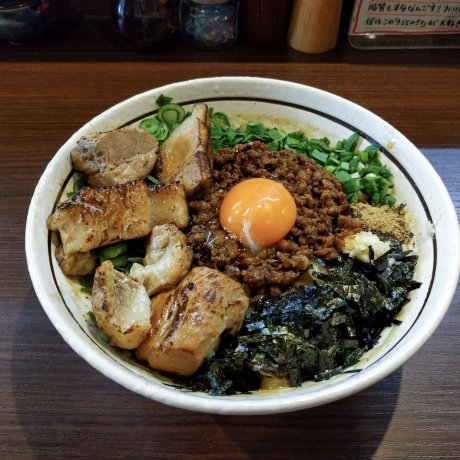
Menya Hanabi (麺屋はなび) serves up maze-soba (soupless ramen) in Nagoya, Aichi prefecture.
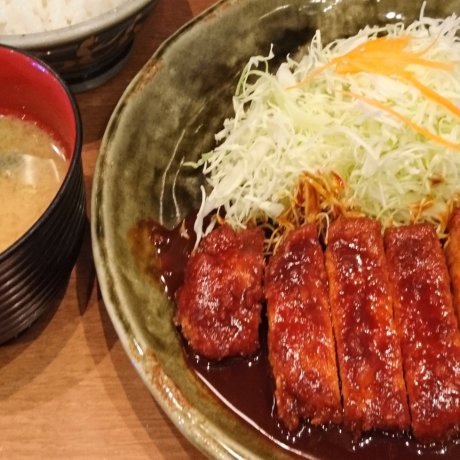
One of Nagoya’s food specialities is miso katsu (pork cutlet with thick miso sauce). There are many shops in Nagoya, and one o..

Kajiken (歌志軒) is a 40-something chain ramen shop originally from Nagoya, serving up the local style – Taiwanese mazesoba.
Places to stay in Nagoya
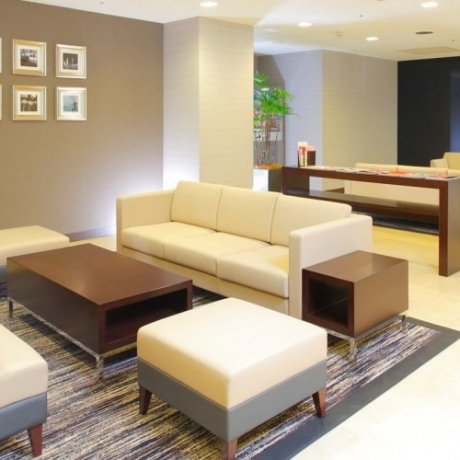
HOTEL MYSTAYS Nagoya-Sakae
HOTEL MYSTAYS Nagoya-Sakae is a hotel among busy streets, so you are never far away from the buzz of Nagoya.

Nagoya Travellers Hostel
"For the two of us, home isn't a place. It's a person. And we are home." is the right quote to describe how delighted ..
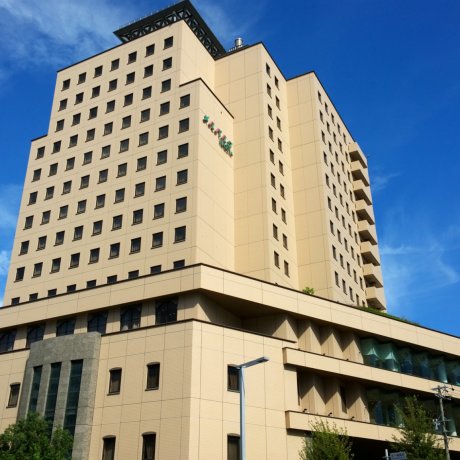
Hotel Mielparque Nagoya
In Nagoya, Hotel Mielparque offers to visitors a charming property with a convenient connection to the heart of the city and i..
Latest Nagoya Reports

For fans of Sanrio and adorably presented food, a limited-time event starting this August at the Nagoya Hilton will be right up..
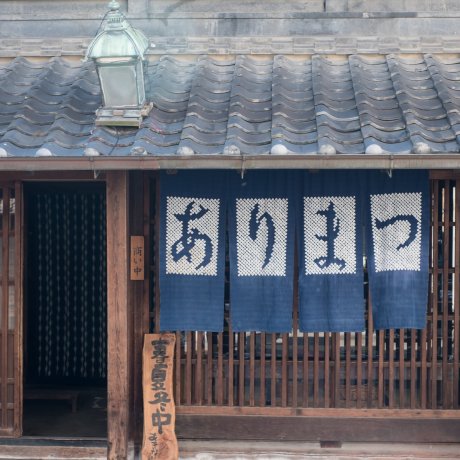
Many tourists to Japan have spent some time in Aichi Prefecture without even knowing it. Blessed with the calm waters of Mikawa..
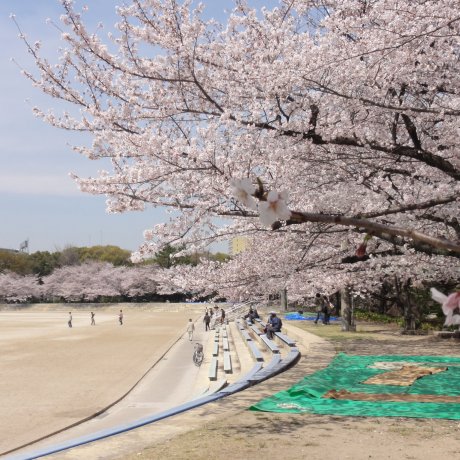
From late March to early April each year, Aichi's Tsuruma Park is filled with over 700 Somei Yoshino cherry trees in bloom...
Let us know how we can help.
- Things to Do
- Tourist Spots & Attractions
22 Best Things to Do in Nagoya, An Underrated Food and Sightseeing Destination

- Stefania Sabia
If you want to branch out your Japan travels beyond Tokyo, Kyoto, and Osaka, then try Nagoya, the country's fourth-largest city! The capital of Aichi Prefecture has a distinctive food culture and a rich history, thanks to its close ties with the old Tokugawa dynasty that left behind the majestic Nagoya Castle and other amazing architectural legacies, such as the Atsuta Shrine, one of Japan’s most prominent shrines. The city not only preserves its historical beauty, but it is also a science and industrial center, being home to Toyota, the largest car company in the world. Read on to discover the 22 best spots to visit while in Nagoya!

This post may contain affiliate links. If you buy through them, we may earn a commission at no additional cost to you.
What to See in Nagoya
1. nagoya castle: visit a 400-year-old samurai castle.
Nagoya Castle has been a symbol of Nagoya for over 400 years. Originally constructed in 1612 by Tokugawa Ieyasu, the military ruler who established the Edo period (1603-1868), the structure stands at an impressive 48m in height. After the original building burned down in 1945, it was recreated in 1959 using techniques and materials identical to the first construction. Thus you are able to get an accurate insight into the lives of Japanese feudal lords and samurai while wandering through this masterpiece of architecture. Atop the castle, you can spot the two golden shachi (tiger-headed carp) that are considered to be icons of the city. Even if the main tower keep is closed for renovation, be sure not to miss the recently rebuilt castle palace (Honmaru Goten) and the beautiful gardens.
*The main tower keep is closed until October 2028.
2. Atsuta Shrine: One of Japan's Most Prominent Shrines
Atsuta Shrine, with a history said to span over 1,900 years, is the oldest landmark in Nagoya. Located south of Nagoya Station, the plot of about twenty hectares is covered with thick forests that are home to camphor trees that are estimated to be over 1,000 years old. Atsuta Shrine is considered to be a shrine of significant importance in Japan’s native religion, Shinto, as it is believed to house one of the three sacred treasures of Japan: the sacred sword known as Kusanagi no Tsurugi, or the "Grass-cutting Sword." The sun goddess Amaterasu is arguably the most important Shinto deity, and she too is enshrined here alongside the Kusanagi sword. For those interested in Japanese religion, Atsuta Shrine is a must-visit during your time in Japan.
3. Shirotori Garden: Stroll Through a Tranquil Japanese Garden
Shirotori Garden, only a 10-minute walk from Atsuta Shrine, is the biggest traditional Japanese garden in Nagoya. The 3.7 hectare garden is located inside Shirotori Park and was carefully designed with the help of artisans from other regions like Kanazawa in Ishikawa Prefecture. Shirotori Garden offers changes in scenery depending on the seasons, with cherry blossoms in spring and red and gold foliage in autumn. Visitors to Shirotori Garden can enjoy teatime in a traditional tea room as well as other small events during the year, such as a bonsai exhibition in January or Japanese classical concerts.
4. Osu Kannon: The Lively Temple and Shopping District
The history of the Osu Kannon Temple dates back to the year 1333, and the temple enshrines one of Japan's most important Kannon (Buddhist goddess of mercy) statues. It is also known for a flea market held on its grounds on the 18th and 28th of every month, as well as its neighboring shopping district. The bustling alleys that make up the Osu shopping district host around 1,200 stores that will be sure to satisfy your shopping fix while in Nagoya. On top of this, the area hosts a wide variety of restaurants and bars serving Japanese and international cuisine. Part of the shopping district is often compared to Tokyo's Akihabara, as there are many stores that specialize in electronics, cosplay, and anime goods.
5. Nagoya City Science Museum: Enjoy the World's Biggest Planetarium
Maybe history isn’t your thing? Worry not, for equally as close to Osu is the Nagoya City Science Museum! The world’s biggest planetarium is housed inside the museum’s globe, while the other seven floors are packed full of interactive exhibitions. It has interactive areas such as a -30°C room where you can experience an aurora, the “Tornado Lab” (a 9-meter tall twister that replicates tornados), and the “Secrets of Life” exhibition where you can learn about the mechanisms of cells and DNA. It’s not unheard of for science fans to use a whole day of their Nagoya trip at this museum alone.
*Presentations are only in Japanese.
6. Toyota Commemorative Museum of Industry and Technology: Discover the History of the Largest Car Company in the World
This museum is located on the site of the original company in central Nagoya, not far from Nagoya Station, and displays the history of the Toyota group. The exhibitions vary from textile manufacturing to robotics, with interactive activities that are available in English as well. If you are interested in the history of the world's biggest car company, from its origins to its recent development, and want to know more about what is perhaps the region's most iconic company, this place is a must-go!
7. Tokugawaen Garden: Relax in a Feudal Lord's Landscape Garden
This Japanese garden belonged to the Owari-Tokugawa family, one of the branches of the Tokugawa clan, the ruling clan in the Edo Period. Their former residence was located here, and the original garden encompassed 44 hectares. The current garden is laid out in the typical "daimyo" garden style (a feudal lord's landscape garden with a central pond) and offers various landscapes as well as seasonal highlights and flowers such as peonies and irises.
8. Tokugawa Art Museum: Learn More About the Samurai
This museum is adjacent to the Tokugawaen Garden and was built on the grounds of the Owari family's former feudal residence. The collection was donated by the descendants of the Owari-Tokugawa family, who amassed great wealth during the Edo Period. The museum boasts more than ten thousand pieces, preserving several of the family's treasures including samurai armor and swords, tea utensils, poems, scrolls, and maps. The comprehensive display helps you imagine the Owari-Tokugawa family's way of life.
9. SCMAGLEV and Railway Park: The Go-To Place for Train Lovers
This museum is run by JR Central and displays about forty retired trains, including a maglev (levitating bullet train), bullet trains, and steam locomotives. The museum aims for a better understanding of the trains' histories and mechanics. Popular attractions are the train simulators, the train crew simulator, and one of the largest train dioramas in Japan. This educational exhibition can be enjoyed by all ages, and it's the perfect destination if you are traveling with kids!
If you're traveling with children, also check out this article for 15 Things To Do in Nagoya with Kids! Sightseeing Spots for the Whole Family to Enjoy .
10. Higashiyama Zoo and Botanical Gardens: Spend a Day in the Open Air With 7,000 Different Kinds of Plants
The Higashiyama Zoo and Botanical Gardens cover sixty hectares and is a pleasant place for a day out. The zoo, which exhibits approximately 500 species, is one of the largest zoos in Japan. The botanical garden features around 7,000 different kinds of plants, with a large Western-style greenhouse and rose garden. Much of the garden is dedicated to Japanese aesthetics, such as the traditional garden with a pond and irises, a reconstructed gassho-style house (a traditional house with a steeply-sloped thatched roof) from Shirakawa-go in Gifu Prefecture, and the gate of a former samurai house.
11. Arimatsu: The Traditional Town Known for High-Quality Kimono
Arimatsu was a town built on the Tokaido Highway, one of Japan's main roads during the Edo Period. Arimatsu's highlights are its picturesque townscape with old wooden houses from the Edo Period lining the street, and the famous "Arimatsu shibori," a kind of traditional tie-dyeing method for kimono and fabrics. You can visit the Arimatsu-Narumi Shibori Museum or the shops along the main street to see or buy beautiful handmade shibori works and learn more about the town's highly-prized dyeing technique.
12. JR Central Towers: Get Your High-End Shopping Fix
The JR Central Towers above Nagoya Station were the tallest landmark in Nagoya until the neighboring Midland Square surpassed it in 2007. The building consists of the 245m tall Office Tower and the slightly shorter and slimmer Hotel Tower. The complex is the perfect place for some high-end shopping, housing a Takashimaya department store and Tower Plaza shopping mall on the lower floors. The top floors of both towers have restaurants and lounges with views run by Takashimaya and Marriott Hotel respectively.
BicCamera’s Nagoya JR GATE TOWER and Nagoya Station West Store are also just a brief walk from JR Central Towers. Those wanting to buy Japanese electronics and appliances while in Nagoya can use the BicCamera discount coupon below for an even better deal!

13. Midland Square Sky Promenade: Take a Walk in the Sky
Midland Square is the tallest building in Nagoya, located just opposite of Nagoya Station. The first floor and basement of the building house many shops, a cinema, restaurants, and cafes. The 247m tall building also offers an open-air observation deck on the top floors called Sky Promenade, with an almost 360-degree panoramic view over Nagoya. Several restaurants are located on the 41st and 42nd floors, with tables that overlook impressive views of the city.
14. Oasis 21: Get on Board a Spaceship
Commonly referred to as “Spaceship Aqua,” Oasis 21 is only a short train ride away from Nagoya Station. This hyper-modern complex has an abundance of shops on the basement level, including Studio Ghibli and Shonen Jump stores. The main attraction, however, waits for you atop the fittingly named “Galaxy Platform”. During the day, this unassuming glass walkway may only briefly catch your eye, but come nighttime, this roof transforms as it is illuminated. On the top, you can stroll around an artificially suspended lake while you soak up the views of downtown Nagoya.
15. Nagoya TV Tower: Japan's Oldest Observation Tower (MIRAI TOWER)
*Now known as the Chubu Electric Power MIRAI TOWER
Only a short walk from Oasis 21 stands the oldest observation tower in Japan – Nagoya TV Tower. Its construction finished in 1954 (four years earlier than Tokyo Tower), and it has remained an icon of the city since, even being featured in two Godzilla movies! The tower has two main observation decks at the heights of 90 meters (the indoor Sky Deck) and 100 meters (the outdoor Sky Balcony), with a 360° open-air viewing area.
What to See Near Nagoya City
16. inuyama castle: one of japan’s oldest surviving castles.
Inuyama Castle is located in the serene castle town of Inuyama, a town neighboring Nagoya. The castle here is the oldest of its type in Japan that has been preserved, with the wooden structure standing since 1537. Scaling several steep flights of steps will reward you with an unmatched view of the rivers and mountains of Northern Aichi. The castle is particularly beautiful during the spring, when you can enjoy cherry blossoms while walking through the castle grounds. The main street leading towards the castle also offers a choice of local foods such as baked sweet potatoes and mochi (Japanese rice cake), as well as a picturesque view of old wooden houses.
If you have a bit of time and don't mind going on a bit of a trip from Nagoya City, then you should check out these 13 things to do in Aichi Prefecture .
17. Meiji Mura Museum: Experience the Japanese Lifestyle of the 1800s
Meiji Mura Museum is one of the most visited open-air museums in Japan. Located in Inuyama, it has over sixty buildings from the Meiji Period (1868-1912) on display. The Meiji Period followed the end of the feudal age when Japan opened its borders to Western countries, and therefore the architecture has a strong Western influence. Since only a few buildings constructed during the Meiji Period still survive in Japan today, a collection of representative buildings from across the country have been relocated to the Meiji Mura Museum in order to preserve the period's architectural and cultural heritage.
If you want to learn more about the Meiji Mura Museum, check out this article: Meiji Mura Museum in Aichi: Get a Glimpse of the Modernization During the Meiji Era!
18. Urakuen Garden: A Highly-Prized Center for Tea Ceremony
Urakuen is a Japanese traditional garden in Inuyama, just to the east of Inuyama Castle. The highlight of the garden is Jo-an, a teahouse considered one of Japan's national treasures. This teahouse was originally built in Kyoto in 1618 by Oda Uraku, a disciple of Sen-no-Rikyu (the founder of modern Japanese tea ceremony) and the younger brother of Oda Nobunaga (the most influential feudal lord of the Warring States Period). You can enjoy strolling in the beautiful garden, or relax while tasting matcha and sweets at the Koan Teahouse.
19. Tokoname Pottery Footpath: The Hometown of the Maneki Neko
Tokoname has been a center of pottery production since the Heian Period (794-1185) and remains Japan's foremost producer of "maneki neko" (beckoning cat figures). The town is also home to a giant maneki neko that is 3.8m tall and a maneki neko street. One of the highlights of Tokoname is the pottery footpath, offering evocative scenery of pottery workshops and the brick chimneys of kilns. Parts of the path's walls are built with clay pipes from the Meiji Period and clay shochu (distilled Japanese alcohol) pots from the early Showa Period (1926-1945). You will find a large number of facilities, small ceramic shops, and even ceramic classrooms in Tokoname where you can experience pottery making.
20. Toyota Automobile Museum: The Museum for Car Enthusiasts
If you are a fan of automobiles, you should certainly pay a visit to the Toyota Automobile Museum in Nagakute, about 50 minutes from Nagoya Station. This museum's theme is the history of the automobile starting from its inception, and the displays are carefully divided into sections dedicated to historic automobiles, luxury cars, and mass production models. A total of around 160 vehicles and 4,000 pieces of automobile-related cultural items from around the world and from various manufacturers and time periods are showcased together in this museum.
Eat Nagoya’s Delicious Food
21. nagoya's classic breakfast: eat a full breakfast set for the price of a cup of coffee.
Have you ever heard of "Nagoya Morning?" It's a breakfast set typical for Nagoya, and you can find it in most of Nagoya's cafes. Each place makes its own version, but traditionally it consists of a cup of coffee and toast which is usually filled or topped with anko (adzuki bean paste). Many places offer the whole set for just the price of a drink, and some others even have all-you-can-eat options! Get to know Nagoya's incredible food culture starting with its unique breakfast; it will set you up for a perfect day. For the best of Nagoya's classic breakfast, check out these 10 Delicious Morning Sets to Start the Day Off Right or have a look at these 11 Cafes Where You Can Enjoy Traditional Japanese Sweets in Nagoya .
22. Nagoya Meshi: Try All the Delicious Japanese Food That Originated in Nagoya
Tebasaki literally translates to "wingtips," and it refers to Japanese fried chicken wings seasoned with a sweet and savory sauce made of garlic, soy sauce, ginger, and black pepper. The chicken wings are fried twice for an extra-crispy texture, and are the perfect side dish to beer. There are countless restaurants, including izakaya (Japanese pubs), that offer tebasaki in Nagoya. One of the best is the well-established Yamachan , which is beloved by the locals.
Hitsumabushi
Hitsumabushi is the Nagoya version of the more common "unadon" (rice bowl dish with eel) or "unaju" (eel on rice in a lacquer box). But how does hitsumabushi differ from these other eel dishes? It is served in a particular wooden container called "ohitsu," and the eel fillets are finely cut in small strips and then placed over sauce-coated rice for a luxurious finish. Even the methods for consuming the dish are unique. You eat the first part as is, the second one covered in a wasabi and onion glaze, and pour green tea over the last part to finish it like a soup. Check out these 5 Best Places to Try the Famous Nagoya Dish Hitsumabushi .
Temusu is one of Nagoya's specialties that onigiri (rice ball) fans can't miss. This local delicacy is a type of onigiri filled with shrimp tempura and then wrapped in seaweed. The tempura usually peek out of the rice ball, and they are often served with butterbur stalks cooked in soy sauce. Because of its popularity, you can find many places that sell tenmusu in Nagoya (even as a take-away food), but if you want to be sure to taste the best tenmusu, note down these 5 Great Places to Try Tenmusu .
Kishimen are a type of udon noodles. The kishimen ingredients are water, flour, and salt (the same as regular udon), but they are flatter and thinner, thus requiring less time for boiling. Just like regular udon, kishimen can be enjoyed in hot soup with a variety of toppings or cold and served with a dipping sauce. But there are actually countless variations to this dish, such as curry kishimen or kishimen cooked with miso. If you want to try some great kishimen, head to these 5 Recommended Places for Kishimen, Nagoya’s Comfort Food .
Fried foods topped with savory miso sauce is a Nagoya specialty. In Nagoya, they use a special type of miso called "Hatcho miso", which is a red type of miso produced in Aichi Prefecture. This unique miso is solely made from soybeans that are fermented for up to 2 to 3 years, and it has been produced in the same way since the Edo Period.
One of the most delicious foods among Nagoya's miso-topped dishes is "miso katsu". Miso katsu is tonkatsu (deep-fried pork cutlet) with a sauce made by adding dried bonito stock and sugar to miso. A high-quality, but inexpensive place where you can try miso katsu is Yabaton , which has been running strong since 1947, and uses freshly prepared miso for its dishes.

Nagoya, a City Not to Be Missed!
With a rich culture and equally rich food, as well as being located right between Osaka and Tokyo, Nagoya deserves a spot on the list of must-see places in Japan. From the bustle of downtown Sakae to the tranquil hills of Inuyama outside of the city, there is something for everyone in and around this historic jewel of central Japan.
If you want to give feedback on any of our articles, you have an idea that you'd really like to see come to life, or you just have a question on Japan, hit us up on our Facebook , Twitter , or Instagram !

The information in this article is accurate at the time of publication.
tsunagu Japan Newsletter
Subscribe to our free newsletter and we'll show you the best Japan has to offer!

About the author
Related Articles
Related interests.
- Otaru canal
- Umeda sky building
- Rainbow bridge
- Tokyo skytree
- Tokyo tower
- Imperial Palace
- World heritage sites
Restaurant Search
Tsunagu japan sns.
Subscribe to the tsunagu Japan Newsletter
Sign up to our free newsletter to discover the best Japan has to offer.
Connect with Japan through tsunagu Japan
Let us introduce you to the best of Japan through our free newsletter: sightseeing spots, delicious food, deep culture, best places to stay, and more!
Niigata's Murakami City: Enjoy Fun Events, Sightseeing, and Local Cuisine!
We use cookies to improve our contents. Check the detail and update your settings here .
We use cookies to improve our services.
For more details, please click here .

- Change setting
- Food & Drink
- Accommodation
- Things To Do
- All the categories
Transportation
- Weather & Seasons
- Long-Term Stay
- Travel Tips
- Event Tickets
- About MATCHA
- Company Profile
- Things To Do in Aichi
- Food & Drink in Aichi
- MATCHA Special Features
Nagoya: 15 Things to Do, Ghibli Park, Food, and Travel Tips for 2024

Nagoya is one of Japan's largest and most famous cities. This travel guide introduces things to do in Nagoya, from visiting Nagoya Castle to Ghibli Park, as well as local food, a recommended itinerary, and travel tips.
Nagoya, a Travel-Friendly City

Photo by Pixta Nagoya is Japan's third largest city after Tokyo and Osaka. It is located in the center of Japan, is the capital of Aichi Prefecture, and is the home to the headquarters of Toyota Motor Corporation . It's also close to the Ghibli Park , which opened in 2022.
This article introduces 12 fun things to enjoy in or near Nagoya, a recommended itinerary, and transportation information that you can refer to for your trip.
Nagoya: Top 12 Things to Do and Travel Tips
1. Nagoya Castle: Explore History 2. Ghibli Park: Enjoy the World of Studio Ghibli Animation 3. Tokugawa Garden and Tokugawa Art Museum: Back in Time to the Samurai Era 4. Experience Toyota's Technology and History 5. See Nagoya TV Tower and Gaze at Nature 6. Visit the Future at Oasis 21 7. Local Food, Fashion and Subcultures at Osu Shopping Street 8. Tsuruma Park 9. Atsuta Shrine, a Spiritual Spot Amid Nature 10. Shirotori Garden 11. Noritake Forest 12. The World's Biggest Planetarium at Nagoya City Science Museum 13. Family-Friendly LEGOLAND JAPAN and SCMaglev and Railway Park 14. Experience Old Japan at Endoji Shopping Street and Shikemichia 15. Must-try Food in Nagoya Recommended Sightseeing Itinerary in Nagoya Access from Major Cities to Nagoya
1. Nagoya Castle: The Restored Tower Is a Must-See!

The iconic Nagoya Castle is a famous place to visit in Nagoya. Make sure to look for the shiny golden statue called Shachihoko, the castle's guardian deity, on top of the castle's tower (*1).
The renovations of the main castle tower have been completed in 2022. The Honmaru Palace , which retains its 400-year-old design, and Kinshachi Yokocho, a street serving up local Nagoya cuisine that was completed in 2018, are also very enjoyable and popular.
Honmaru Palace was the residence of the Owari domain lords who once governed the region. The audience chamber has been carefully restored and features extravagant fusumae (*2) applied with gold paper, creating a gorgeous, luxurious sight. The beauty of Japanese painting and sculpture, art disciplines that prospered in during the time, will be reflected right before your eyes.
*1 Tenshukaku: The tallest structure of a castle, which also serves as the symbol of the castle. *2 Fusumae: Paintings on sliding door panels.

Nagoya Castle
2. Ghibli Park: Enjoy the World of Studio Ghibli Animation

Picture courtesy of ©Studio Ghibli
The world renowned Studio Ghibli, the studio behind many beloved anime classics such as Spirited Away and Howl’s Moving Castle, recently opened the Ghibli Park in the city of Nagakute in November 2022.
The park can be accessed within about one hour by train from Nagoya, and about three hours by bullet train from Tokyo.
The park consists of five areas, each of them representing Studio Ghibli’s famous works. Three of these have opened as of 2022. The areas reproduce scenes from Ghibli classics, and visitors will feel as though they’ve actually stepped into a Studio Ghibli movie. Ghibli-themed architecture, food and photo spots can be enjoyed in each area.
From 2023 onwards the remaining two areas, “Mononoke Village” and “Valley of Witches”, are scheduled to begin opening. Mononoke Village is based on Japan’s famous satoyama landscapes (*3) as seen in the movie Princess Mononoke, and the Valley of Witches area is inspired by scenery from Northern Europe, the setting for both Howl’s Moving Castle and Kiki’s Delivery Service.
*3 Satoyama: a term often used in Japan to refer to areas where villages or farmland border with mountains or other natural landscapes. In these environments human settlements have traditionally coexisted with nature.

3. Tokugawa Garden and Tokugawa Art Museum: Back in Time to the Samurai Era
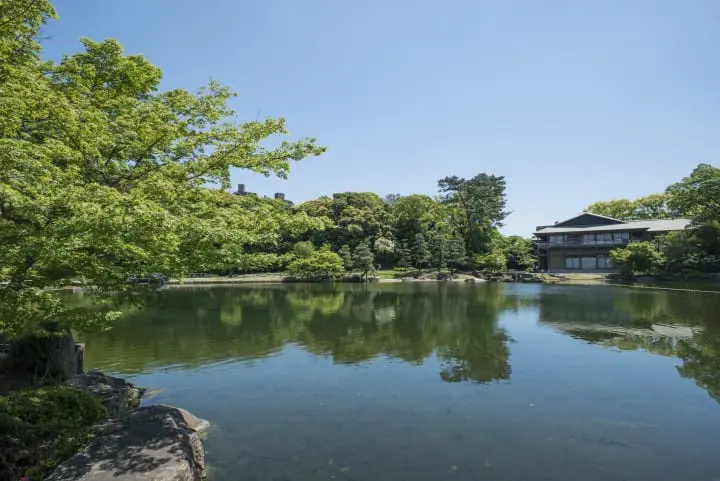
The Tokugawa Clan ruled Japan for 250 years since 1603, helping put an end to a warring period in the country. The Owari-Tokugawa Family is a direct descendant of the clan that played a vital role in Nagoya's development. The Tokugawa Garden was originally a grand garden, or daimyo teien(*4), which continues to be maintained today.
The garden is a fusion of natural and man-made landscapes, with rocks and streams scattered across the park, representing the natural scenery of Nagoya. You can also find restaurants and cafes remodeled from Meiji Period (1868-1912) buildings. Some places offer seats where you can enjoy your meal with a view.
The Tokugawa Art Museum is on the same premises as the garden. The museum exhibits various articles inherited by the Owari-Tokugawa Family. You can find armor, helmets and katana swords, and even national treasures like the Genji Monogatari Emaki (*5).
*4 Daimyo teien: A grand garden constructed at the residence of the feudal lord. The garden has rocks, ponds, and a bridge for guests to view. *5 Genji Monogatari Emaki: A picture scroll of a scene based off the novel "The Tale of Genji" that was written in the Heian Period (794-1185).

4. Experience Toyota's Technology and History

Picture courtesy of Toyota Commemorative Museum of Industry and Technology
The Toyota Commemorative Museum of Industry and Technology is a unique place to visit in Nagoya.
The museum building was originally built in 1918 and used to be a red-brick factory. At the museum, you will find exhibits of inventions of Toyota's founder Sakichi Toyoda, like automatic looms. In fact, the company's roots actually lie in weaving machinery. Sakichi Toyoda's eldest son, Kiichiro Toyoda, inherited his father's spirit for manufacturing and helped create what Toyota Motor Corporation is today.

Toyota Commemorative Museum of Industry and Technology

5. See Nagoya TV Tower and Gaze at Nature

Nagoya TV Tower is located at the center of the bustling shopping street of Sakae in Nagoya. After renovations, the tower reopened to visitors in 2020.
The tower is in the corner of Hisaya Odori Park, which runs north-south in the middle of the street. The 100-meter tall Nagoya TV Tower is actually the first consolidated radio tower in Japan. The sky balcony provides a sweeping view of the city.
During weekends and national holidays, visitors can access the sky balcony by climbing all the way up using the railed staircase, providing good exercise. However, as the staircase is open to the outside, it is not recommended for people who are afraid of heights.

Chubu Electric Power MIRAI TOWER
6. Visit the Future at Oasis 21

Oasis 21 is an impressive building with a massive elliptical shaped roof. It is located to the eastern side of Nagoya TV Tower. You can find shops and a bus terminal at the basement and a green lawn at the top, creating a space that is like an urban oasis. There is also a tourist information office inside.
The unique elliptical shaped roof is called the Spaceship-Aqua. Water flows on its glass surface, which visitors can walk on top of. At night, the area is illuminated with LED lights. It is fun to admire the magical night view of the city and to take photos here.

7. Local Food, Fashion, and Subcultures at Osu Shopping Street

Osu Kannon is a temple that was relocated to its current site by the first fuedal lord of the Tokugawa Shogunate, Tokugawa Ieyasu. Built around Osu Kannon is Osu Shotengai , a shopping district where you can find all kinds of shops selling all sorts of items, from food to entertainment.
Many shops here specialize in boutique brands, vintage clothing, or avant-garde fashion items, making it an ideal shopping destination for finding unique apparel.
Moreover, restaurants serving cuisines from countries all over the world such as Brazil, Turkey, and Taiwan are here. You can also find traditional Japanese confectioneries and picture-worthy sweets. Some must-try delicacies include Nagoya’s signature confectionery, Uiro (*5) from Osu Uiro, and sweet roasted Tianjin chestnuts from Imaiso Honke.
Similar to Akihabara in Tokyo and Osaka’s Nipponbashi, Osu Shopping Street is also known as an "electric town" and has many shops relating to Japanese subcultures. This is the place to go if you are looking for maid cafes, anime, and figurines.
*5 Uiro: Traditional Japanese confectionery made from rice flour and sugar. It has a chewy texture.

Osu shopping street

8. Tsuruma Park
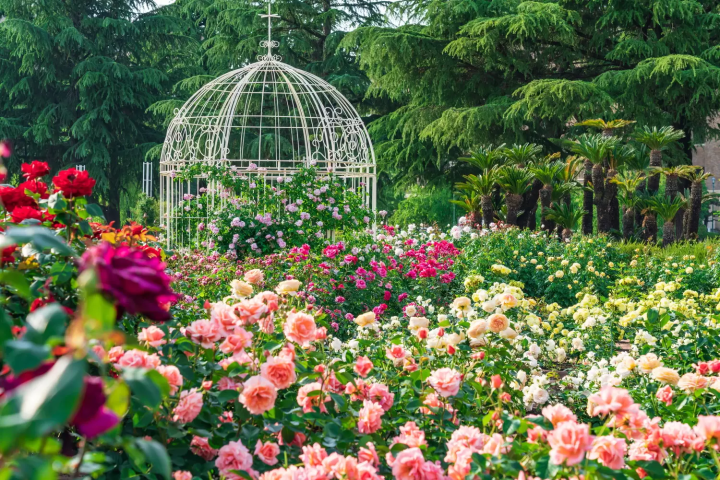
Photo by Pixta
Tsuruma Park, established in 1909, is the first public park in Nagoya City. This park combines modern French-style Western gardens with a Japanese garden featuring wandering paths, creating a harmonious blend of Eastern and Western aesthetics.
Tsuruma Park is a famous cherry blossom spot that attracts many visitors every April. Visitors can also enjoy approximately 120 varieties of roses and more!
Tsuruma Park Location: Tsurumai 1, Showa Ward, Nagoya, Aichi Official website: https://tsurumagarden.com/ (Japanese)

9. Atsuta Shrine, a Spiritual Spot Amid Nature
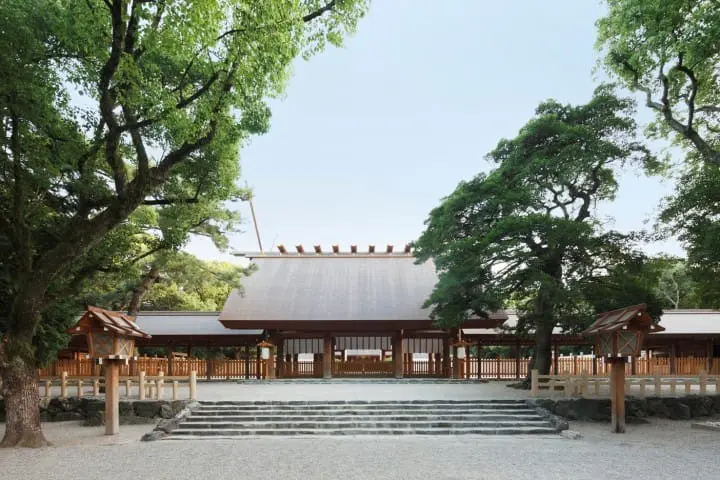
Picture courtesy of Atsuta Shrine
Atsuta Shrine , also known as Atsuta-san by locals, is a shrine with 1,900 years of history. This shrine houses one of Japan's sacred treasures (*7): the Kusanagi Sword. We recommend picking up a map at the entrance of the shrine, as the shrine yard is large.
Here you will find several smaller Shinto shrines, a treasure repository, and shops selling kishimen noodles, a signature Nagoya dish. Visitors can enjoy a different side of Nagoya while walking through the row of trees thought to be over one thousand years old.
*7: Sanshu no jingi: The three sacred treasures of Japan are believed to have been gifted by the emperor's ancestors and Amaterasu Omikami, the sun goddess. The treasure consists of a sword, a mirror, and a jewel. These items were handed down to the succeeding emperor as a proof of succession to the throne. Today, the sword is at Atsuta Shrine, the mirror is at Ise Grand Shrine and the jewel is at the Imperial Palace.

Atsuta Shrine

10. Shirotori Garden

Shirotori Garden , located near Atsuta Jingu Shrine, is a Japanese garden inspired by the terrain of the Chubu region. The garden features a motif where the constructed mountain represents Mount Ontake, the flowing stream symbolizes the Kiso River, and the pond where the water flows in resembles Ise Bay, portraying the "story of water" from the source to the great sea.
Opened in 1991, this garden is relatively new. Visitors can enjoy various flowers throughout the year, including cherry blossoms, and the popular illumination of autumn leaves during the fall season.
Shirotori Garden Location: Atsutanishi 2-5, Atsuta ward, Nagoya City Business Hours: 9:00 - 17:00 Official Website: http://www.shirotori-garden.jp/english/index.html
11. Noritake Forest

Noritake Forest is a complex facility opened by the ceramics manufacturer Noritake Company Limited in 2001. Spanning approximately 34,000 square meters, this site houses a museum dedicated to ceramics, shops, cafes, and restaurants. The facility also offers workshops where visitors can try their hand at painting ceramics.
Additionally, several buildings on the premises have been designated as part of the Modern Industrial Heritage Sites, making it popular for taking photos that are perfect for social media.
Noritake Forest Location: Noritake Shinmachi 3-1-36, Nishi ward, Nagoya City Business Hours: Vary by facility (Craft Center Museum is open from 10:00 to 17:00, closed on Mondays) Official website: https://www.noritake.co.jp/eng/mori/
12. The World's Biggest Planetarium at Nagoya City Science Museum
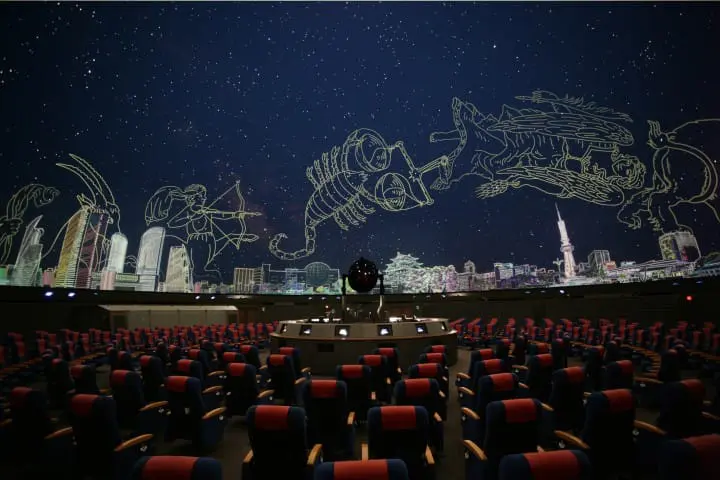
The Nagoya City Science Museum is famous for having the world's biggest planetarium. The museum is a fun learning facility where you can study about the earth and science. The planetarium is in the Guinness Book of Records for its diameter of 35 meters. It features a screening of a highly realistic starry sky and introduces interesting facts about the universe.
Visitors can also see an artificial tornado, electrical discharge, and visit the Deep Freezing Lab for a simulation of the polar regions at negative 30 degrees celsius. These are entertaining ways for both children and adults to learn science.

Nagoya City Science Museum
13. Family-Friendly LEGOLAND JAPAN and SCMaglev and Railway Park
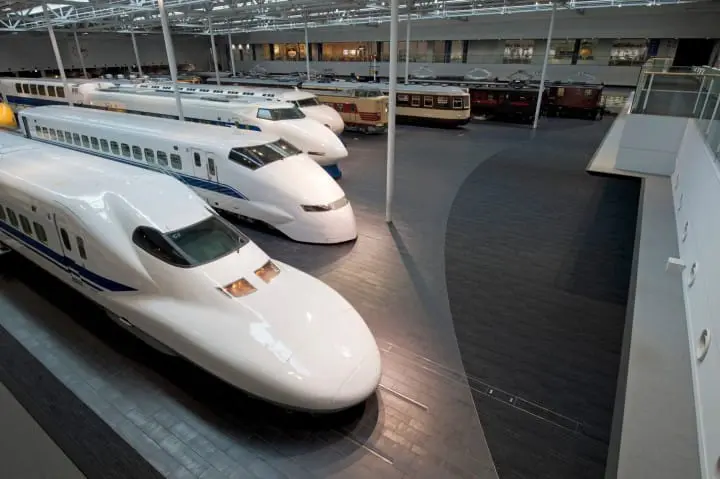
Picture courtesy of SCMaglev and Railway Park
Nagoya also has attractions ideal for families. Take the Aonami Line from Nagoya Station to Kinjo-futo Station for 24 minutes (350 yen). Here you will find LEGOLAND JAPAN , Japan's first Legoland park, and SCMaglev and Railway Park , a museum introducing Japan's high-speed railway.
LEGOLAND JAPAN's replica of Nagoya's cityscape at Lego Town and lego block-shaped snacks allow visitors to enjoy the imaginative world of lego. SEA LIFE Nagoya is an aquarium and a hotel that is connected to the park.
Legoland tickets are available for purchase online via Klook , a travel reservation platform, for a discounted price.
The SCMaglev and Railway Park is a museum operated by the Central Japan Railway Company, JR Tokai. Visitors here can see actual bullet trains and electric trains. The train driving simulator and linear simulation of a train running at 500 kilometers per hour is sure to be exciting for children of all ages.

LEGOLAND Japan

Maglev/Railway Hall

▶︎Book a hotel room at Legoland Japan Hotel on Booking.com

14. Experience Old Japan at Endoji Shopping Street and Shikemichi

Endoji Shopping Street

The streets of Shikemichi
Endoji Shopping Street and Shikemichi are historical shopping districts with traditional townscapes. This area is a 10 to 15-minute walk from Nagoya Station.
Endoji Shopping Street is filled with old shops and is often used for filming movies. It is particularly popular for having an interesting theater and a bouldering center.
Shikemichi has historical houses and warehouses with distinctive black colored walls which have survived severe damage from the war. In recent years, these buildings have been remodeled into cafes and restaurants. However, Shikemichi is also a residential neighborhood, so please be polite as you explore the area.

Endonji shopping street
Must-Try Food in Nagoya
Unique miso dishes: miso katsu and misonikomi udon.
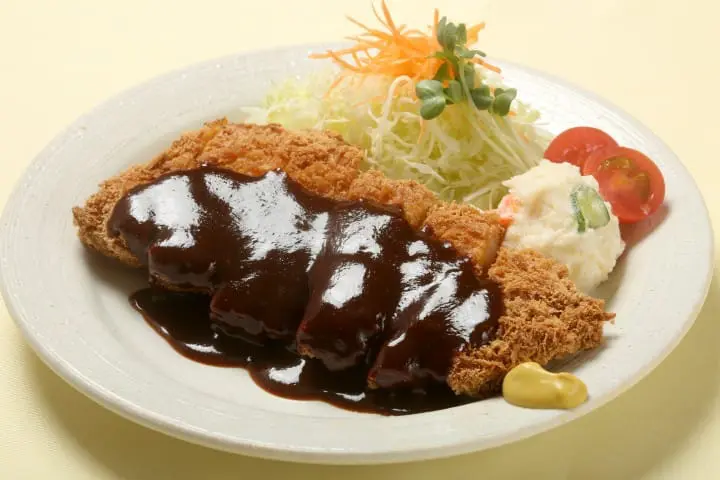
Nagoya has a unique food culture compared to other areas in Japan. In particular, Nagoya is known for dishes which use red miso, such as miso katsu (deep-fried cutlet), and misonikomi udon (thick noodles simmered in miso stew).
Different than other types of miso, red miso is made from a larger quantity of soybeans fermented over a longer period of time.
Although it has a deep color, it has a mild taste. It is suitable for recipes such as stews and miso soup, as it is capable of retaining its flavor even after cooking.
Miso katsu is a deep-fried pork cutlet dish covered in red miso sauce. It is a common dish, found at almost every restaurant and cafe in Nagoya. There are also specialty shops such as Yabaton , a popular miso katsu chain conveniently located in Nagoya Station and Chubu Centrair International Airport.

Misonikomi udon is a popular stew type of dish with thick noodles, vegetables, and chicken in red miso paste. It is served piping hot. The chewy noodles and strong miso flavor pair deliciously together. Yamamotoya Sohonke is a long-established store with many locations in the city.
Indulge in Hitsumabushi in Three Different Ways
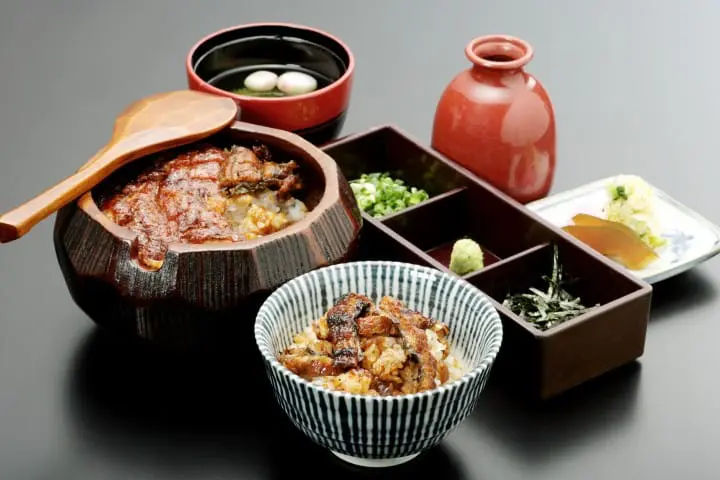
Eel is a popular Japanese food. Hitsumabushi is a local cuisine of Nagoya made with eel. It is a rice dish topped with sliced grilled eel brushed with sauce. People in Nagoya have an original way of enjoying this dish.
Hitsumabushi is served in a similar way as unadon (eel rice bowl) and unaju (broiled eel served over rice in a lacquered box). However, it comes with condiments like spring onions and wasabi, and a serving of dashi broth. Adjust the flavors by adding on condiments, and the dashi can be used to enjoy the eel as ochazuke (rice with tea). With so many different ways to enjoy hitsumabushi, it is hard to tire of this interesting dish.
Atsuta Horaiken , a reputable restaurant famous for their hitsumabushi, is located right in front of Atsuta Shrine.
Pasta with a Hearty Sauce: Ankake Spaghetti

Ankake Spaghetti is a signature Nagoya dish that is features a unique take on Italian cuisine.
After being boiled, the spaghetti is fried with oil and topped with a thick tomato sauce. This filling dish is full of flavor. You can also pick different toppings for the spaghetti like sausages, vegetables, and fried fish.

Nagoya's Sweets: Ogura Toast
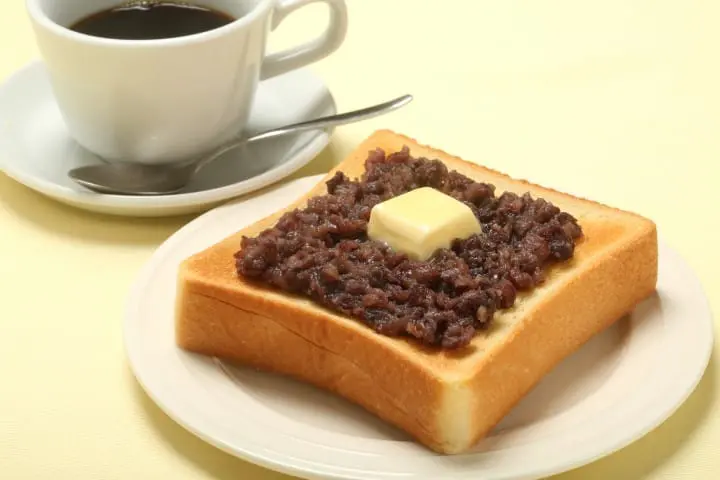
Ogura toast is toast topped with sweet red adzuki beans. Many cafes in Nagoya offer morning service , during which you can enjoy breakfast. Order a drink and you will receive complimentary items such as toast and eggs. A classic menu item is ogura toast.

Recommended Itinerary in Nagoya
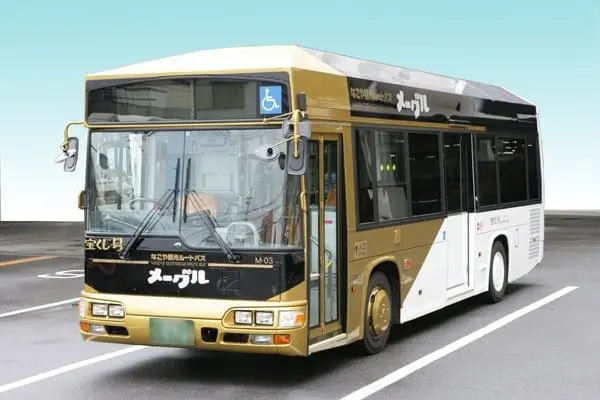
Me-guru, Picture courtesy of Nagoya Convention & Visitors Bureau
The Me-guru Nagoya Sightseeing Route Bus is a convenient way to visit many popular tourist spots in Nagoya. A one-day pass costs 500 yen.
Places such as Toyota Commemorative Museum of Industry and Technology, Shikemichi, Nagoya Castle, Tokugawa Garden, Nagoya TV Tower, and Oasis 21 are all included on the bus route. One-day passes are available for purchase on Me-guru busses.
You can board the bus at Nagoya Station Bus Terminal Bus Stop No. 11 at Nagoya Station.
One Day Itinerary with the Me-guru Sightseeing Bus
Breakfast Enjoy morning service at a cafe in Nagoya Station's underground shopping center. Morning Learn about the Toyota company at Toyota Commemorative Museum of Industry and Technology. Lunch Take a walk around Shikemichi and have lunch at a restaurant inside the renovated traditional Japanese houses. Afternoon Visit Nagoya Castle and explore Tokugawa Garden. Night Take a commemorative photo at Oasis 21 and view the cityscape at night. Dinner From Sakae Station, visit the bustling shopping district and have your fill of local cuisine, like misonikomi udon.
The places introduced in this article will allow you to enjoy a comprehensive tour of Nagoya in one day. If you are visiting for two to three days, you can see the city at a more relaxed pace and try more regional specialties.
Me-guru Nagoya Sightseeing Route Bus : https://www.nagoya-info.jp/routebus/
How to Travel to Nagoya

The most convenient way to get from Tokyo to Nagoya is by bullet train . For details please read the article linked below.

International visitors can use the JR PASS to travel by train at discounted rates.
From Nagoya Station or the Chubu Centrair International Airport, you can conveniently reach destinations such as Ghibli Park or Nagoya Castle by rental car.
MATCHA's readers can use a 10% discount voucher for renting a car from Nippon Rent-a-Car , one of the largest rental car services in Japan.
Prepare for Your Nagoya Trip! Book Accommodation and WiFi
If you've already booked your tickets for Nagoya, you'll also probably want to look for hotels.
You can find good accommodation at conveninet prices by using Booking.com or Agoda .
You might also need a WiFi connection since the places that offer free internet connections in Japan are still quite limited. Renting a pocket WiFi is very convenient for travelers. Using the 20% discount voucher below to rent Ninja-WiFi, one of the most popular portable internet services in Japan.

Is it worth visiting Nagoya?
Nagoya, a city in central Japan, offers a blend of history, unique attractions, culinary delights, and industrial significance that make it worth visiting. From cultural landmarks like Nagoya Castle and Atsuta Shrine to the culinary experiences of Hitsumabushi and Miso Nikomi Udon, the city showcases Japan's heritage and local flavors. With Toyota's presence highlighting its industrial prowess and events like the Nagoya Festival adding vibrancy, Nagoya provides a diverse experience for travelers seeking a mix of tradition, innovation, and cultural immersion. Assessing personal interests can help determine the city's worth as a captivating destination in Japan.
What is Nagoya popular for?
Nagoya, a city in central Japan, is known for its blend of history and modernity. Highlights include Nagoya Castle and Atsuta Shrine, cultural spots like Osu Kannon District, and the Tokugawa Art Museum. The city's automotive industry ties to Toyota, while culinary delights such as Hitsumabushi and Miso Nikomi Udon showcase Nagoya's local flavors. Modern landmarks like Oasis 21 and annual events like the Nagoya Festival add to the city's dynamic appeal, making Nagoya a vibrant destination for exploring Japan's diverse offerings.
How many days in Nagoya is enough?
The ideal duration for a visit to Nagoya depends on your interests and the depth of exploration you seek. Spending one to two days in Nagoya provides a quick overview, allowing you to visit major attractions like Nagoya Castle and Osu Kannon Temple. Extending your stay to two to three days offers a more leisurely exploration of the city's cultural sites and museums. With four or more days, you can immerse yourself further in Nagoya and its surroundings, including day trips to destinations like Inuyama Castle or Gero Onsen. Tailoring your itinerary to match your specific interests and preferences will help determine the optimal length of stay in Nagoya.
Is Nagoya better than Fukuoka?
Deciding between Nagoya and Fukuoka comes down to personal preferences and interests. Nagoya offers historical sites like Nagoya Castle, a prominent culinary scene with local delights such as Hitsumabushi, and insights into Japan's automotive industry with Toyota's presence. In contrast, Fukuoka boasts natural beauty, hot springs, and a vibrant cultural scene with traditional festivals and Hakata ramen. Whether you prefer history, culinary experiences, and industrial insights in Nagoya, or nature, cultural vibrancy, and convenient airport access in Fukuoka, your choice between the two cities should align with your travel priorities and preferences.
Can I use the Suica card in Nagoya?
Yes, you can use the Suica card in Nagoya for making purchases at stores or vending machines that accept IC cards. However, for transportation on trains and buses in Nagoya, you would need to use the local IC card called TOICA or other regional IC cards like Manaca.
What to do in Nagoya for a day?
In Nagoya for a day, start by exploring Nagoya Castle and the Tokugawa Art Museum in the morning. Enjoy a traditional Nagoya meal for lunch and then visit Osu Kannon Shopping Arcade and Osu Kannon Temple in the afternoon. Head to Sakae in the late afternoon for shopping and dining, including a visit to the Oasis 21 complex. Consider ending the day with dinner in Sakae or a visit to the SCMAGLEV and Railway Park for a unique experience. This itinerary balances historical sightseeing, cultural exploration, shopping, and dining, offering a taste of Nagoya's diverse attractions in a day. Adjust activities based on personal interests and time constraints.
Enjoy Your Trip to Nagoya!
Nagoya developed as a city around Nagoya Castle more than 400 years ago. Today, it is known for its manufacturing and helps support Japan's development.
The history and culture of Nagoya can be experienced at the sightseeing spots introduced in this article. We believe that you will make many new discoveries exploring this fascinating city!

This is an updated version of an article originally published in 2018. Main image by Pixta
The MATCHA editorial department. Our articles feature useful travel information for visitors to Japan, from how-to guides to recommended places to visit.
Related topics
Top articles.

How to Travel to Nagoya From Tokyo: A Thorough Comparison 2023

Related Article

Hiroshima: 35 Things to Do and Travel Tips 2024

Tokyo Travel Guide 2024: Top 35 Things to Do

Osaka: 52 Things to Do and Places to Visit

Kyoto: 50 Things to Do, Places to Visit, Hotels, and Travel Tips

Aichi Travel Guide: Great Places to Visit in Nagoya, Inuyama, Toyota, and More

Nagoya Day Tour - Famous Places And Excellent Local Food

Okayama and Kurashiki Travel Guide: Sightseeing, Local Food, Festivals

Nagoya Travel Guide: Check Out This Modern Yet Ancient City In Aichi

Mie Travel Guide: 28 Sightseeing Spots, Food, Souvenirs, and More!
Start planning your trip
Special Features

Popular Searches
Latest news.

Showa Kinen Park Flower Festival 2024: Enjoy Nemophila, Tulips, and More!

A Must for Nature Lovers! Win a Free Stay at Unzen Amakusa National Park

A World of Light and Color! Van Gogh Alive in Japan 2024

Cherry Blossom Light-up in Tokyo! Yomiuri Land's Jewellumination

Cherry Blossoms and Sky Lanterns! Aichi Hanami Lights 2024

Japan's Public Holidays and Long Weekends in 2024

Aeon Mall Okinawa Rycom: A Shopping Mall Featuring a Resort Aura

Suica and Pasmo IC Cards: Prepaid Transportation Passes in Japan

Riding Taxis in Japan: The 6 Best Apps to Grab a Cab

How to Travel to Kyoto From Osaka: The Fastest and Cheapest Ways
New articles.

[Northern Okinawa] Enjoy the ocean at Busena Marine Park! We'll introduce you to the best ways to enjoy it and the surrounding tourist facilities.

[2024Renovation] A hotel worthy of being the base for a trip to experience the World Natural Heritage site "Yanbaru"

[Northern Okinawa]The observatory at Nagojo Park is superb! Little-known spot where children and adults can enjoy

[Northern Okinawa]18 sightseeing spots and gourmet foods in Nago City! Enjoy play, nature, and food in Nago!

About the product [sample incense] sold at the shop
Top 30 Nagoya Tourist Attractions
Nagoya, one of Japan’s leading metropolises, is home to historical landmarks such as Nagoya Castle and Atsuta Shrine, Osu Shopping Street and Kinshachi Yokocho where you can enjoy Nagoya gourmet food, Oasis 21 where you can take Instagram-worthy photos, and places to visit with your family.
There are lots of fun tourist attractions such as Tai Legoland (R) and Japan Resort!
Introducing the popular ranking of tourist spots in Nagoya and the latest information on things to do in Nagoya, selected by Japan Truly readers.
Page Contents
Top Nagoya Tourist Attractions
Nagoya castle.
Nagoya Castle , a Tokugawa clan stronghold, is famed for its golden shachihoko ornaments, the city’s symbol. Once Japan’s first national treasure castle, it boasted the largest castle tower ever built.
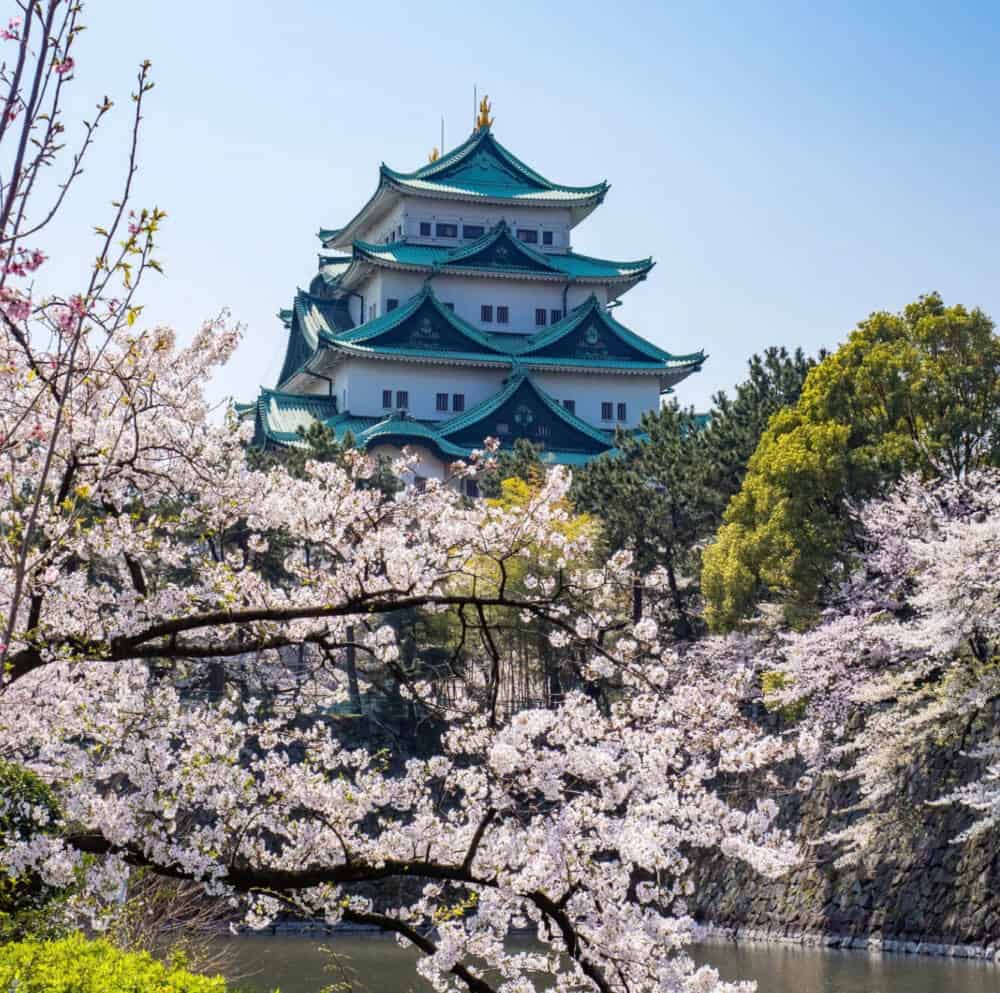
Built in 1612 by Tokugawa Ieyasu, victor of Sekigahara, it guarded against the Toyotomi clan. Though destroyed in WWII, Nagoya meticulously restored it.
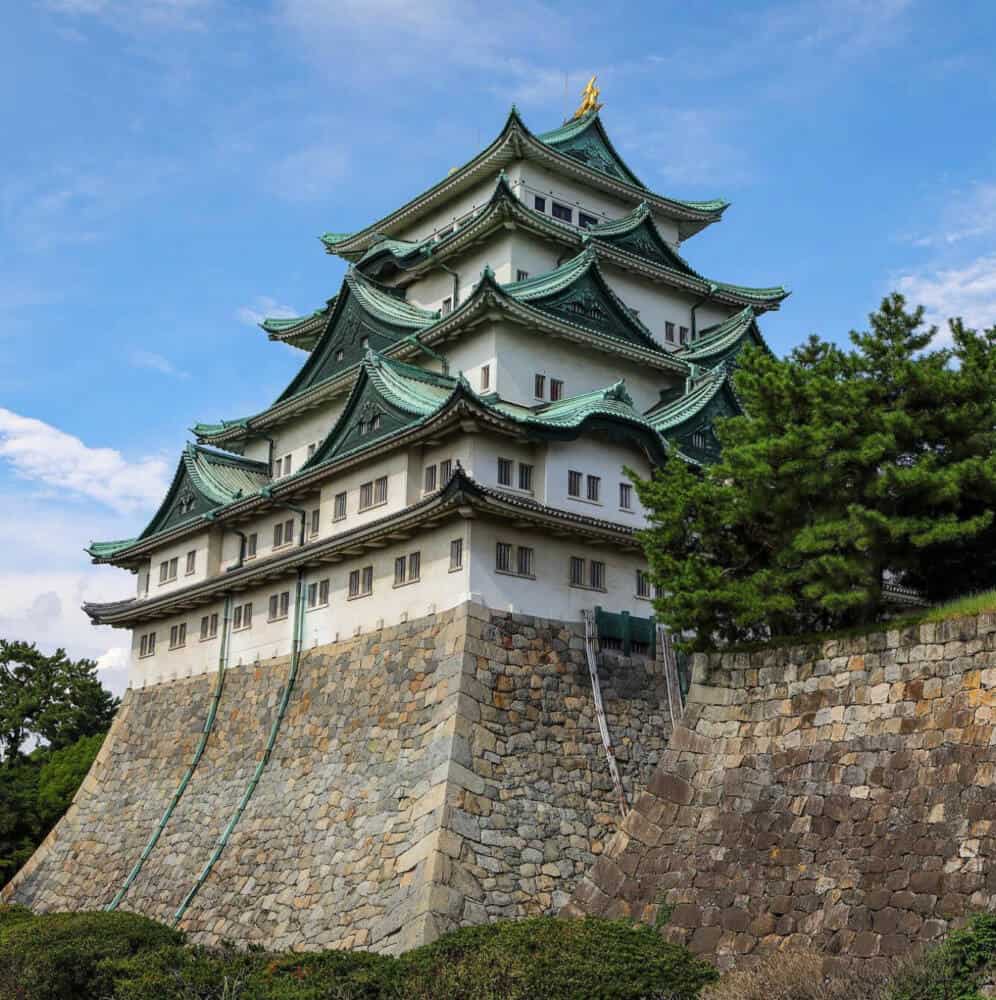
Explore the Honmaru Palace, residence of feudal lords, and marvel at the Kano school’s artistry in the Omote Shoin audience room. Tour the war-surviving Sumiyagura building and unwind in the vast Ninomaru Garden. Don’t miss Kinshachi Yokocho, a haven of local delicacies!
- Address : 1-1 Honmaru, Naka-ku, Nagoya, Aichi Prefecture
- Access : 5 minutes walk from Exit 7 of Nagoya Castle on the Meijo Subway Line, 15 minutes walk from Higashi Ote Station on the Meitetsu Seto Line
- Related: Guide to Koenji Tokyo’s Retro Hub
Atsuta Shrine
Steeped in 1,900 years of history, Atsuta Jingu ranks second only to Ise Shrine as a protector of Japan. Explore its vast grounds, offering year-round festivals (check their website!).
Three entrances make access easy: East Gate near Meitetsu Jingumae and JR Atsuta Stations, West Gate near Atsuta-Jingu Nishi Station, and South Gate near Atsuta-Jingu Denmacho Station.
Within the sprawling 190,000-square-meter precincts, discover a legendary camphor tree (planted by Kobo Daishi 1,000 years ago!) and the serene Kokoro no Komichi path (opened in 2012).
Witness the vibrant culture through 70 annual rituals and festivals, including the prestigious Atsuta Festival on June 5th, featuring fireworks and imperial messengers.
After exploring, unwind at the charming Atsuta Jingu Shopping Street with its retro cafes and sweet treats.
- Address: 1-1-1 Jingu, Atsuta-ku, Nagoya, Aichi Prefecture
- Access: 3 minutes walk from Jingumae Station on the Meitetsu Nagoya Main Line
Esca Underground Shopping Center
Esca, right by JR Nagoya Station’s Shinkansen platform, is your gateway to Nagoya’s delights.
Discover local specialties at souvenir shops, or dive into Nagoya’s culinary scene with restaurants serving miso cutlet, miso nikomi udon, kishimen, and Nagoya Cochin.
This arcade, open since 1964, offers a taste of Nagoya from breakfast cafes to takeout options.
Savor hitsumabushi, miso katsu, miso nikomi udon, tebasaki (chicken wings), and kishimen.
Need souvenirs? Esca’s got you covered! Plus, find convenience stores, fast fashion, ticket shops, and beauty salons for a pick-me-up before hitting the town.
- Address : 6-9 Tsubaki-cho, Nakamura-ku, Nagoya, Aichi Prefecture
- Access : 1 minute walk from JR “Nagoya Station”
JR Central Towers/JR Gate Tower
Soaring above JR Nagoya Station, JR Central Towers and JR Gate Tower are iconic landmarks. Take a break from shopping and soak in panoramic views, or delve into the massive restaurant district, boasting one of Japan’s largest selections!
These three towers form a complex directly connected to the station. Inside, discover department stores, hotels, offices, electronics stores, fast fashion, and more.
A must-see is the 15th-floor Sky Street, featuring a breathtaking glass wall. On clear days, admire the distant Tokai mountains like Mt. Ontake and Mt. Norikura. At night, witness the dazzling cityscape come alive.
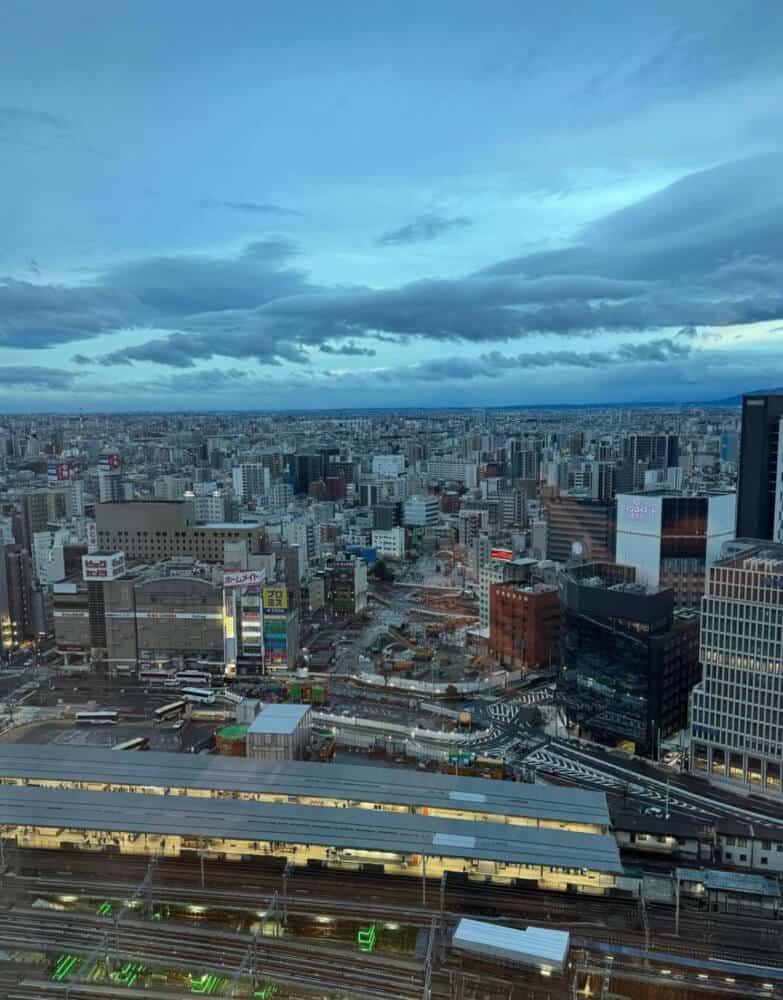
If you gettin’ hungry, head to the Towers Plaza/Gate Tower Plaza Restaurant District on the 12th and 13th floors. With over 70 restaurants across both buildings, you’ll find everything from Japanese fare to Western cuisine, Chinese delights, and Asian specialties.
- Address : JR Central Towers, 1-1-4 Meieki, Nakamura-ku, Nagoya, Aichi Prefecture / JR Gate Tower, 1-1-3 Meieki, Nakamura-ku, Nagoya, Aichi Prefecture
- Access : Directly connected to Nagoya Station (Tokaido Shinkansen, JR conventional Lines (Tokaido Main Line, Chuo Main Line, Kansai Main Line), Meitetsu Line, Kintetsu Line, Subway (Higashiyama Line, Sakuradori Line), Aonami Line)
Nagoya City Higashiyama Zoo and Botanical Garden
Immerse yourself in nature at the sprawling Higashiyama Zoo and Botanical Garden, covering 60 hectares.
This all-day adventure park offers a zoo, botanical gardens, an amusement park, and even the Higashiyama Sky Tower!
The zoo itself boasts the most animal species in all of Japan, with over 450 fascinating creatures, including endangered species like Asian elephants, koalas, red pandas, and western gorillas.
Explore the diverse plant life at the botanical garden, showcasing 7,000 varieties across various natural landscapes. Witness the changing seasons, from spring’s cherry blossoms to vibrant autumn leaves.
Don’t miss the greenhouse front building, a nationally designated treasure known as the “best crystal palace in the East.” Here, you can marvel at tropical and subtropical flora year-round.
- Address: 3-70 Higashiyama Motomachi, Chikusa-ku, Nagoya, Aichi Prefecture
- Access: Approximately 3 minutes walk from Exit 3 of Higashiyama Koen on the Nagoya Municipal Subway Higashiyama Line
Osu Shopping Street
Unleash your shopping spree at Osu Shopping Street, Nagoya’s largest with over 1,200 stores! Immerse yourself in the city’s vibrant culture through year-round events.
Spring brings the lively Osu Spring Festival (Mucha Baisai), where 120 stores offer incredible deals. Witness the colorful Oiran Dochu parade, where participants dress as flamboyant courtesans.
In summer, the Osu Summer Festival pulsates with energy. Fall welcomes the Osu Daido Townspeople Festival, and winter ushers in the unique Osu Setsubun Treasure Ship Procession. Don’t miss out on experiencing Nagoya’s cultural heart
- Address: 2-3 Osu, Naka-ku, Nagoya, Aichi Prefecture
- Access: 2-minute walk from Exit 8 or Exit 12 of Kamimaezu Station on the Meijo Subway Line and Tsurumai Line, 2-minute walk from Osu Kannon Station on the Tsurumai Subway Line 3 minutes walk from Exit No.
Port of Nagoya Public Aquarium
Dive into an aquatic wonderland at the Port of Nagoya Public Aquarium, a leader among Japanese aquariums. Witness over 50,000 creatures from 500 species!
View this post on Instagram A post shared by miki yasue (@miki_ank320)
Marvel at impressive dolphin performances in the massive main pool, one of Japan’s largest. Be charmed by the public training sessions of the adorable beluga whales.
Don’t miss the mesmerizing “Sardine Tornado,” where thousands of sardines swirl in a synchronized dance! This aquarium is a feast for the senses, showcasing the wonders and beauty of the underwater world.
- Address: 1-3 Minato-cho, Minato-ku, Nagoya, Aichi Prefecture
- Access: 5 minutes walk from Exit 3 of Nagoya Port Station on the Nagoya Municipal Subway
Tokugawa Art Museum
Step back in time at the Tokugawa Art Museum, a venerable institution established in 1935. Explore over 10,000 treasures passed down through generations of the Owari Tokugawa family, descendants of Tokugawa Ieyasu.
Marvel at 9 National Treasures, including the iconic “Tale of Genji Emaki” scroll, one of Japan’s most prized artworks. Don’t miss the 59 Important Cultural Properties, showcasing the family’s exquisite taste and the pinnacle of Japanese craftsmanship.
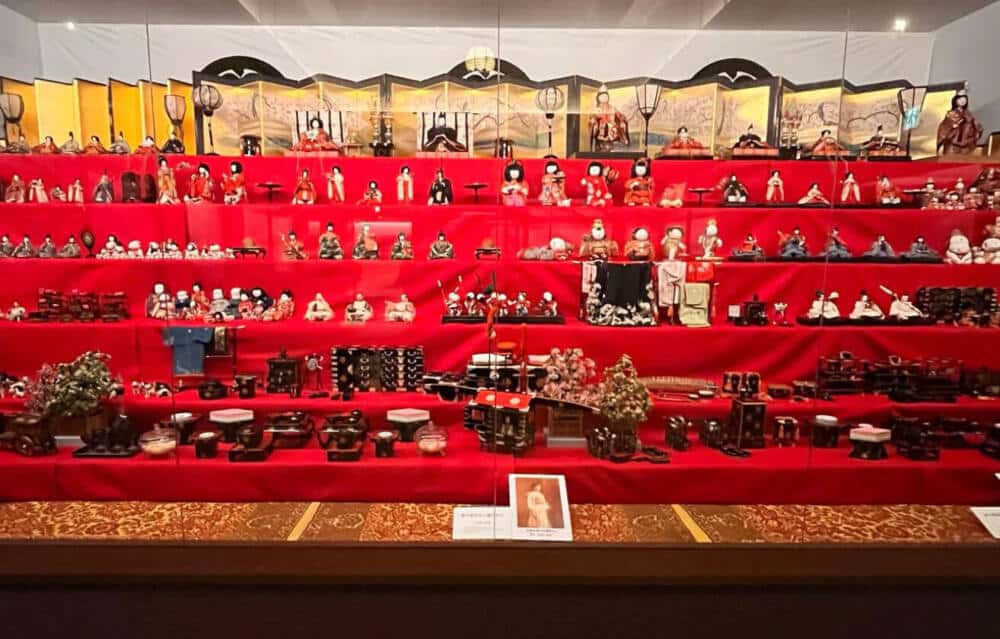
Walk in the footsteps of feudal lords within a partially restored section of Nagoya Castle’s Ninomaru Palace.
Free guided tours are offered three times daily on weekdays, providing deeper insights into this historic collection.
- Address: 1017 Tokugawa-cho, Higashi-ku, Nagoya City, Aichi Prefecture
- Access: 10 minutes’ walk from the south exit of Ozone Station on the JR Chuo Main Line, 3 minutes’ walk from the Tokugawaen Shindeki bus stop on the main city bus route.
Immerse yourself in history at Osu Kannon, a revered Buddhist temple and one of Japan’s three major Kannon temples (alongside Asakusa Kannon and Tsu Kannon).
Locals know it by this nickname, though its official name is Kitanosan Shinpukuji Hoshoin. Founded in 1333 and relocated by Tokugawa Ieyasu in 1612, the temple boasts a rich past.
Explore its collection of 15,000 ancient documents, including national treasures and even the oldest manuscript of Japan’s Kojiki chronicle.
Spring paints the temple grounds with vibrant blooms, creating a picture-perfect scene. Twice a month, an antique market comes alive within the spacious grounds.
This bustling energy extends to the nearby Osu Shopping Street, renowned as one of Japan’s most lively shopping districts.
- Address: 2-21-47 Osu, Naka-ku, Nagoya, Aichi Prefecture
- Access: 2 minutes walk from exit 2 of Osu Kannon Station on the Nagoya Subway Tsurumai Line
Oasis 21 is a multi-level park offering a unique blend of nature and urban energy.
Soar 14 meters above ground on a skyward stroll through the spaceship-shaped “Spaceship Aqua,” a glass rooftop awash with natural light.
Below, unwind in the verdant “Field of Green” or explore the vibrant “Galaxy Platform” with its 30 shops and eateries.
Come nightfall, “Spaceship Aqua” transforms into a magical spectacle, adorned with seasonal illuminations and special lighting displays. This captivating landmark is a must-see for any Nagoya visitor.
- Address : 1-11-1 Higashizakura, Higashi-ku, Nagoya, Aichi Prefecture
- Access : Immediately outside the east ticket gate of Nagoya Municipal Subway Higashiyama Line/Meijo Line “Sakae Station” (directly connected to the station)
Step back in time at Tokugawaen, a captivating Japanese garden reflecting the grandeur of the Edo period.
Stroll along the pond’s edge, admiring the symbolic landscape design and impressive stonework reminiscent of samurai power.
Explore the park’s varied terrain, taking in the vibrant blooms of peonies and irises throughout the year, and the blaze of autumn leaves.
Designated cultural properties within the park, like the well-preserved “Tokugawaen Kuromon” gate, offer a glimpse into the garden’s rich history.
- Address: 1001 Tokugawa-cho, Higashi-ku, Nagoya City, Aichi Prefecture
- Access: From Nagoya Station, take the bus terminal number 10 and get off at the “Tokugawaen Shindeki” stop on the main city bus line 2, then walk 3 minutes
Nagoya City Science Museum
Unveiling the wonders of science like a theme park, Nagoya City Science Museum is a must-visit.
The giant domed sphere is a striking landmark, housing the Guinness World Record-holding “Brother Earth” planetarium – one of the world’s largest, with a mesmerizing 35-meter inner diameter.
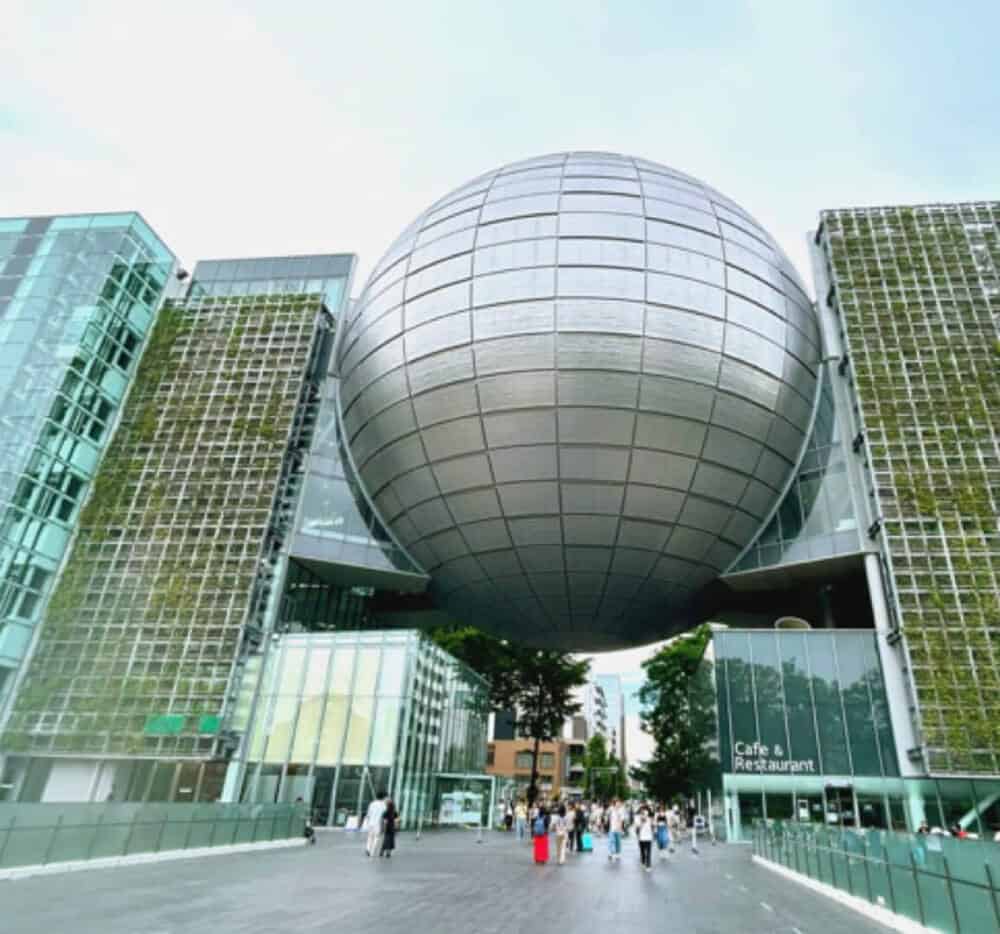
Embark on a cosmic adventure in the planetarium’s reclining seats, complete with live commentary from a curator. Witness a starry sky recreated with breathtaking realism.
The museum itself boasts three exciting halls: Science and Engineering, Astronomical, and Life.
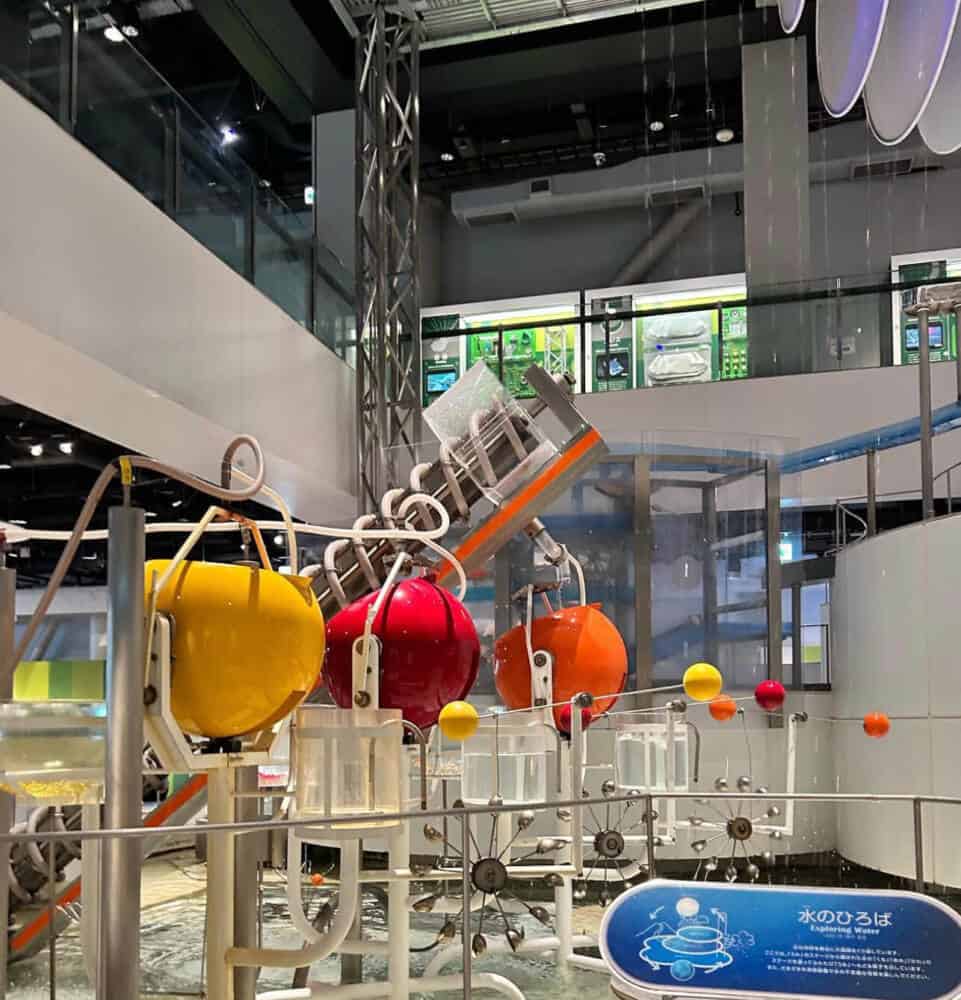
Brace yourself for a -30°C room showcasing mesmerizing auroras, or witness the power of a 9-meter-tall artificial tornado!
Don’t miss the “Museum Café” with its unique space-themed menu, featuring delights like “Space Ramen” and the red bean and cream-filled “Ogura Dock.” For a science-inspired souvenir, head to the “Museum Shop.”
- Address: 2-17-1 Sakae, Naka-ku, Nagoya City, Aichi Prefecture, Shirakawa Park, the Forest of Art and Science
- Access: Get off at Fushimi Station on the Higashiyama Subway Line and Tsurumai Line, and walk 5 minutes south from exits 4 and 5. Minutes
Outdoor Observation Deck “Sky Promenade”
Ascend to breathtaking new heights at Sky Promenade, Nagoya’s crown jewel observation deck.
Located on the 44th to 46th floors of the iconic Midland Square skyscraper, this open-air paradise offers unparalleled panoramic views.
Unwind on the expansive strolling deck – soak in the city’s daytime majesty or be dazzled by the twinkling cityscape at night.
Find your perfect spot to relax: the serene deck bench area with its wooden staircase benches, the comfortable outdoor sofas with tables, or the chaise longues nestled on a patch of artificial grass.
Feeling stylish? Perch yourself at a high table with a sleek artificial marble top.
For the ultimate Instagram moment, strike a pose on the cloud-shaped chairs at the dedicated photo spot – your pictures will scream “floating on air”!
- Address: 44-46th floor, Midland Square, 4-7-1 Meieki, Nakamura-ku, Nagoya (Entrance is on the 42nd floor)
- Access: 5 minutes walk from JR “Nagoya Station”, Meitetsu/Kintetsu “Nagoya Station” 3 minutes walk, approximately 1 minute walk from Nagoya Subway Station *Directly connected to 5 entrances to Midland Square from Meieki Underground Mall Sunroad
Kinshachi Yokocho
Devour Nagoya’s culinary delights at Kinshachi Yokocho, a gourmet haven steps from Nagoya Castle! This two-zone food paradise caters to every craving.
Step back in time at the Yoshinao Zone, named after the first Owari Tokugawa lord. Here, tradition reigns supreme. Wooden buildings reminiscent of Edo-period merchant houses house 12 renowned Nagoya Meshi restaurants and local favorites.
Savor the city’s signature dishes and discover one-of-a-kind menus exclusive to Kinshachi Yokocho.
Don’t miss the souvenir shop brimming with Nagoya specialties, where a full-size Kinshachi replica awaits your perfect photo op!
Seeking something trendy? Head to the Muneharu Zone, named after the 7th Tokugawa lord. Embracing “new style and change,” this area boasts 8 vibrant restaurants with large glass facades.
Innovative chefs, on the rise to national acclaim, offer creative takes on Nagoya cuisine. The zone stays open until 10 pm, so you can indulge in a delicious meal after exploring the illuminated castle!
- Address: Yoshinao Zone: 1-2-3-5 Sannomaru, Naka-ku, Nagoya, Aichi Prefecture / Muneharu Zone: 1-2-3, Ninomaru, Naka-ku, Nagoya, Aichi Prefecture
- Access: Yoshinao Zone: Subway Meijo Line “Nagoya” 10 minutes walk from Exit 7 of Nagoya Castle on the Subway Meijo Line / Muneharu Zone: Immediately from Exit 7 of Nagoya Castle on the Meijo Subway Line
Toyota Commemorative Museum of Industry and Technology
Journey through Toyota’s innovative spirit at the Toyota Commemorative Museum of Industry and Technology!
Established by 17 Toyota companies, this museum safeguards a treasured piece of history – a red-brick Taisho era factory, the birthplace of Toyota’s legacy.
Explore the fascinating evolution of technology through engaging exhibits. Witness real textile machinery come alive with demonstrations, showcasing the roots of the company.
Interactive displays and explanations by knowledgeable staff unveil the transformation from textiles to automobiles.
Immerse yourself in Toyota’s automotive journey. See production machinery in action, feel the power of the assembly line, and admire rows of historic vehicles. The museum shop, restaurant, cafe, and library offer a delightful way to extend your visit.
- Address: 4-1-35 Noritake Shinmachi, Nishi-ku, Nagoya, Aichi Prefecture
- Access: 3 minutes walk from Sakae Station on the Meitetsu Nagoya Main Line
Escape the urban bustle at Meijo Park, a sprawling 80-hectare oasis north of Nagoya Castle.
Lush forests and a babbling stream wind through the park, creating a serene atmosphere.
Relax on the grassy fields, bask in the beauty of seasonal flowers, or capture a photo with the iconic Dutch windmill as your backdrop.
For a dose of floral enchantment, head to the Meijo Park Flower Plaza, a haven for flower-themed events.
After exploring, unwind at the Flower Cafe, a charming spot where you can sip on beverages, savor delicious desserts, and admire vibrant blooms all around – a perfect pitstop to refresh after a walk in this picturesque park.
- Address: 1-2-25 Meijo, Kita-ku, Nagoya, Aichi Prefecture
- Access: 3 minutes walk from Exit 2 of Meijo Park on the Meijo Subway Line
Higashiyama Sky Tower
Soaring 100 meters above Higashiyama Park, the Higashiyama Sky Tower offers breathtaking panoramic views of Nagoya’s iconic landmarks. This observation deck, perched at 180 meters above sea level, promises an unforgettable vista.
View this post on Instagram A post shared by masa📷 (@masa34_canon)
New in Fall 2023, “Moet & Dining” graces the top floor, inviting you to indulge in a delectable Italian meal while captivated by the dazzling cityscape. (Please note, accessing the restaurant requires a separate 300 yen admission fee for the Sky Tower, and reservations are only available for evening hours.)
Seeking a touch of romance? The Sky Tower has been designated a “Lover’s Sanctuary,” making it the perfect spot to pop the question!
Write a heartfelt message on a heart-shaped strap and display it on the “Compass of Love” monument on the 4th-floor observation deck for an unforgettable memory.
- Address: 1-8 Bingo, Tashiro-cho, Chikusa-ku, Nagoya, Aichi Prefecture
- Access: Exit 6 of Hoshigaoka Station on the Higashiyama Subway Line and turn left (toward Hoshigaoka Terrace) for about 15 minutes, then take the Higashiyama Subway Line From Higashiyama Koen Station, exit 3, head south (toward the main gate of Higashiyama Zoo and Botanical Garden) for about 15 minutes.
Maglev/Railway Museum: Museum of dreams and memories
Take the controls of the life-size “Shinkansen Simulator N700” (fee applies) and experience the rush of piloting a high-speed bullet train.
Explore Japan’s largest, meticulously detailed railway diorama, then delve deeper into the fascinating world of technology with exhibits showcasing the inner workings of Shinkansen and the futuristic superconducting maglev.
Whether you’re a train enthusiast or simply curious, there’s something for everyone at this interactive museum.
For the little ones, a dedicated “kids corner” provides a fun and engaging space for play.
Additionally, a nursing room and a multipurpose restroom ensure a comfortable visit for all. Be sure to check the official website to stay updated on exciting events held mainly on weekends!
- Address: 3-2-2 Kinjofuto, Minato-ku, Nagoya, Aichi Prefecture
- Access: From Nagoya Station, get off at Kinjofuto Station on the Aonami Line and walk for about 2 minutes (24 minutes one way between Nagoya Station and Kinjofuto Station)
Tsurumai Park
Established in 1909 as Nagoya City’s first public park, it’s a cherished haven for locals seeking relaxation.
Immerse yourself in vibrant blooms – cherry blossoms paint the spring, roses perfume the summer air, and irises add a touch of elegance.

The park’s rich history resonates in landmarks like the fountain tower, the Universal Selection Memorial Platform, and the Music Hall. Notably, in 2009, much of the park earned national recognition as a registered scenic monument.
Exciting news for foodies! May 2023 saw the grand opening of “TSURUMA GARDEN” – a vibrant commercial complex within the park.
Here, you can indulge in an array of gourmet delights, from savory meat dishes to delectable sweets. Spread out a picnic blanket on the lush lawn and savor your treats while surrounded by nature’s splendor
- Address: 1 Tsurumai, Showa-ku, Nagoya, Aichi Prefecture
- Access: Immediately from Exit 4 of Tsurumai Station on the JR Chuo Line or Tsurumai Municipal Subway Line
Chubu Electric Power Mirai Tower
Unwind at the cafe inside the tower, taking in captivating panoramic views. Soak up the cityscape from the “Sky Deck” (indoor, 90-100 meters above ground) or challenge yourself to the open-air “Sky Balcony” for unparalleled vistas.
At night, the city transforms into a dazzling spectacle, certified as a “Japanese Night View Heritage.” Witness this magical scene come alive with a breathtaking 360-degree projection mapping event.
This innovative tower takes guest experiences even further. In 2020, it unveiled the world’s first in-tower hotel! Designed by talented artists from the Tokai region, this unique accommodation promises an unforgettable stay.
- Address: 3-6-15 Nishiki, Naka-ku, Nagoya, Aichi Prefecture
- Access: 3-minute walk from Exit 3 or 4 of Nagoya Municipal Subway Higashiyama Line/Meijo Line “Sakae” Station, Nagoya Municipal Subway Sakuradori Line・Get off at Meijo Line “Hisaya Odori” station. Immediately from the south ticket gate/Exit 4B
<iframe src=”https://www.google.com/maps/embed?pb=!1m14!1m8!1m3!1d13045.4774931777!2d136.908338!3d35.1723452!3m2!1i1024!2i768!4f13.1!3m3!1m2!1s0x600370d662a80445%3A0xea615895eff89cc2!2sChubu%20Electric%20Power%20MIRAI%20TOWER!5e0!3m2!1sen!2sin!4v1712858652810!5m2!1sen!2sin” width=”600″ height=”450″ style=”border:0;” allowfullscreen=”” loading=”lazy” referrerpolicy=”no-referrer-when-downgrade”></iframe>
Nagoya Port Building
Towering 63 meters, this architectural marvel resembles a majestic white ship setting sail.
Ascend to the top floor’s observation room, perched 53 meters above ground, and be rewarded with breathtaking 360-degree views of the bustling Nagoya Port and the city skyline.
Don’t miss the 3rd-floor exhibition, where fascinating displays delve into the history and significance of Nagoya Port, Japan’s leading international trading hub.
Anchored at the pier is the iconic bright orange research vessel, Fuji. This 100-meter giant served valiantly for 18 years, venturing into the icy depths of Antarctica.
Today, Fuji stands preserved in its original state, allowing you to explore the captain’s quarters, the medical bay, and more. Step aboard and experience firsthand the life of an Antarctic explorer!
- Address: 1-9 Minato-cho, Minato-ku, Nagoya, Aichi Prefecture
- Access: 5 minutes walk from Exit 3 of Nagoya-ko Station on the Meiko Subway Line
Yamazaki Mazak Museum
Immerse yourself in the elegance of French artistry at the Yamazaki Mazak Museum. This haven for art lovers showcases the personal collection of the late Teruyuki Yamazaki, former chairman of Yamazaki Mazak Co., Ltd.
Embark on a captivating journey through 300 years of French art, from the 18th to the 20th centuries. The permanent collection boasts masterpieces that adorned the walls of refined salons, allowing you to experience the artistic spirit of the era.
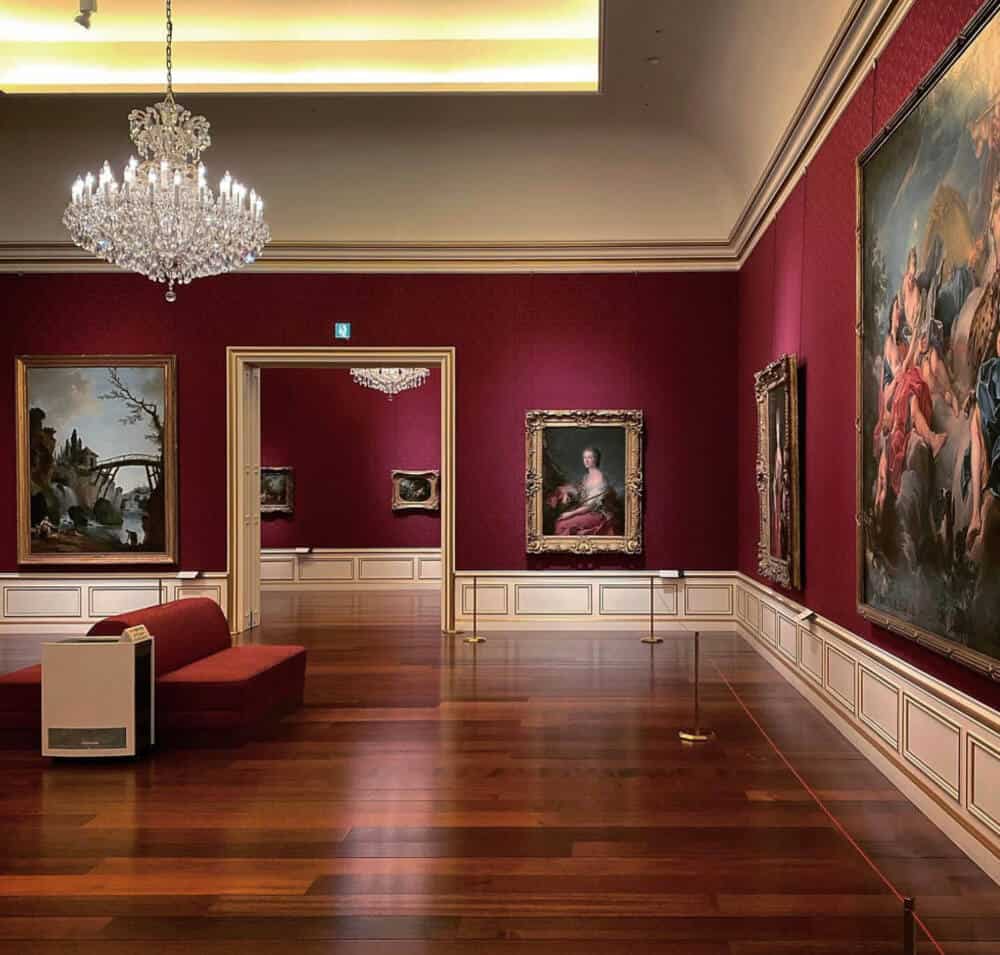
Marvel at a captivating display of Art Nouveau works, a late 19th-century French artistic movement celebrated for its intricate craftsmanship.
This collection features exquisite glassware and furniture pieces, including later works by the renowned Emile Gallé, offering profound insights into the artist’s life philosophy.
Step into recreated salon settings, transporting you to a bygone era of European art appreciation. Indulge in an enriching art viewing experience akin to visiting a prestigious overseas museum.
And to complete your visit, the museum offers on-site restaurants, cafes, and a museum shop, ensuring a delightful and enriching cultural outing.
- Address: 1-19-30 Aoi, Higashi-ku, Nagoya, Aichi Prefecture
- Access: Directly connected to “Shin-eicho” Exit 1
Hisaya-odori Park
Unwind and explore at Hisaya-odori Park, a unique blend of urban oasis and vibrant shopping destination.
Unfurl a picnic blanket on the sprawling “Lawn Plaza” and soak in the seasonal beauty, perhaps practicing yoga or browsing a lively market.
Follow the meandering “Small Path Area,” where art installations and illuminations change with the seasons, creating a constantly evolving open-air gallery.
For a refreshing break, head to the mist-adorned water basin near the iconic Nagoya TV Tower.
Don’t miss the park’s integrated commercial complex, boasting over 40 stores, including exciting first-time arrivals in Nagoya.
From fashion and sports to delectable gourmet delights, this one-stop hub caters to all your needs, making Hisaya-odori Park a perfect spot for relaxation, exploration, and retail therapy.
- Access: 1 minute walk from Hisaya Odori Station on the Municipal Subway Sakuradori Line, 1 minute walk from Hisaya Odori Station on the Municipal Subway Meijo Line, 1 minute walk from Hisaya Odori Station on the Municipal Subway Higashiyama Line 1 minute walk from Sakae Station, 1 minute walk from Sakae Station on the Municipal Subway Meijo Line, 1 minute walk from Sakaemachi Station on the Meitetsu Seto Line
<iframe src=”https://www.google.com/maps/embed?pb=!1m14!1m8!1m3!1d13045.69411398422!2d136.9084672!3d35.1709951!3m2!1i1024!2i768!4f13.1!3m3!1m2!1s0x600370d1dd5ff1c5%3A0xe4d57c47f9fcf33!2zSGlzYXlhIMWMZMWNcmkgUGFyaw!5e0!3m2!1sen!2sin!4v1712858864334!5m2!1sen!2sin” width=”600″ height=”450″ style=”border:0;” allowfullscreen=”” loading=”lazy” referrerpolicy=”no-referrer-when-downgrade”></iframe>
Noritake Forest
Step back in time and celebrate the legacy of ceramics at Noritake Garden! Established on the centennial anniversary of Noritake, a renowned Western tableware manufacturer, this verdant park honors its heritage.
Six evocative chimney monuments stand tall, reminiscent of the red brick factories of the Meiji era, a lasting reminder of Noritake’s role in shaping modern pottery.
Immerse yourself in a world of exquisite craftsmanship. Explore the expansive Noritake tableware store, where you’ll find everything from discounted treasures to perfect gifts.
Delight your taste buds at innovative French restaurants and charming cafes. Throughout the year, captivating events unfold, adding vibrancy to the park.
Noritake Garden offers a haven for relaxation and exploration – a perfect place to spend a leisurely day surrounded by beauty and artistry.
- Address: 3-1-36 Noritake Shinmachi, Nishi-ku, Nagoya, Aichi Prefecture
- Access: 5 minutes walk from Exit 2 of Kamejima Station on the Higashiyama Subway Line, 15 minutes walk from JR Nagoya Station
LEGOLAND(R) Japan Resort
Unleash your inner builder at LEGOLAND® Japan, an interactive wonderland brimming with over 17 million LEGO® bricks and 10,000 awe-inspiring models!
Soar to new heights on the 60-meter Observation Tower, offering breathtaking panoramic vistas. Immerse yourself in iconic landmarks recreated in miniature at Miniland, where LEGO® magic brings renowned structures like Sky Three and Tokyo Tower to life.
But the fun doesn’t stop there! Witness the fascinating process of LEGO® brick creation firsthand on the LEGO® Factory Tour.
For an even more immersive experience, consider a stay at the LEGOLAND® Japan Hotel, where you can drift off to sleep surrounded by your favorite building blocks.
And that’s not all! LEGOLAND® Japan is conveniently located next to Sea Life Nagoya, an aquarium teeming with fascinating sea creatures waiting to be discovered. Prepare for a day (and possibly a night) of endless LEGO® adventures!
- Address: 2-2-1 Kinjofuto, Minato-ku, Nagoya, Aichi Prefecture
- Access: 10 minutes walk from Kinjofuto Station on the Aonami Line
Swan Garden / Shirotori Garden
Unveiling the tranquility of nature, Tokugawa Garden ranks among Nagoya’s largest Japanese gardens.
Meticulously designed to mirror the Chubu region’s topography, its sprawling landscape boasts a picturesque strolling pond and a captivating fountain.
Immerse yourself in traditional beauty at “Seibatei,” an authentic Sukiya-style tea house.
Witness a mesmerizing spectacle as the “Shioiri Garden” mimics the rhythm of the tides with a captivating ebb and flow happening every hour.
No matter the season, Tokugawa Garden offers a feast for the senses. Spring bursts with delicate cherry blossoms, while early summer paints the scene with fresh greenery and vibrant hydrangeas.
Summertime brings a flourish of lotuses and water lilies, while autumn ignites the landscape with fiery foliage. Winter offers a serene beauty with cascading snowdrops.
Beyond the visual delights, Tokugawa Garden invites cultural immersion. Partake in seasonal tea ceremonies and events, or delve deeper with classes exploring Japanese culture.
Savor a cup of matcha alongside delectable sweets at Saryo Shioiri. Unwind in the tranquil gazebo or amidst the serenity of nature on a comfortable bench.
Tokugawa Garden’s enchanting atmosphere makes it a perfect destination for relaxation and a popular choice for romantic strolls.
Nayabashi Bridge AKA Barn Bridge
Stepping back in time, Nayabashi Bridge stands as a proud testament to Nagoya’s rich history. One of the iconic “Horikawa Seven Bridges” built during the Edo period, it gracefully arches over the Hori River, a central waterway that bisects the city.
Nayabashi Bridge pulsates with life throughout the year. The surrounding area frequently hosts events, and the bridge itself transforms with captivating illuminations at night.
COLORS.366, a vibrant commercial complex offering a delectable array of dining and entertainment options, recently opened nearby. This new addition boasts floor-to-ceiling windows, allowing for stunning views of the bridge from within.
Venture beyond the bridge and explore the charming riverside promenade. Here, a water plaza and docks offer the perfect setting for open-air events like the lively “Nayabashi Yoichi” night market.
Take a leisurely boat ride or simply soak in the picturesque scene – the riverside seawall bathed in a warm amber glow reminiscent of Taisho-era gas lamps, and the bridge itself transforming colors to resonate with specific seasons or events.
Adding to the area’s historical charm is the former Kato Shokai Building, a registered tangible cultural property located east of the bridge.
Its basement level houses the Horikawa Gallery, a space dedicated to exhibitions and cultural exchanges that delve into the rich heritage of the Horikawa district.
Nayabashi Bridge beckons you to explore its vibrant surroundings – a delightful blend of history, entertainment, and captivating riverside beauty.
- Address: 1-chome Meieki Minami, Nakamura-ku, Nagoya, Aichi Prefecture, 1-chome Sakae, Naka-ku, 1-chome Nishiki, Naka-ku
- Access: 8-minute walk to the west from Exit 8 of Fushimi Station on the Higashiyama Subway Line, Sakuradori Subway Line 8 minutes walk south from Exit 3 of Kokusai Center Station
Higashitaniyama Fruit Park
Escape the urban sprawl and discover a world of delicious delights at Higashitaniyama Fruit Park!
Nestled at the foot of Mount Higashitani, Nagoya’s highest peak, this agricultural haven offers a unique blend of nature, education, and delectable treats.
Explore the sprawling orchards, teeming with over 17 varieties of fruit trees like apples, pears, and peaches. But the bounty doesn’t stop there! The park boasts an impressive collection of nearly 190 fruit varieties, including figs, apricots, and even kiwi.
Delve into the world of exotic fruits at the two large and small domes – the “world’s tropical fruit greenhouse.” Here, over 100 rare fruit trees from tropical and subtropical regions flourish, from bananas and papayas to guavas.
- Address: 2110 Higashitani, Kamishidanami, Moriyama-ku, Nagoya City, Aichi Prefecture
- Access: 25 minutes walk from the south exit of JR “Kozoji Station”, from JR “Ozone Station”, take Yutorito Line “Togokubashi” bound for Kozoji ” 15 minutes walk from the bus stop
Nagoya Port Sea Train Land
Unveiling dazzling cityscapes and thrilling adventures, Nippon Land promises a day (or night!) of unforgettable fun. While admission is free, exciting attractions await, each available for a separate fee.
Take center stage on the park’s iconic Ferris wheel! This soaring giant offers breathtaking 360-degree panoramas.
By day, marvel at the sprawling cityscape. As dusk descends, witness the magical transformation as Nagoya Port ignites with a dazzling nighttime display. And the Ferris wheel itself becomes a radiant centerpiece, adding its vibrant colors to the dazzling scene.
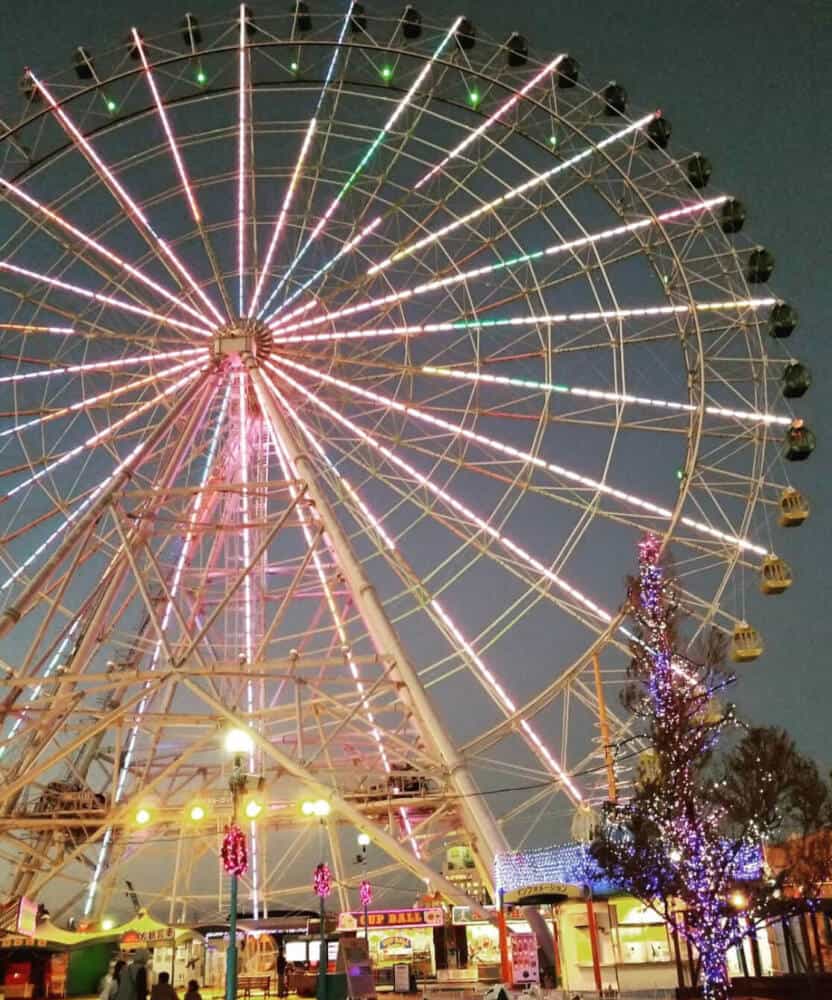
Prepare to be exhilarated! Nippon Land boasts a variety of attractions to satisfy every thrill seeker.
Step into the “4D King,” a state-of-the-art 360-degree super three-dimensional theater, where special effects bring the action to life.
Test your problem-solving skills in the “Card Maze Gururimori Daibouken,” a challenging maze brimming with puzzles. Or face the supernatural in “Ghost Hunter 2,” an augmented reality shooting game.
With 16 attractions in total (some with restrictions), and the option to purchase a free pass for unlimited rides on select attractions, Nippon Land guarantees hours of electrifying entertainment!
- Address: 1-51 Nishikura-cho, Minato-ku, Nagoya, Aichi Prefecture
- Access: 5 minutes walk from Nagoya Port Station on the Nagoya Municipal Subway/Meiko Line, approximately 10 minutes by car south from the Komei Exit on Nagoya Expressway Route 4 Tokai Line

My writing focuses on the various aspects of Japanese lifestyle, from traditional tea ceremonies and flower arrangement to modern fashion trends and pop culture. Through my articles, I aim to share my passion for Japan and provide readers with a glimpse into the rich and diverse world of Japanese culture.
I believe that the key to understanding Japanese lifestyle is to appreciate the balance between tradition and innovation. While Japan has a rich cultural heritage that dates back centuries, it is also a country that is constantly evolving and embracing new ideas and technologies.
Whether you’re interested in learning about the latest fashion trends in Tokyo, or want to explore the ancient art of calligraphy, my writing will take you on a journey through the many facets of Japanese lifestyle. So join me as we explore the beauty and complexity of this fascinating culture together!
What do you think?

10 Best Lunch Places In Ebisu Tokyo

3 Best Lunch Places In Jiyugaoka Tokyo
© 2024 by Novatise Pte Ltd
Username or Email Address
Remember Me
Forgot password?
Enter your account data and we will send you a link to reset your password.
Your password reset link appears to be invalid or expired.
Privacy policy, add to collection.
Public collection title
Private collection title
No Collections
Here you'll find all collections you've created before.
Ship viral Japanese Products to your doorstep! Dismiss
Privacy Policy - Terms and Conditions
- Media & Industry
- Meetings & Events
- Select Language 简体中文 繁體中文(香港) 繁體中文(臺灣) India (English) Bahasa Indonesia 한국어 ภาษาไทย Tiếng Việt Singapore (English) Philippines (English) Malaysia (English) Australia/New Zealand (English) Français Deutsch Italiano Español United Kingdom (English) Nordic countries(English) Canada (English) Canada (Français) United States (English) Mexico (español) Português العربية Japan(日本語) Global (English)
- India (English)
- Bahasa Indonesia
- Singapore (English)
- Philippines (English)
- Malaysia (English)
- Australia/New Zealand (English)
- United Kingdom (English)
- Nordic countries(English)
- Canada (English)
- Canada (Français)
- United States (English)
- Mexico (español)
- Global (English)
- Fujiyoshida
- Shimonoseki
- Ishigaki Island
- Miyako Island
- Kerama Island
- Tokyo Island
- Koka & Shigaraki
- Hida Takayama
- Ginza, Nihonbashi
- Beppu & Yufuin (Onsen)
- Ginzan Onsen
- Nagasaki Islands

- Kumano Kodo
- Shikoku Karst
- Amami Oshima
- Hachimantai
- Omihachiman
- Aizuwakamatsu

- Diving in Japan
- Skiing in Japan
- Seasonal Flowers in Japan
- Sustainable Outdoors
- Off the Beaten Track in Japan
- Scenic Spots
- World Heritage
- Home Stays & Farm Stays

- Japanese Gardens
- Japanese Crafts
- Temple Stays
- Heritage Stays
- Festivals and Events
- Theater in Japan
- Japanese Tea Ceremony
- Cultural Experiences in Japan
- Culture in Japan

- Local Cuisine Eastern Japan
- Local Cuisine Western Japan
- Local Street Food
- Japan's Local Ekiben
- Japanese Whisky
- Vegetarian and Vegan Guide
- Sushi in Japan Guide
- Japanese Sake Breweries

- Art Museums
- Architecture
- Performing Arts
- Art Festivals
- Japanese Anime and Comics
- Japanese Ceramics
- Local Crafts

- Scenic Night Views
- Natural Wonders
- Theme Parks
- Samurai & Ninja
- Iconic Architecture

- Wellness Travel in Japan
- Japanese Ryokan Guide
- A Guide to Stargazing in Japan
- Relaxation in Japan
- Forest Bathing (Shinrin-yoku)

- Experiences in Japan
- Enjoy my Japan
- National Parks
- Japan's Local Treasures
- Japan Heritage
- Snow Like No Other
- Wonder Around Japan

- Visa Information
- Getting to Japan
- Airport Access
- COVID-19: Practical Information for Traveling to Japan
- Anime Tourism
- Countryside Stays
- Accessible Tourism
- Hokkaido Great Outdoors
- Scenic World Heritage in Tohoku
- Shikoku’s Nature and Traditions
- Southern Kyushu by Rail

- Traveling by Rail
- How to Travel by Train and Bus
- JR Rail Passes
- Scenic Railways
- Renting a Car
- Sustainable Travel in Japan
- Travel Brochures
- Useful Apps
- Online Reservation Sites
- Eco-friendly Accommodation
- Luxury Accommodations
- Traveling With a Disability
- Hands-free Travel
- How to Book a Certified Tour Guide
- Volunteer Guides
- Tourist Information Center

- Japanese Manners
- Spring in Japan
- Summer in Japan
- Autumn in Japan
- Winter in Japan
- Cherry Blossom Forecast
- Autumn Leaves Forecast

- Japan Visitor Hotline
- Travel Insurance in Japan
- Japan Safe Travel Information
- Accessibility in Japan
- Vegetarian Guide
- Muslim Travelers
- Safety Tips

- JAPAN Monthly Web Magazine
- Arts & Cultures
- Nature & Outdoor
- Festivals & Events
- Insider Blog
- Things to do
- Local Guides
- Food & drink
- Traditional
- Hokuriku Shinetsu

My Favorites
${v.desc | trunc(25)}
Planning a Trip to Japan?
Share your travel photos with us by hashtagging your images with #visitjapanjp
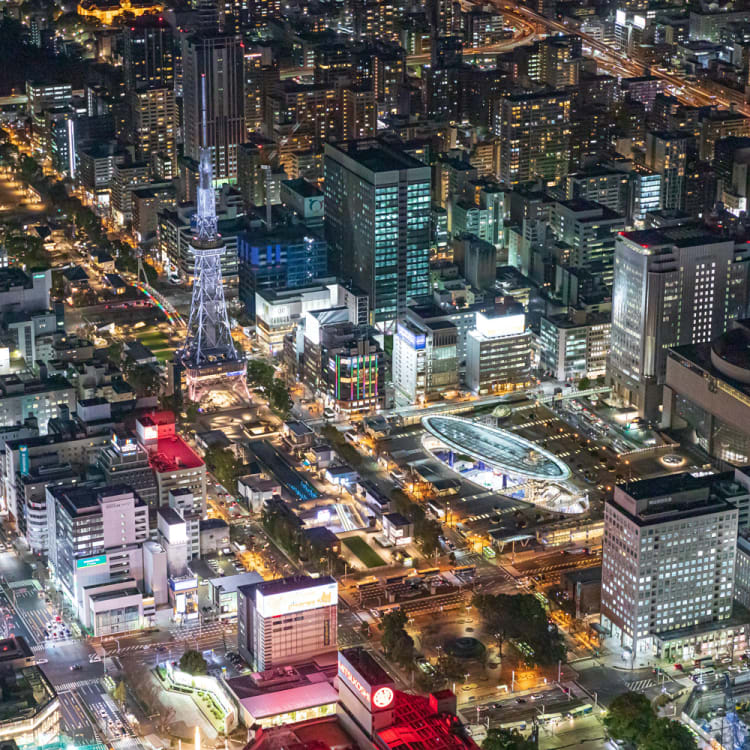
ITINERARIES Discover Nagoya Castles, cars, and culinary delights, Nagoya is home to a vibrant culture waiting to be explored
Visit japan's fourth most populated city, a castle town and the heart of the country's automobile industry., how to get there, from tokyo: 1 hour 40 minutes.
Take the Tokaido-Sanyo Shinkansen from Tokyo or Shinagawa stations.
From Osaka: 50 minutes
Take the Tokaido-Sanyo Shinkansen from Shin-Osaka Station.
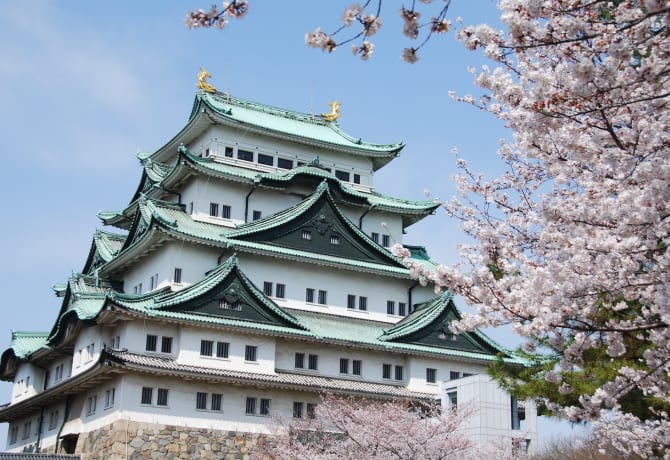
Photo: ©Nagoya Convention & Visitors Bureau / None / None / None
Surrounding the castle is Meijo Park. Filled with seasonal flowers, the park transforms throughout the year. Flower exhibits are regularly held on the grounds. Early May is a particularly good time to visit when the wisterias are in full bloom.
Take the Subway Meijo Line from City Hall Station next to Nagoya Castle for 3 minutes to Ozone Sakae Station. The Tokugawa Art Museum is a 10-minute walk from the station.
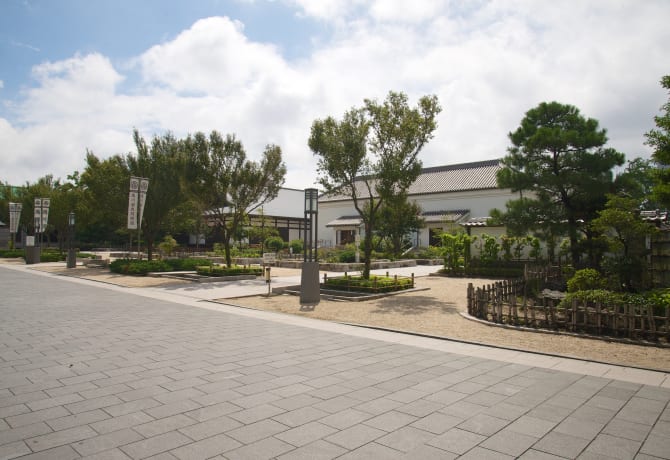
Walk 15 minutes from the museum to Ozone Station. Take the JR Chuo Line for 9 minutes and change at Kanayama Station. Take the Meitetsu Line 7 minutes to Sako Station. The museum is a short 5-minute walk from the station.

Photo: Toyota Commemorative Museum of Industry and Technology
The garden is a short 10-minute walk southeast from the museum in the direction of Nagoya Station.
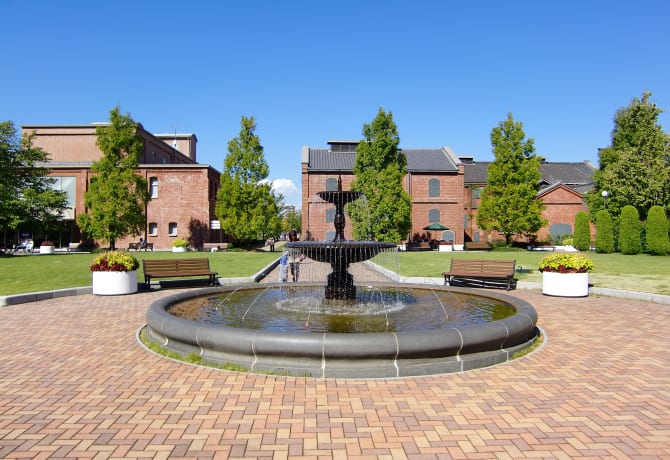
Walk south from the garden in the direction of Nagoya Station. Midland Square is directly opposite the station.
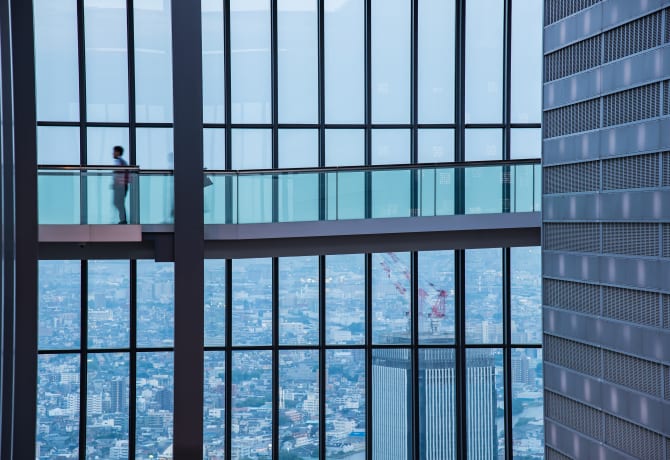
Photo: None / None / ©Nagoya Convention & Visitors Bureau / None
The dining floors of the towers are great to sample some of Nagoya’s local specialties. Try miso-katsu pork cutlets covered in red bean hatcho miso paste, kishimen flat noodles, and ogura toast, pieces of bread covered in chunky red bean spread.
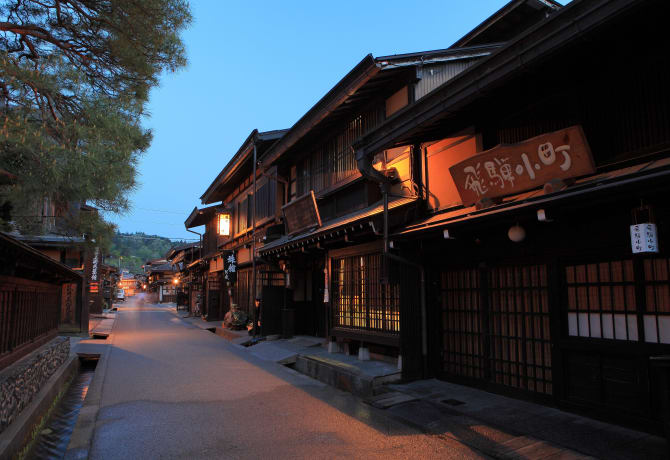
Recommended for You
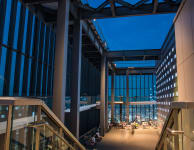
- Itineraries
- Discover Nagoya
Please Choose Your Language
Browse the JNTO site in one of multiple languages

19 Cool Things to Do in Nagoya, Japan
- Last Updated: January 25, 2024
From sumo wrestling to cosplay to futuristic robots and inventions, there are plenty of things to do in Nagoya to keep you on your toes.
Nagoya is Japan’s fourth most populated city with over two million inhabitants and is the capital of Aichi Prefecture, a very charming area of the country.
Tourists often wonder question is Nagoya worth visiting and while it’s not one of the more popular cities in the country, if you have the time, absolutely.
Most of the city, including many of its historic buildings, was destroyed in the wartime air raids of 1945.
Despite this, the city has rebuilt and is today best known for being the centre of the automotive industry in the country.
Here, you’ll find the major factories such as Toyota, Honda and Mitsubishi.
The city is well connected to other destinations around Japan via Central Japan Railways, so it’s easy to include Nagoya in any Japan itinerary.
READ MORE: Check out our complete travelling in Japan guide
Table of Contents
1) Fuel Your Inner Car Geek At Toyota Kaikan Museum
2) attend the world cosplay summit, 3) explore nagoya castle, 4) stay for the summer night festival, 5) visit the jr scmaglev & railway park, 6) stroll through the botanical gardens, 7 ) explore atsuta-jingu, 8) look out over the city at nagoya tv tower, 9) or ascend midland square sky promenade instead, 10) head to the toyota commemorative museum of industry and technology or the toyota automobile museum, 11) try the local nagoya dishes, 12) visit tokugawa art museum, 13) visit legoland, 14) visit noritake garden and learn about ceramics, 15) visit the nagoya city science museum, 16) see autumn colours at korankei, 17) check out a famous festival – nagoya matsuri, 18) watch the nagoya sumo tournament, 19) tour the studio ghibli theme park, the best hostel in nagoya – trip and sleep hostel, the best budget accommodation for couples – the b nagoya, best mid-range hotel – daiwa roynet hotel nagoya taikodoriguchi, best luxury hotel in nagoya – nagoya prince hotel sky tower, best restaurants in nagoya, top things to do in nagoya, japan.
A historically important site in Japan, Nagoya may not have many of its original buildings but it’s a unique and interesting city to visit.
You can visit any of the different museums, see some ancient reconstructed castles or feast on some eel or other delicious local Nagoya cuisine.
From the historic Nagoya Castle, to the modern Nagoya TV Tower and the iconic Midland Square Sky Promenade, this city in central Japan really blends the new and the old.
So, whether you’re a history buff, have a ninja obsession or want to learn more about automotive technology, there are lots of things to see in Nagoya to ensure that you have a good time in the city.
Known for being the central hub for Toyota production, the museum is one of the best places to visit in Nagoya.
The museum is also the production plant for Toyota so you can find everything Toyota-related here.
Start at the Toyota Exhibition Hall where you’ll see up to 20 shiny examples of the latest models hot off the production line and witness first-hand how they are made.
There’s also an interesting free two-hour tour of Toyota Moto Corporation’s main factory that details the rise of Toyota as a global brand and shows you how Toyota products are made.
READ MORE: Don’t miss our list of the best places to visit in Japan !
Tours must be booked two weeks to three months ahead so plan wisely to make the most of the opportunity.
Geek out on some of the most cutting edge products Toyota is currently working or learn about Toyota’s multiple approaches toward the eco-car.
Wondering what to do in Nagoya in summer? Look no further than this epic event. In July and August, Nagoya comes alive as it opens its doors to the World Cosplay Summit.
Japan is famous for its rich manga and anime culture that influences many people around the world. Fans began dressing and acting like their favourite characters and so, the cosplay culture came to rise in 2003.
Regardless of whether you’re into cosplay, this is a must-see attraction because it gathers the greatest cosplayers in the world for an annual competition.
Representatives from more than 30 countries come to Nagoya to take part and for the entire week, the city is flooded awesome costumes from both fans and competitors.
Most are happy to post with you for photos to keep your camera ready!
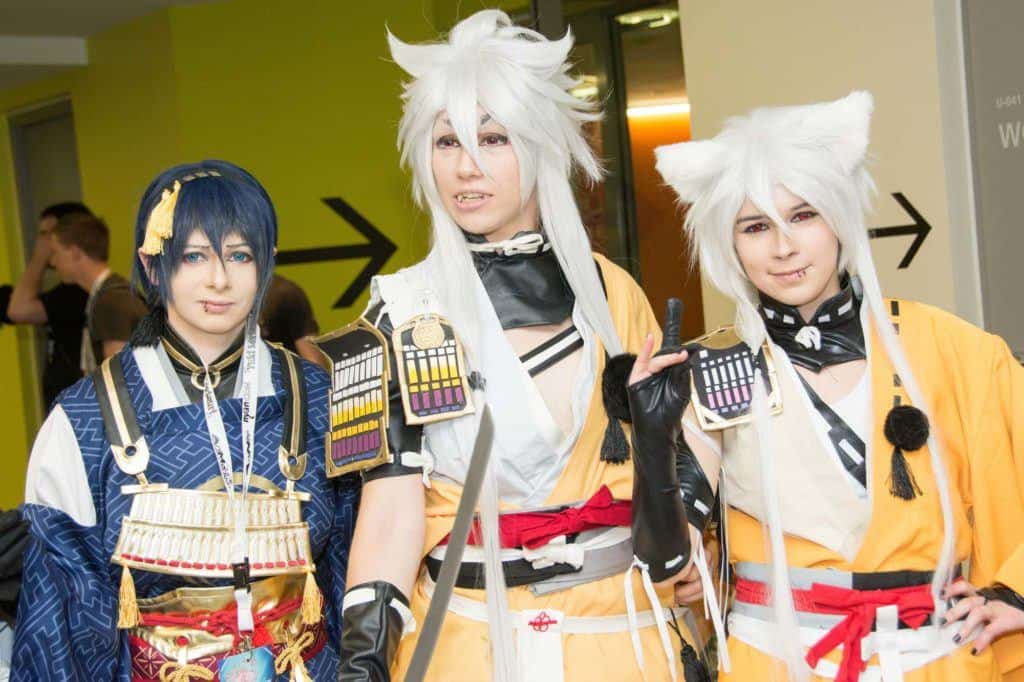
Built at the beginning of the Edo Period, Nagoya Castle was the seat of one of the three branches of the ruling Tokugawa family – the Owari branch.
It was completed in 1615 by the Shogun, Tokugawa Ieyasu and topped with golden shachihoko – a creature said to have the head of a tiger and the body of a fish.
It was one of the largest castles in the country and was the first castle to be designated a National Treasure. The visit to the castle is on every traveler’s Nagoya sightseeing list.
The castle town around Nagoya Castle eventually grew to become Japan’s fourth-largest city.
After the wartime air raid destruction, it was designated a National Historic Site due to its historical importance and was reconstructed.
The current ferroconcrete reconstruction dates back to 1959 through contributions from citizens.
Its outward appearance was a reproduction of the original tower while the interior became a museum of historical items, materials and models.
Due to aging and earthquake resistance problems, the castle’s reconstruction project continues to return Nagoya Castle to its original condition.
Don’t miss the Ninomaru-en, the garden that surrounds the castle and infamous for its idyllic teahouses and serene environment. Visit the website for more info !
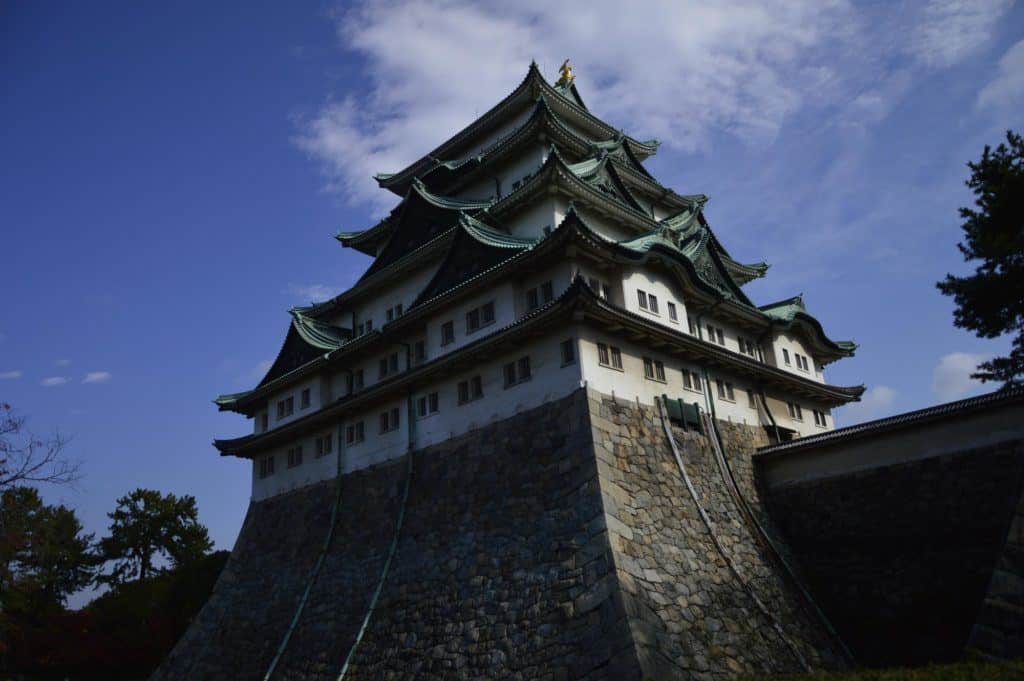
In summer, the Nagoya Castle Summer Night Festival takes place on the weeping grounds of the main castle.
The gardens are lit up with lanterns and you can watch traditional dances performed to honour ancestors.
You can also buy local treats and handicrafts from stalls and drinks from the onsite beer garden.
One of the best Nagoya activities for train fanatics is to try the train simulator at JR SCMAGLEV and Railway Park.
Fun for both adults and kids, the museum introduces the advances in high-speed railway and exhibits rolling stock displays included the Superconducting Magnetically Levitated Vehicle (Maglev), as well as historic railway rolling stock.
You’ll learn about the history of train travel in Japan, how the railway system has impacted our society, economy, culture and lifestyle and in particular, how it has shaped the country.
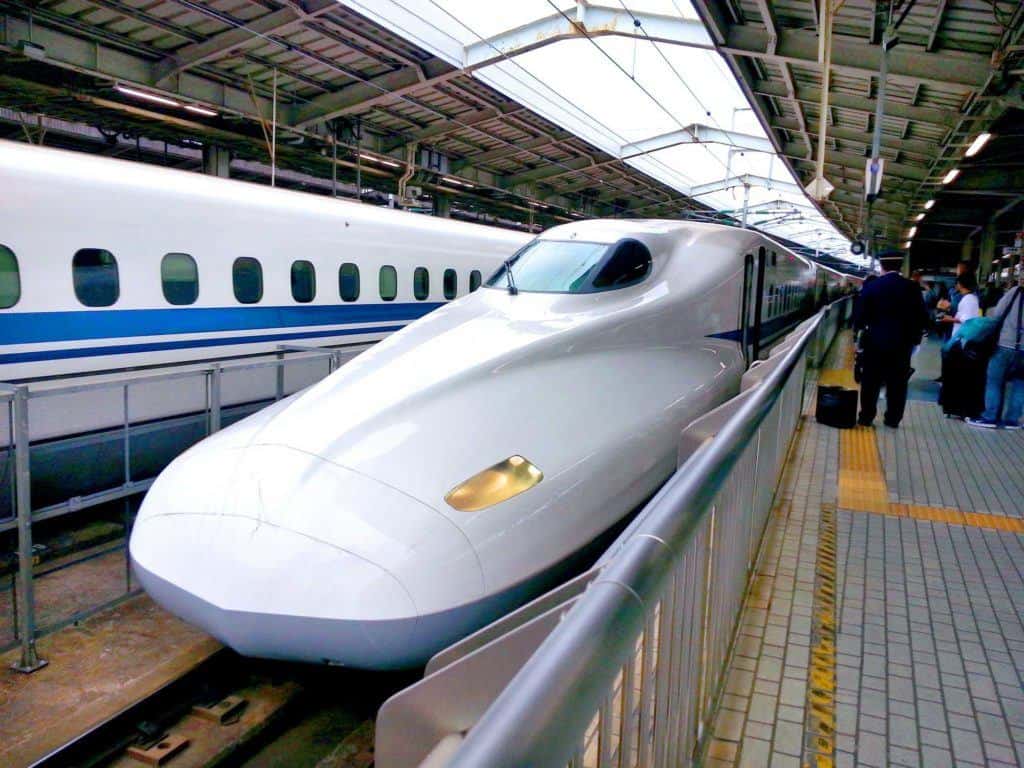
You’re likely to find Higashiyama Zoo in your Nagoya, Japan guide but we don’t recommend visiting it as it encourages poor animal tourism. The zoo houses a range of animals in very small enclosures.
Instead, we suggest you skip the zoo and head over to the Botanical Gardens located right next to it.
Take a moment to enjoy the lush foliage, relaxing and quiet atmosphere and breathe.
The Botanical Gardens are a great spot for a picnic lunch or to take the kids for some greenery amongst the sky rise and packed cityscapes.
The shrine sits in a garden of cypress trees and is known for a famous grass-cutting sword that local believe was given to the Japanese Royal Family by Amaterasu-Omikami who is the Shinto Sun Goddess.
Originally built around 1,900 years ago, Atsuta-jingu is a shrine that, like many other buildings in Nagoya, was destroyed over the years and rebuilt.
It is now known as one of the most important Shinto shrines, is the second largest in the country, and one of the more popular Nagoya sights to visit. About 6.5 million people visit there annually.
The Shrine is home to the Kusanagi-no-Tsurugi , a sword that is one of the Three Sacred Imperial Treasures. The famous Treasure Hall is known for its paintings, masks and weaponry.
READ MORE: Here’s our list of the best things to do in Japan .
One of the main Nagoya tourist attractions and landmarks is the Nagoya TV Tower which soars to a height of 180 metres.
The tower’s claim to fame is that it’s the oldest of its kind in Japan (it was completed in 1954) and was built before the infamous Tokyo Tower.
The Nagoya TV Tower observation deck is located 100 metres above the ground and looks out over Nagoya and the neighbouring Hisaya-odori Park.
If high towers and observation decks are what you’re into, visit Midland Square, the city’s tallest building and located opposite Nagoya Station in the city center.
The skyscraper opened in 2007 and is 247 metres tall! You’ll find shops, chic boutiques, restaurants, and cafes on the first floor stories and a cinema on the fifth.
The Midland Square Sky Promenade is easily the biggest attraction though, located on the top three floors of the building. Here, there’s an open-air observation deck with sweeping panoramic views over Nagoya.
If you’re wondering what to see in Nagoya, come up to the Sky Promenade get an aerial view of the JR Central Towers, Nagoya Castle, and Nagoya Port. It’s a Nagoya must-see!
On the 41st and 42nd stories are also several fancy restaurants serving various cuisines alongside impressive views of the city.
If you enjoy your time Toyota Kaikan Museum, continue nerding out at another Toyota Museum.
The Toyota Commemorative Museum of Industry and Technology extends over almost 8,000 square metres and tells the story of how it began as a weaving plant before becoming a robotics and vehicle focused factory.
There are several interactive exhibits as well as an audio tour at the museum .
Lovers of cars and transport should definitely include the Toyota Commemorative Museum of Industry and Technology in their visit to Nagoya.
Another cool museum is the Toyota Automobile Museum.
The Toyota Automobile Museum, located in Nagakute, Aichi, Japan, stands as a captivating tribute to the rich history and innovation of the automotive industry.
Established by Toyota Motor Corporation, the Toyota Automobile Museum provides visitors with a comprehensive journey through the evolution of automobiles, particularly showcasing the remarkable contributions of Toyota.
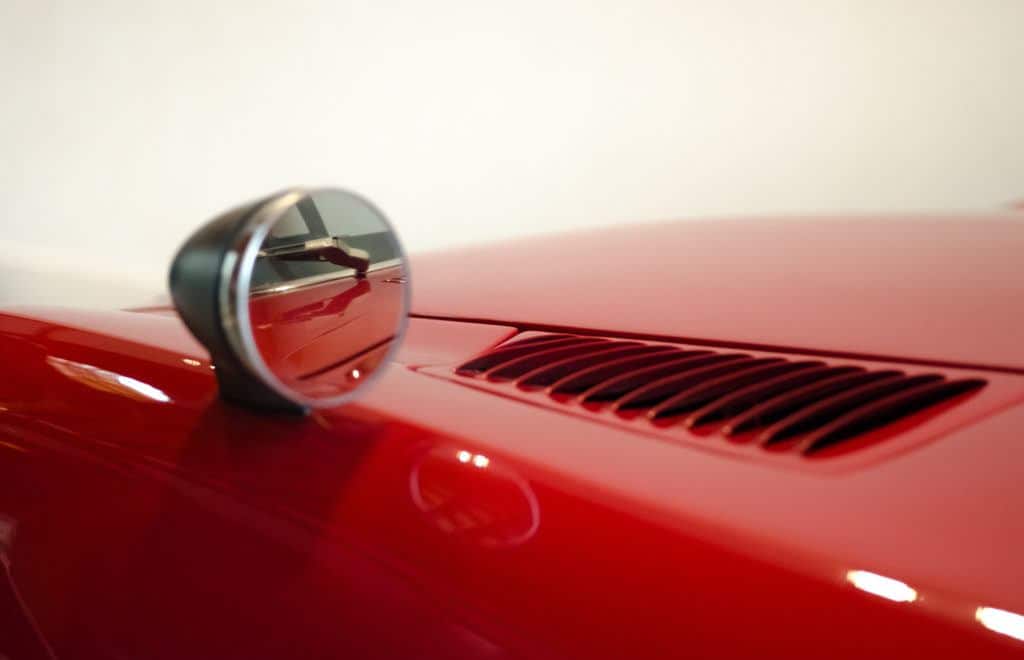
While ‘eating’ doesn’t come up as one of the main Nagoya things to do, there is actually a great range of delicious local delicacies to sample in the city.
This region is famous for its miso production, a type of sauce made from soybeans. The local specialty is misokatsu , a fried pork cutlet slathered in thick miso sauce.
Nagoya is also famous for its own cooking style of unagi (eel). Hitsumabushi is a local eel dish that is said to have originated at the end of Meiji Era where the eel is slit open along the belly and grilled whole without steaming, chopped up and served with rice.
The eating process is also unique. To begin, the whole eel dish is divided into four portions.
The first portion is to be enjoyed as is. The second is eaten with some condiments (wasabi horseradish, nori dried laver, mitsuba trefoil, etc.).
The third portion is eaten in the same manner as the second portion plus green tea or broth poured over it.
Finally, you can enjoy the remaining portion however you like out of the other three styles.
You also must try the tenmusu , a type of shrimp tempura stuffed into rice and coated in seaweed. Drooling yet?
Save room for dessert as well! Nagoya is famous for its regional variation known as uiro .
Uiro is a chewy confection made of rice flour and sugar and then flavoured with local ingredients such as matcha (green tea powder) or azuki (red bean paste).
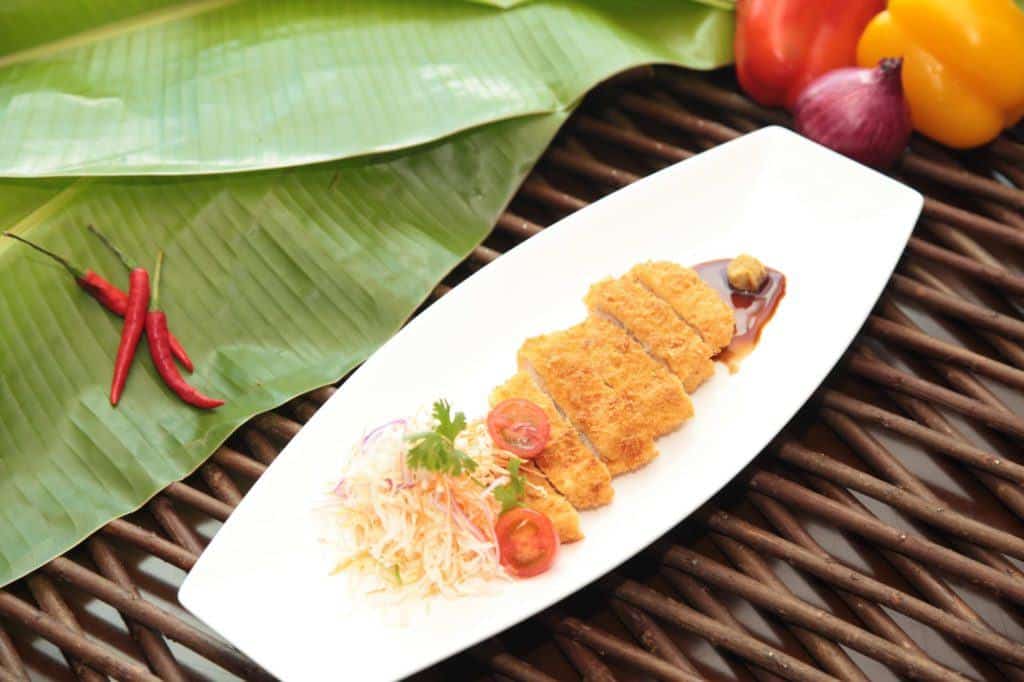
The Tokugawa Art Museum is one of the best things to do in Nagoya.
Showcasing thousands of pieces of historic art, the Tokugawa Art Museum is one of the world’s best displays of samurai art and culture.
While the Tokugawa Art Museum is best for learning about art and history of samurai culture, the Nagoya City Art Museum is another great option for art lovers.
Nagoya City Art Museum focuses more on modern and international art, so there is a bit more of a range of pieces there.
Have kids and want to know what to do in Nagoya, Japan with them? Or perhaps you’re just a big kid inside. Either way, this outdoor amusement park has many attractions for both young children and adults.
You can expect supersized Lego models, rides, building stations and dining areas here.
The amusement park is separated into seven themed areas to match the different universes in the Lego world .
In the middle of the. park, you’ll find ‘Miniland Japan’, highlighting the iconic attractions across the entire country and constructed from millions of Lego bricks.
You’ll find Kyoto, Tokyo and Mount Fuji just a few steps away from each other. Be sure to book your tickets online to score them for cheaper.

Noritake is a leading company in the ceramics industry with over 100 years of history. Noritake no Moris is the garden built on the company’s former factory grounds and introduces the company and its products.
You’ll see a range of relics from different time periods such as old fashioned kilns and old Noritake pieces such as vases, jars and dishes from the early 1900s.
In the Craft Center, you can observe how porcelain is created or even try it for yourself in a workshop where you can make and glaze your own piece.
It is located just a 15 minute walk north of Nagoya Train Station.
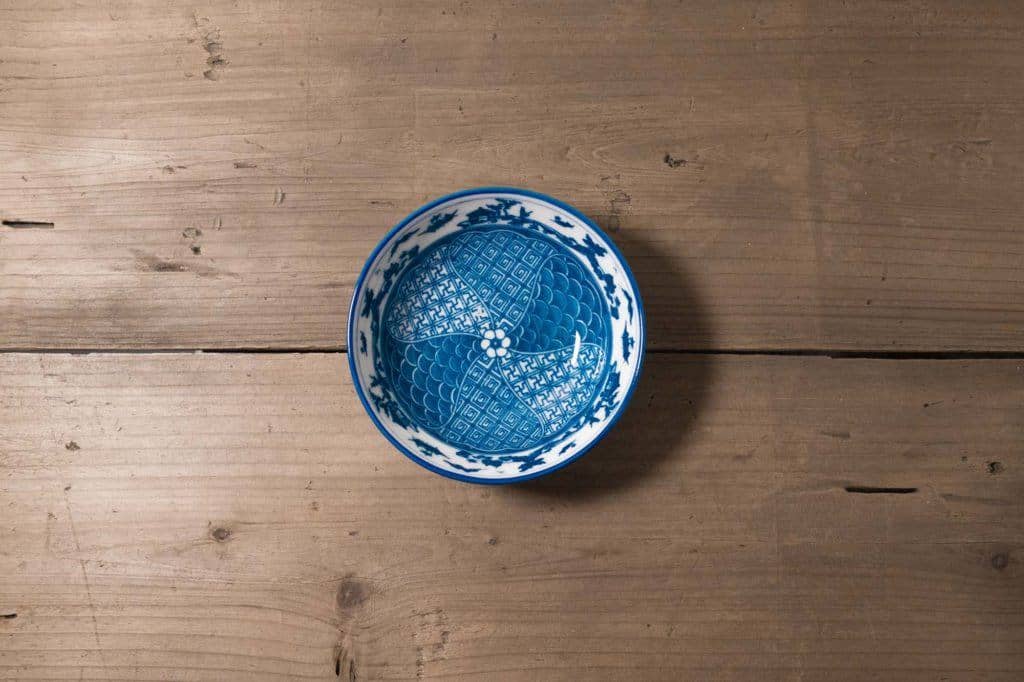
Considered one of the best museums in the country, Nagoya City Science Museum is a must-visit attraction.
Nagoya City Science Museum features the largest planetarium in the world where you can learn about the workings of the solar system.
There is also a range of attractions like the tornado laboratory and a freezing laboratory and live shows that feature cool science experiments that young visitors will thoroughly enjoy.
Find more info on the website !
Korankei is a valley near Nagoya with a reputation for being one of the best spots for autumn colours in the region. Mount Iimori is 254-metres tall and shapes the valley and on which Kojakuji Temple stands.
In the 17th century, the head priest of Kojakuji planted maple trees along the temple approach and many locals followed suit.
The best colours appear around the paths along Tomoe River at the western and southern sides of Mount Iimori and the best time to visit the area is around mid to late November each year when the autumn colours are in full bloom.
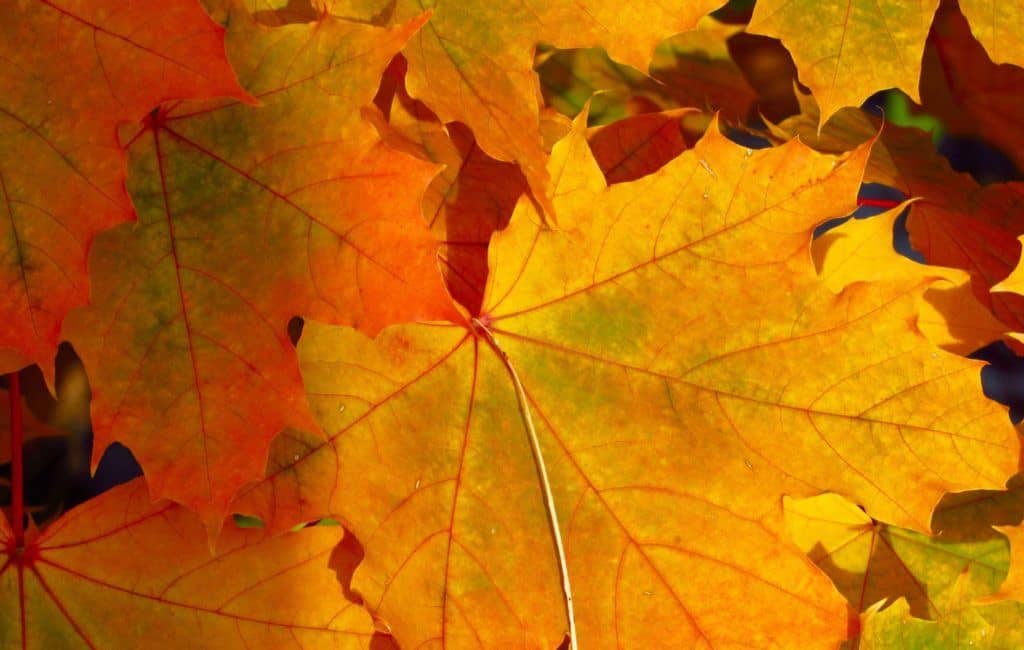
Nagoya Matsuri is a festival dedicated to the ‘Three Heroes of Nagoya’ held in October annually.
The heroes of the Sengoku period, Oda Nobunaga, Toyotomi Hideyoshi and Tokugawa Ieyasu are three powerful warlords who tried to unify the country under their rule during a turbulent time period.
It’s one of the more famous festivals and takes place at Hisaya-odori where you can watch processions and floats covered in colourful puppets, kagura music and dance.
Sumo is the national sport of Japan and tournaments, called Honbasho , are held six times a year in various parts of the country in sequence.
Over a 15-day period in July, the Ozumo Nagoya Basho (Nagoya Sumo Tournament) takes place and Nagoya gets to host one of the six Honbasho.
During each 15-day Basho , wrestlers fight in matches under a round-robin system. This is your chance to see some of the best sumo wrestlers in Japan battle in the ring!
The Studio Ghibli Theme Park, nestled in Aichi Prefecture, Japan, stands as a whimsical haven for fans of the renowned Japanese animation studio.
Set against the backdrop of lush greenery and enchanting landscapes, the theme park brings to life the beloved characters and magical worlds created by Studio Ghibli, such as My Neighbor Totoro, Spirited Away, and Howl’s Moving Castle.
With meticulous attention to detail, the park recreates iconic scenes and landscapes, allowing visitors to immerse themselves in the fantastical realms of Ghibli films.
A celebration of creativity and imagination, the Studio Ghibli Theme Park is one of the best theme parks in Japan. Find more info on the website !
Nagoya Travel Guide
We’ve put together this mini Nagoya travel guide to help you make the most of your time in this city complete with where to stay in Nara and some great restaurant recommendations.
Best Accommodation – Where To Stay In Nagoya
The best area to stay in Nagoya is somewhere central close to the train station to help you travel around. Like most cities in Japan, most places will have great access to restaurants, cafes and bars within walking distance.
We’ve picked some awesome places to stay that are close to the main Nagoya station as well as other convenient spots.
Only a 10-minute walk away from Nagoya train station, this hostel offers everything a backpacker could want and need.
The location is extremely central in an area with plenty of restaurants and bars and a kombini (convenience store) down the road. It is located in the “Osu Shopping District” so there is plenty to fo.
There is a great atmosphere and vibe here so if you are looking to stay somewhere a little more social, this is the place (but very much depends on the other guests staying there).
Dorm rooms are clean and cozy, and the prices are affordable for budget travelers.
Couples looking for some privacy at the end of a long Nagoya sightseeing day should stay at this designer hotel .
Situated in the business and shopping district of Sakae, the hotel offers easy access to Nagoya’s major tourist, shipping and business areas.
The hotel has a Western and Japanese restaurant and even has a 24-hour Lawson (a convenience store) located on the first floor.
Beds are comfortable, rooms are clean and feature modern décor, wifi is free and the hotel even offers complimentary PCs with broadband internet access. There’s also complimentary coffee and an espresso machine in the lobby.
While the rooms here don’t have any spectacular views and are quite small, for less than the price of two beds in a dorm room at a hostel in the area, there’s not much to complain about.
A new hotel situated right near the main Nagoya station, Daiwa Roynet Hotel is easily accessible and within walking distance to many great spots in central Nagoya.
The hotel is stylishly decorated with modern décor and aims to reduce waste by encouraging housekeeping on an as-needs basis and keeping a recycling bin in the room.
Compared to other hotels in Japan, Daiwa Roynet pretty big with spacious rooms and bathrooms that have a bathtub.
For a mid-range hotel, there’s a sense of luxury here with high-quality linen, bedding and amenities. Beds aren’t super soft compared to Western-style hotels internationally but this is generally the case in Japan.
You can expect impeccable service from the friendly staff members who are always willing to help guests. Check-in is quick and efficient so you can get to visiting Nagoya attractions as soon as you arrive in the city.
Breakfast is good but not always included in the room price so if you aren’t a big breakfast person, it’s better to book a room without breakfast and enjoy some of the local restaurants in the area.
Nagoya Prince Hotel is the epitome of luxury and is nothing short of impressive. The hotel is brand spanking new with one of the best views in the city center.
The concept of the hotel is a ‘ship floating in the sky’ so guests are treated to rooms on the 32nd to 36 th floors of the Global Gate building, a new shopping mall in Nagoya with restaurants, cafes and shops.
The hotel embodies a modern contemporary minimalist vibe so if you’re into colour and overwhelming sensory experience, this might not be the best luxury hotel for you.
However, if solitude, privacy and kickass views are what you’re into, this is the spot.
Rooms are over 170 metres above the ground so guest rooms offer stunning panoramic views in all directions. Be sure to check out the Premium Corner Room for a breathtaking experience in the building.
The only downside to the hotel is its location as it’s not as close to the train station as other hotels.
For an interesting and unique dining experience, head over to Maidreamin, Nagoya Osu Manekineko Mae. This maid café serves cutely decorated food among live performances and entertainment. It’s one of those ‘only in Japan’ attractions that you should tick off while you’re here. ( Book in advance on Klook! )
You can’t visit Nagoya without trying unagi (eel) and Maruya Honten Meiekiten is one of the best unagi restaurants to visit in the city. While the food portions aren’t massive, the unagi is fresh and of high quality. Reservations are recommended to avoid long waiting times.
If unagi isn’t your thing and you’re after something a little more familiar, Yabaton Yabacho Honten serves some mouth-watering misokatsu – a must try Nagoya dish. Misokatsu is similar to tonkatsu (deep-fried crumbed pork cutlets) but with a miso sauce. Yum! Or you can always get street food as well!
Sick of Japanese food? Sounds impossible but if you end up there, Antica Roma is a wonderful alternative. As the name suggests, it’s an Italian restaurant that offers the best home-made pizzas and pasta in the city that will take you right back to Italy.
DISCLAIMER: Some of the links in this article are affiliate links, which means if you book accommodation, tours or buy a product, we will receive a small commission at no extra cost to you. These commissions help us keep creating more free travel content to help people plan their holidays and adventures. We only recommend the best accommodations, tours and products that ourselves or our fantastic editorial team have personally experienced, and regularly review these. Thanks for your support, kind friend!
Amanda Tran
Hi, We’re Alesha and Jarryd!

We’ve been traveling the world together since 2008, searching for the planet’s best destinations and adventures.
Love Travel?
Sign up for our free weekly newsletter for the best travel tips, ideas and deals!
We respect your privacy. Unsubscribe at any time.
READ MORE...
The Perfect 3 Days in Tokyo Itinerary
The Best Day Trips from Every City in Japan [2024]
18 Amazing Things to Do in Kyoto at Night (2024 Guide)
Related Posts
10 best day trips from kyoto, japan [2024 travel guide], 7 best day trips from osaka, japan (2024 travel guide), 18 awesome things to do in sapporo, japan (2024 guide), 19 incredible things to do in takayama, japan [2024 guide], 1 thought on “19 cool things to do in nagoya, japan”.
Hi, thank you for introducing Nagoya city! It’s my hometown and I am glad you mention many things to do in Nagoya.
Leave a comment Cancel reply
Save my name, email, and website in this browser for the next time I comment.
Nagoya Sightseeing & Nagoya Attractions
- Published on : 24/12/2012
- by : Japan Experience
- Add to favorites
Things To Do In Nagoya & Its Surroundings 名古屋
Nagoya Castle
Tokugawa Art Museum
- Tokugawa-en
- Noh Theatre
Aichi Prefectural Gymnasium
- Atsuta Shrine
- Shiroyama Shrine
Toganji Temple
- Museum of Industry & Technology
Toyota Automobile Museum
Nagoya/boston museum of fine arts, nagoya city museum.
Nagoya City Science Museum
Aichi Prefectural Ceramic Museum
- IdcN Design Center
- Higashiyama Zoo
- Villaggio Italia
Pachinko Museum
Nittaiji Temple
Nunoike Cathedral
Toyota Municipal Museum of Art
Nagoya City Tram & Subway Museum
Nagoya Agricultural Center
Little World
- Magome & Tsumago
- Gujo Hachiman
- Food & Drink
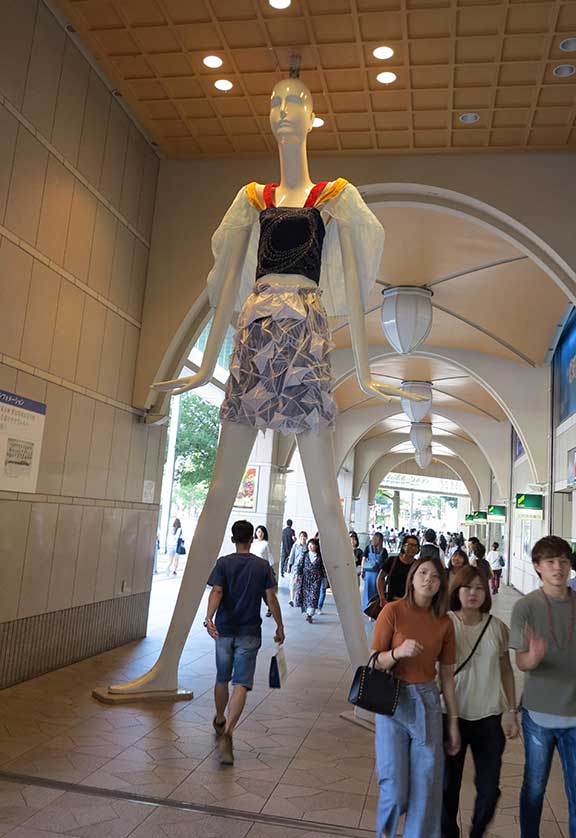
Nanachan - a popular meeting spot outside the main entrance to Meitetsu Nagoya Station
Nagoya unfairly gets a bad rap from most guidebooks and usually only enters the traveller's consciousness as a brief stop on the shinkansen (bullet train) journey from Tokyo to Kyoto.
Once a beautiful wooden town in historical times, Nagoya is one of the few modern Japanese cities to have been carefully planned and zoned after the destruction of World War II.
In fact, the city is a spacious, well-planned, urban center that oozes prosperity due to the location of Japan's largest company - Toyota - in the town as well as a substantial number of blue-chip precision-engineering companies driven by Toyota's success.
In 2005, Nagoya's new off-shore Centrair Airport opened and Nagoya City & Aichi Prefecture played host to Aichi Expo 2005 .
Nagoya is easily accessible from Tokyo by shinkansen and takes under an hour to get to from Kyoto and Osaka - or a more leisurely 2 hours by Kintetsu railway's Urban Liner from Osaka's Tsuruhashi and Namba stations - and has a lot to offer the first time visitor.
Nagoya, located in central Japan, is ideal as a base for exploring the historic towns and onsens of nearby Gifu, Mie, Shizuoka and Nagano Prefectures.
Nearby places of interest within a radius of around two hours by train include Gifu City , Inuyama , Ise-Toba , Gujo Hachiman , Takayama , Toyohashi , Gero Onsen and Magome and Tsumago .
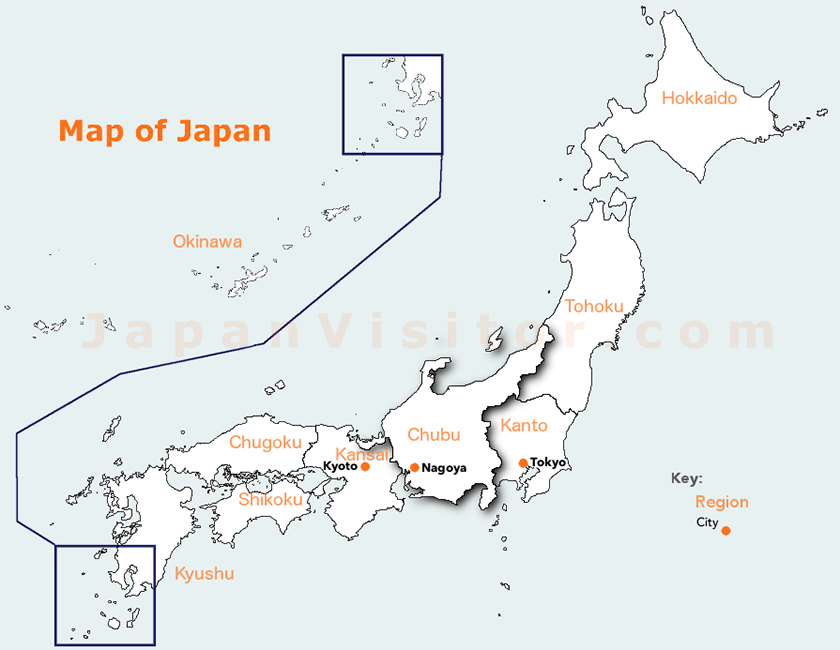
Nagoya Castle (first completed in 1612) was built on the orders of the Shogun Tokugawa Ieyasu and houses a worthwhile museum displaying Edo period armor, fusama-e (paintings on sliding doors) and other art treasures that escaped bombing in World War II. The adjacent Hommaru Palace is presently being restored to its original glory and the first stage is now open to the public.
Meijo Koen, the park surrounding Nagoya Castle, is famous for its cherry blossoms. Ninomaru Garden just to the east of the castle is an original Japanese-style garden.
Less than five minutes walk from Meijo Park and Shiyakusho-mae subway station, the luxurious Five Star Westin Nagoya Hotel makes for an excellent central base for any business or pleasure trip to Nagoya.
Other accommodation nearby to Nagoya Castle includes the much recommended Kyoya Ryokan with an excellent spa, Japanese food and garden. This is a must if you want to experience a truly, traditional Japanese inn.
Nagoya Castle Admission 500 yen. Access : Shiyakusho subway station on the Meijo Line or Sengen-cho on the Tsurumai Line .
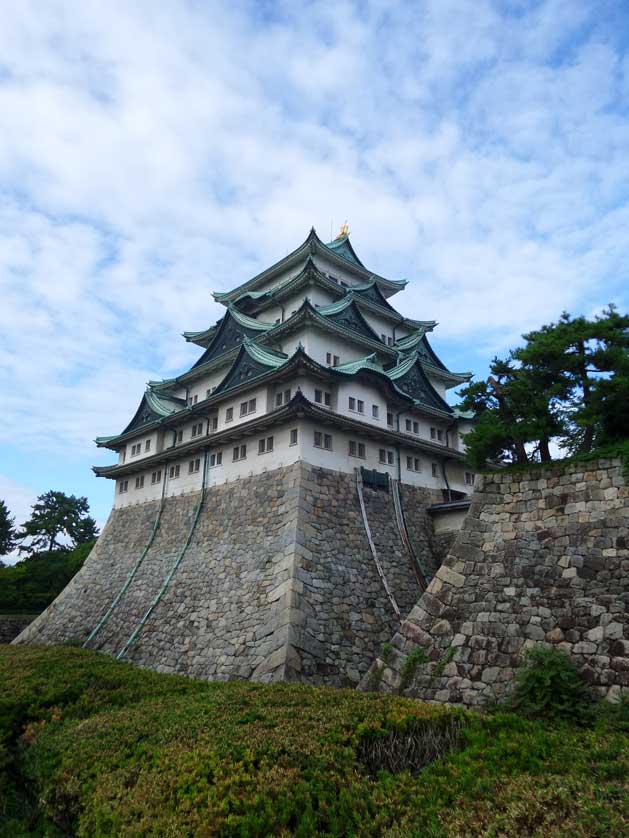
Nagoya Castle with its distinctive, fan-shaped, sloping walls
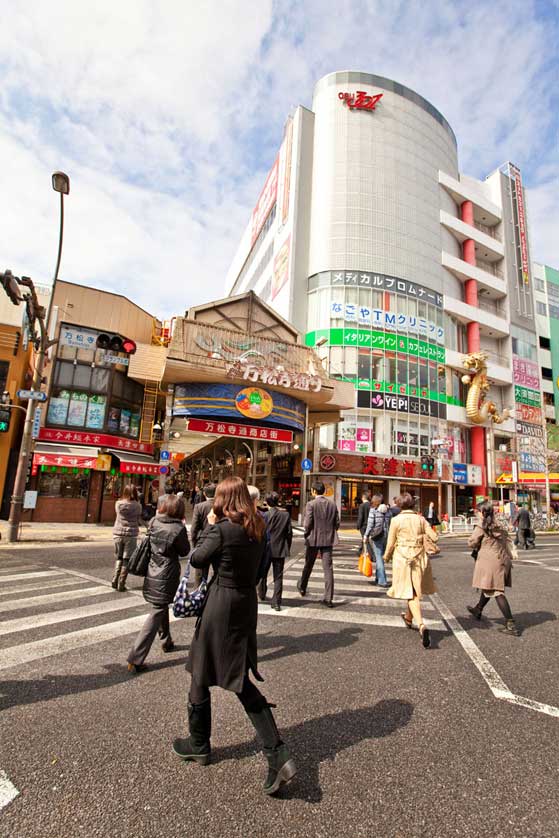
The hip area of Osu Kannon in Nagoya known for its flea markets and electronics stores
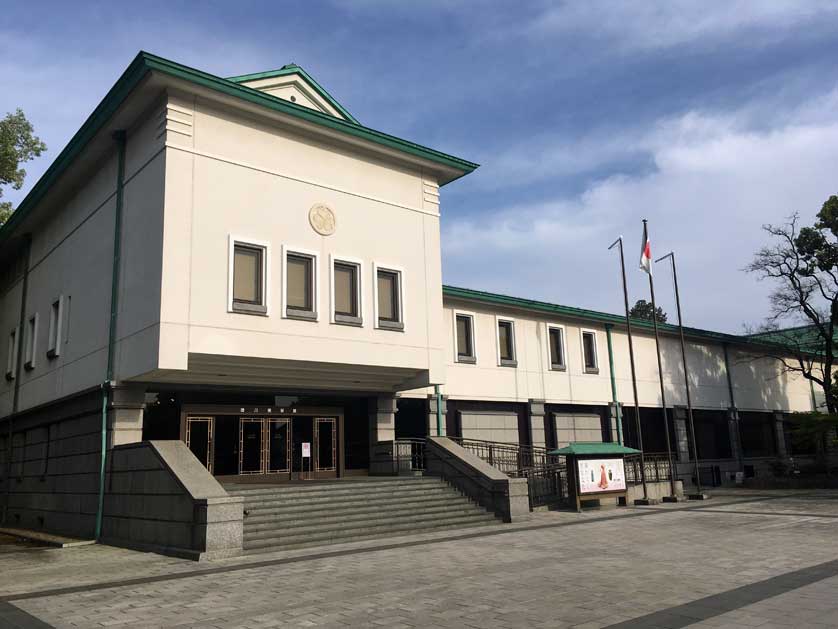
Tokugawa Art Museum, Nagoya
The nearby Tokugawa Art Museum is the city's must-see attraction, housing the old ruling Owari family's legacy of art and heirlooms, which include maki-e (gold lacquer work), fearsome samurai armor, swords and helmets, a Noh stage and theater costumes and the original twelfth-century painted scroll of The Tale of Genji by Takayoshi Fujiwara. The original is kept locked away most of the time but is represented by video and panel displays. Photography is not allowed inside the exhibition. The museum, which dates from 1935, is set in the beautiful Tokugawaen (Tokugawa garden), which can be visited separately. Admission 200 yen. 10 am-5 pm, closed Monday. Access : Ozone subway station. Read more about Tokugawa Art Museum
Tokugawaen Garden
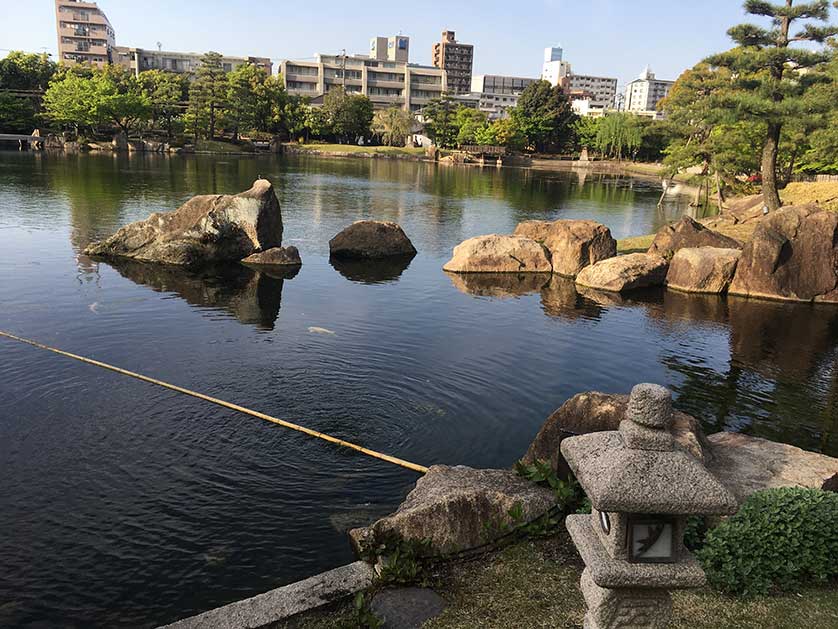
Tokugawa Garden
Adjacent to the Tokugawa Art Museum is the beautiful Tokugawaen (Tokugawa Garden), which can be visited separately from the museum. The garden was built in 1695 as a retirement villa for Mitsutomo, Lord of the Owari Tokugawa, but was destroyed in World War II and only opened as a Japanese garden again in 2004. A large lake forms the strolling garden's centerpiece which is also noted for its waterfalls, wooden bridges, a samurai teahouse, restaurant and its peonies and irises. Visitors can enter through the wooden Kuro-mon (Black Gate) which survived the bombing and dates from 1900. Admission 500 yen. 10 am-5.30 pm, closed Monday. Tel: (052) 935 8988 Access : Ozone subway station. Read more about Tokugawa Garden
Nagoya Noh Theatre
Noh drama is a prominent feature of Nagoya and the Nagoya Nohgakudo is the venue for regular monthly performances. There is also an exhibit room of precious Noh artifacts (free). Admission from 500 yen. Daily 9 am-5 pm. Access : Shiyakusho subway station.
Interested in sumo ? The annual Nagoya basho (tournament) is held in July at Aichi Prefectural Gymnasium. Day tickets (from ,200) are available there 9 am-5 pm, or you can phone 052 962 9300 for advance sales. Access : Shiyakusho subway station.
Top of Page
Osu Kannon - TVs and Temples
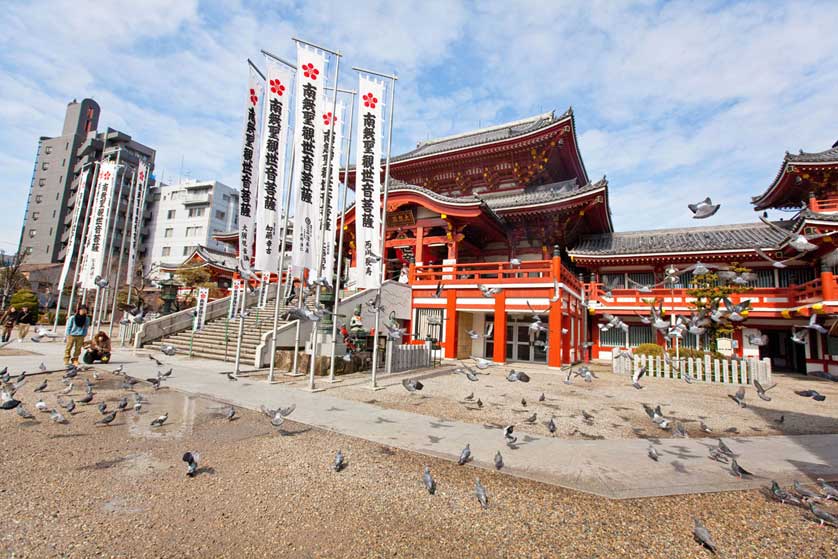
Located just south of Sakae and Fushimi, Nagoya's main shopping centers, is Osu Kannon Temple - a great place to stroll and take in the mix of old and new. Osu Kannon Temple is Nagoya's oldest and the surrounding area of Osu Kannon or just "Osu" is home to a vibrant fusion of old-style arcades selling everything from discount electronics to second-hand kimono, antique markets on the 18th and 28th of each month, and a number of intriguing Brazilian shops and cafes. Brother Computer Solutions is a foreigner-friendly new and used store in Ameyoko Biru #1. Access : Osukannon subway station. Bars & Restaurants in Osu
Atsuta Jinja
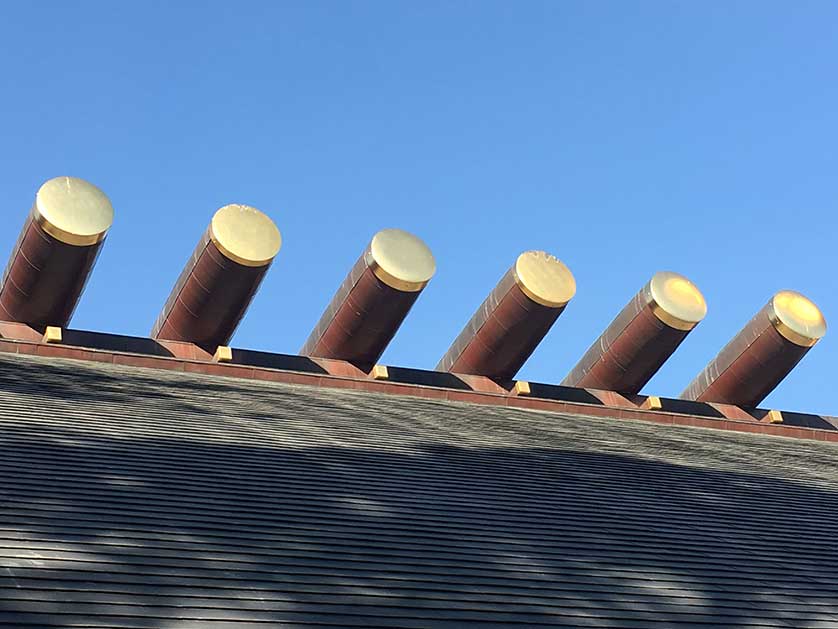
Atsuta Jinja ('jinja' meaning Shinto shrine) is one of the most important shrines in Japan. Lined with attractive cypress trees, it dates back to the third century and is supposed to house the sacred imperial sword, one of the three regalia of the imperial family, the others being a sacred mirror at Ise and sacred jewels in the Imperial Palace in Tokyo. The shrine is Nagoya's number one must-visit shrine at New Year and is also a popular venue for shichi-go-san festivals. Shichi-go-san , literally 'seven-five-three', is a celebration held on November 15 for when a girl turns 3 or 7 and when a boy turns 5. Atsuta Jingu is said to visited by over 8 million people per year. The shrine was bombed in World War II and subsequently rebuilt. Atsuta Jingu is seen as a protector of the area's agriculture and the shrine's festivals include an opulent planting ceremony. The precincts include a 1,300 year old giant camphor tree said to be planted by the renowned Buddhist priest Koubou Daishi, a Noh theater, and the 'Bunka-den' treasure storehouse museum full of important cultural assets, especially swords. (9 am-4.30 pm, closed last Wed and Thu of every month. Closed Dec 25-31. No admission after 4.10 pm). Access : Jingu Nishi Meijo Subway Line, 8 minutes walk from JR Atsuta (Tokaido Honsen line) or 5 minutes from Meitetsu Jingumae station .
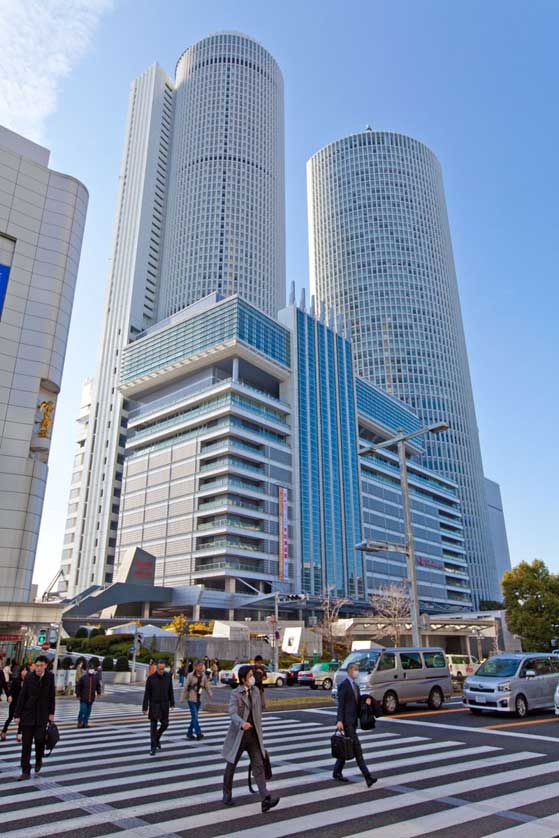
The soaring Twin Towers of Nagoya Station - the world's largest station building by area
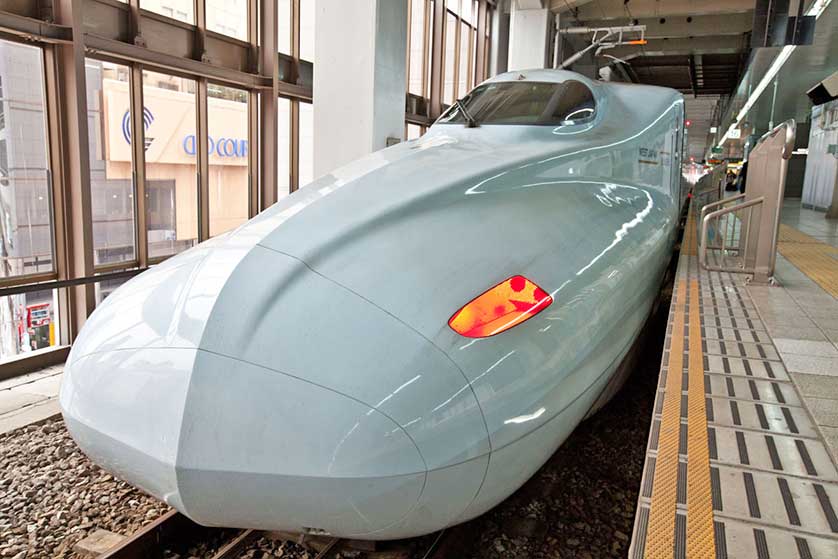
Shinkansen bullet train at Nagoya Station
Koshoji Temple
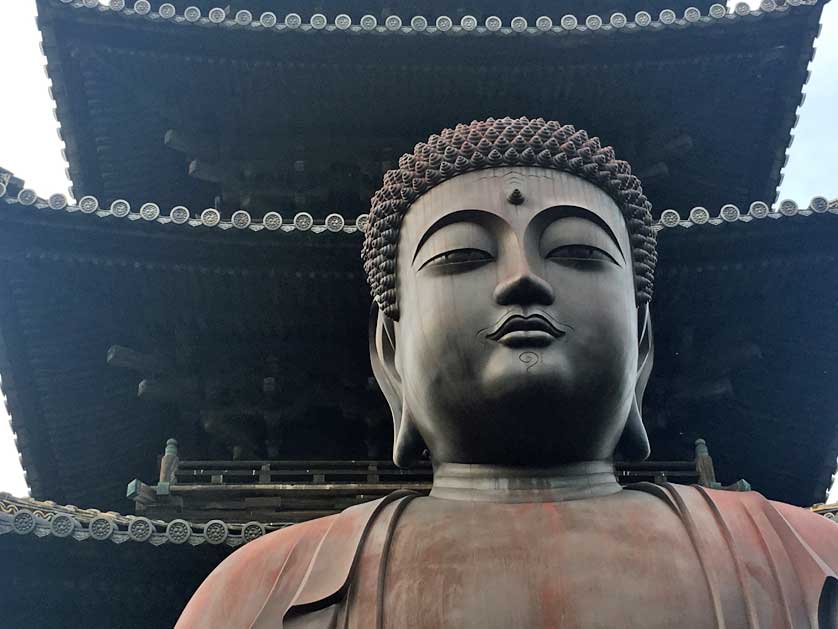
Koshoji Temple Pagoda, Yagoto
Koshoji Temple , which was established by the Tokugawa family, dates from the 17th century and consists of a number of fine buildings including an impressive five-storey wooden pagoda completed in 1808. The temple and grounds of its attached graveyard are situated in pleasant woodland on Yagoto Hill just a few minutes walk towards Imaike from Yagoto on the Iida-kaido. Koshoji temple hosts an annual "1,000-Lantern Festival" at the harvest moon on the third Saturday of October and is a pleasant place to walk or just relax. There are small flea-markets on 5th and 13th of every month. Nearby Yagoto has some good restaurants, bars and shops catering to the many university students in the area. Nagoya University, Chukyo University, Nanzan University and Meijo University are all within easy reach of Yagoto. Tel: 052 832 2801 Access : Yagoto subway station (5 minutes walk)
Shiroyama Hakusan Shrine
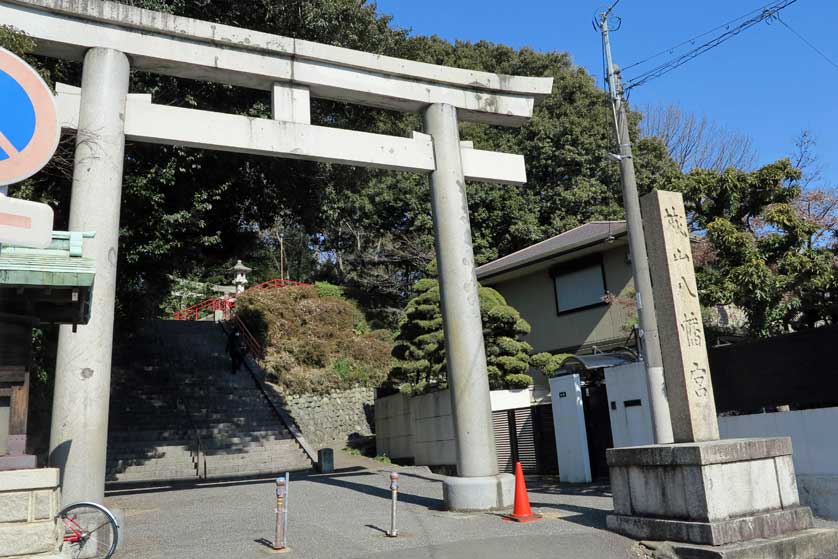
Shiroyama Hakusan Shrine, formerly Suemori Castle, is located to the north west of Motoyama station on the Higashiyama subway line. The original Suemori castle dates from the sixteenth century and the present-day shrine now hosts colorful night-time festivals (matsuri) in both July and October featuring traditional Japanese music and dance performances. Access : Motoyama subway station (5 minutes walk uphill to the north).
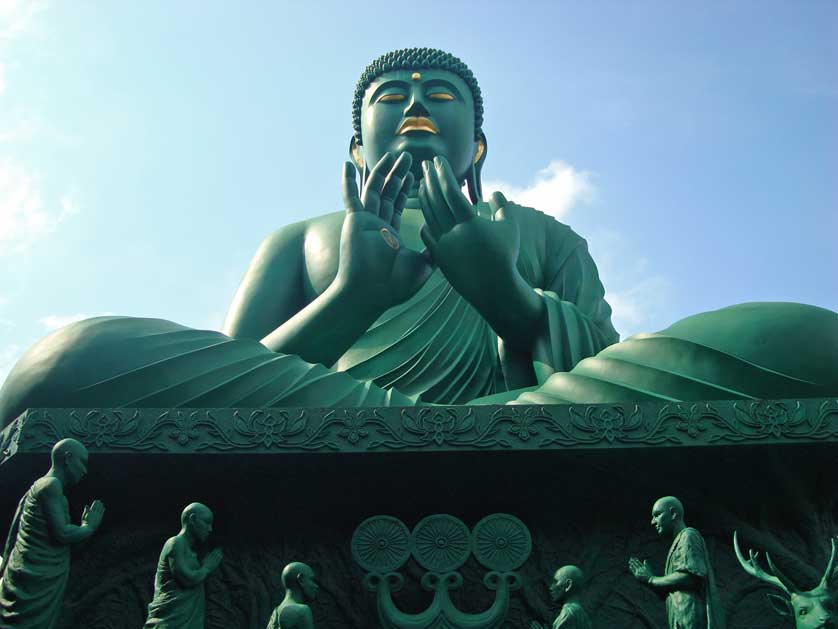
Toganji Temple in the Motoyama area also dates from the sixteenth century and includes an impressive 15m high statue of the seated Buddha. Toganji has many links to India as one of the high priests completed his studies there. The temple grounds contain a Shiva-Lingam and a shrine dedicated to the Goddess Saraswati, who is honored in a Benzaiten Festival every May 7-8. Toganji also contains a huge wood block said to purge past sins if touched with one hand. Access : Motoyama subway station.
Toyota Commemorative Museum of Industry and Technology
Toyota, now world famous for its cars, started life as a textile firm and the fascinating Toyota Commemorative Museum of Industry and Technology , housed in an old red-brick textile factory, displays textile looms and a history of automobile design in its two pavilions. Check out their hi-hi-hi-tech car-making robots. Admission 500 yen. 9.30 am-5 pm; closed Monday. Access : Sako Station on the Meitetsu line or Kamejima subway station.
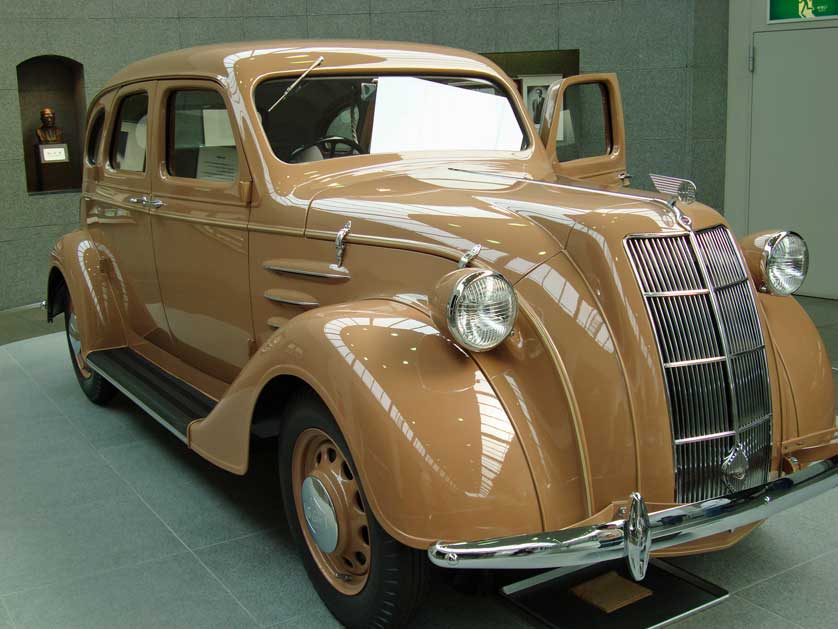
Toyota Automobile Museum, Nagoya
If you need even more of a car fix, head out east of the city to the amazing Toyota Automobile Museum , which has separate floors dedicated to European/American motors and Japanese cars. Never seen a 1926 Bugatti Type 35B or a 1912 Rolls Royce Silver Ghost in mint condition? You can here. 500+ different miniature cars, and other assorted souvenirs available in the museum shop. Admission 1000 yen; 9:30 am-5:00 pm; Closed Monday. Access : Fujigaoka subway station, then Meitetsu bus.
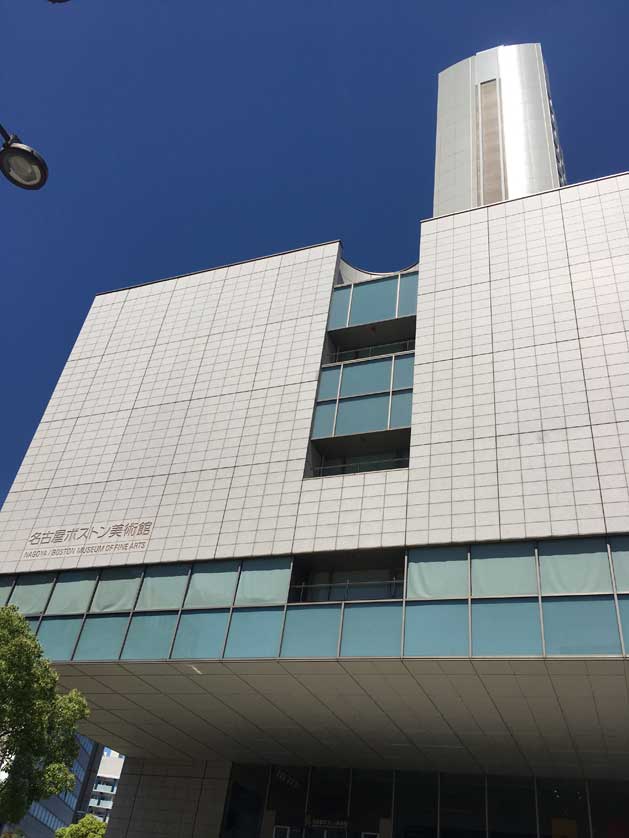
The former Nagoya - Boston Museum of Fine Arts, Kanayama
Rumors abound that the Nagoya/Boston Museum of Fine Arts - the sister museum of the Museum of Fine Arts, Boston - may be closing, so see it while you can ( Update : the museum did close in 2018). Displays of both Japanese and Western art from the Boston museum's peerless collection. This is the first example of an American museum having a "sister" institution in Asia. The museum opened in 1999. Admission 200 yen; 10 am-5 pm (to 9 pm Friday); closed Monday. Access : Kanayama subway station.
This museum in the city center houses some interesting permanent collections, including some striking samurai armor and weaponry, and hosts international class exhibitions, a notable example being that of Gandhara sculpture in 2003. Admission 500 yen; 9.30 am - 5 pm; closed Monday. Access : Sakurayama subway station.
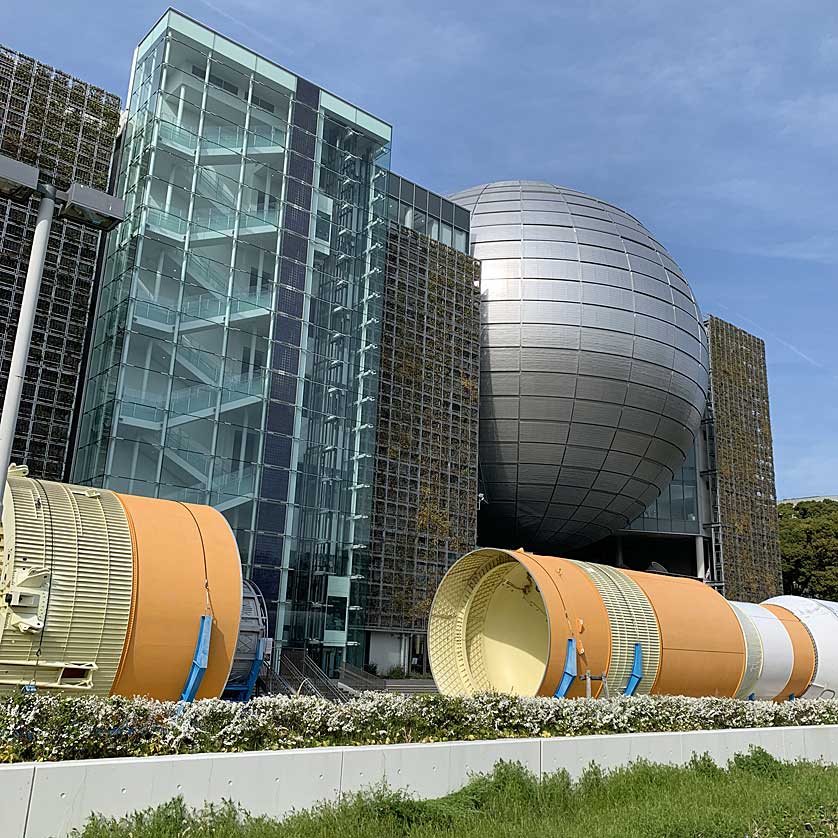
Nagoya City Science Museum houses one of Japan's largest planetariums and has interesting sections on modern technology, life sciences and general science with a variety of hands-on exhibits which will appeal to children, especially the extremely well-done model railways on the third floor in the transport section and the kids' play area on the ninth floor. The museum also has features on the local Chubu area's links to science and industry. English materials and a floor-plan are available at the entrance. Recommended for visitors and residents with children alike. Admission fee; 9.30 am-5 pm; closed Monday/3rd Friday of the month. Access : Fushimi subway station (Exit 5).
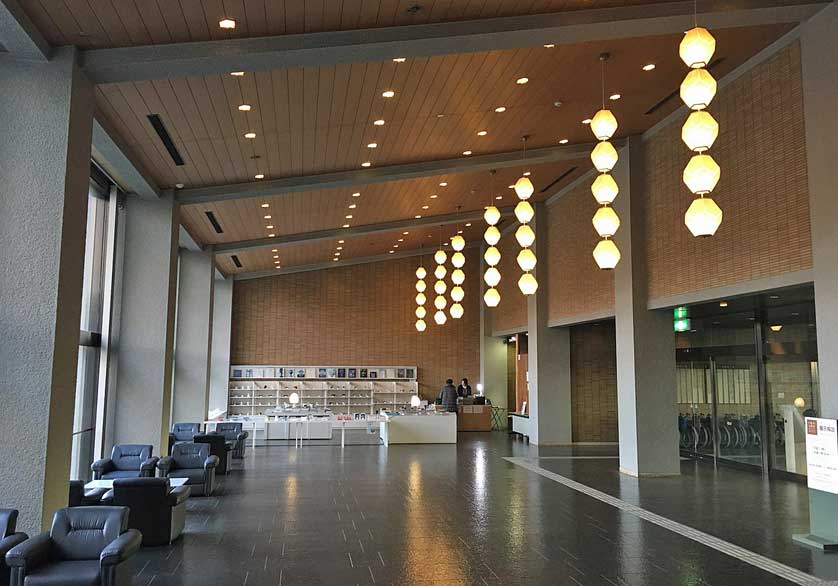
The Aichi Prefectural Ceramic Museum exhibits a vast collection of pottery ranging from the Jomon period (circa 10,000 BC - circa 300 BC) to contemporary ceramics produced by some of Japan's most famous potters. Some historians claim that the world's first pottery was produced in Japan and the country has a rich tradition of ceramic art. The museum is located in Seto City, which has been producing fine ceramics ( setoyaki ) for well over a 1,000 years. The museum also contains a restaurant, a traditional tea-ceremony room where visitors can drink from tea bowls made by famous artists and a studio for guests to try their hand at making and decorating their own pottery. Open 9.30 am-4.30 pm; Closed Mondays. Tel: (0561) 84 7474. Access : From Fujigaoka station on the Higashiyama subway line, take a Meitetsu bus to Toji Shiryokan (Ceramic Museum) stop.
IdcN International Design Centre
Tracing the history of design from Art Deco to the present day, the museum is housed on the 4th floor of the Nadya Park Building, which also contains an impressive library dedicated to design. Admission free. 11 am-8 pm; closed Tuesday. Access : Yabacho subway station.
Higashiyama Zoo and Botanical Gardens
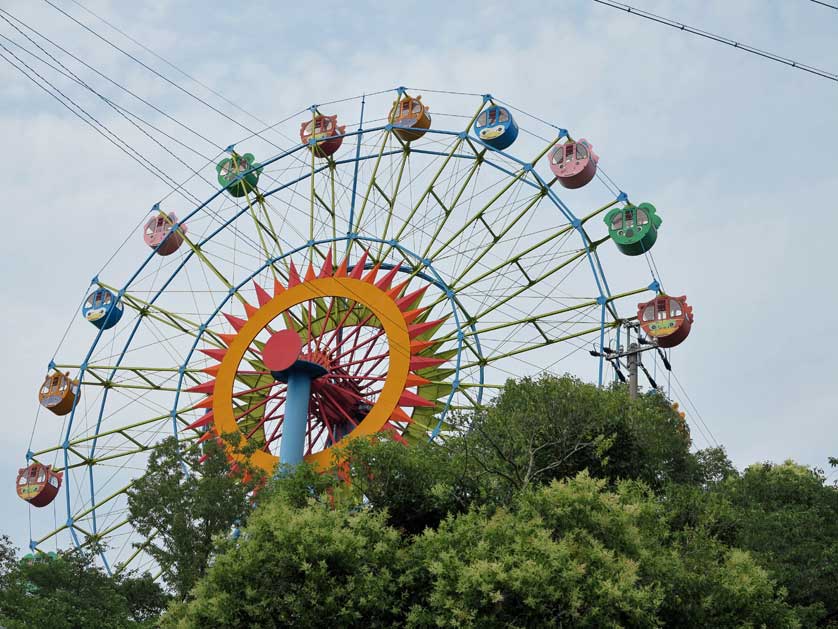
Nagoya's zoo - first established in 1937 and set in Higashiyama Koen (Park) - is one of the largest zoological gardens in Asia with around 125 species of mammals, over 70 species of reptiles and more than 86 species of birds. This spacious, well-planned zoo is adjacent to the city's Botanical Gardens (complete with an extensive greenhouse and Insect Hall), an amusement park and the recently opened Higashiyama Sky Tower, which has spectacular views of the city from its observation decks and restaurant 100 meters above ground. (Extra admission charge necessary). The park also contains a 10 meter high statue of Kannon (the Buddhist Goddess of Mercy) which was transferred from Nittaiji Temple. The zoo and botanical gardens offer a good day out for all the family, with good eating and drinking in the upmarket Motoyama area nearby. Admission 500 yen. 9.30 am-4.30 pm daily. Tel: (052) 782 2111 Access : Higashiyamakoen subway station or Hoshigaoka subway station on the Higashiyama Line.
Port of Nagoya Aquarium
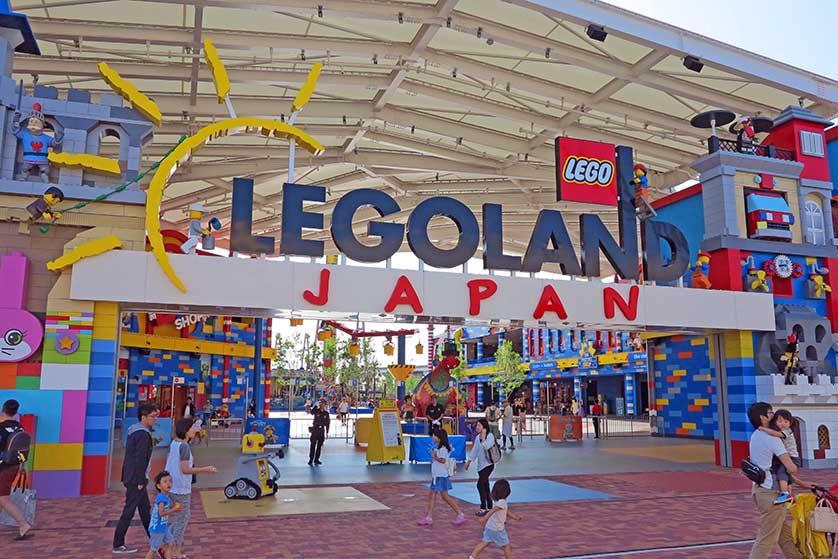
Legoland in the port area of the city
The modern Nagoya Aquarium is one of several attractions at the still-developing Garden Pier area of Nagoya port in the south of the city, which includes Legoland , a maritime museum and Port Tower. The aquarium is divided into five different ecosystems all found in the Pacific Ocean. Don't miss the popular penguin tank. The aquarium is well known for its involvement in marine research and conservation. Admission fee (reductions for children); 9.30 am-5 pm (to 8 pm July 21-August 31). Access : Nagoyako subway station.
Little Italy - Villaggio Italia

Little Italy
Opened in the spring of 2005, Little Italy (Villaggio Italia) was a shopping/restaurant complex situated at Nagoya Port across from the aquarium, which closed in May 2008. There were facades of classical Italian buildings, gondola rides on a mini Venetian canal, Italian dining al fresco and lots and lots and lots of shopping: both for Italian designer goods and more prosaic pasta, olive oil and Parmesan cheese in the supermarket. There were also occasional live performances by a traditional Italian band. Admission charge; 10 am-9 pm (for shopping); 10 am-11 pm (for dining). Tel: 052 659 1422 Access : Nagoyako subway station.
Villaggio Italia - Photos
Urban legend has it that Nagoya is home to the modern gambling pursuit of pachinko , and there used to be a small museum on the 3rd floor of the Masamura Building dedicated both to the game itself and to Takeichi Masamura, the godfather of the post-war pachinko boom. Admission free. Weekdays 11 am-4 pm. Access : Joshin subway station. (The building were the museum was housed was demolished in 2014 and rebuilt).
Koma (Spinning Tops) Museum
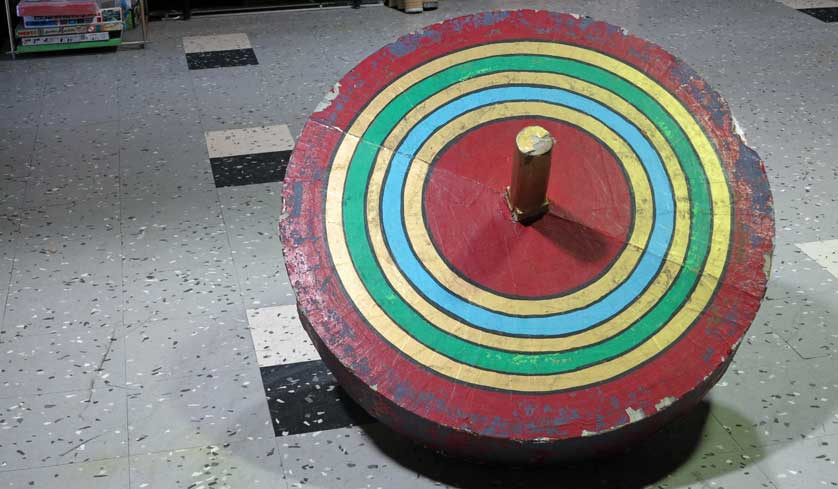
Koma Museum
The "Japan Koma (Spinning Tops) Museum" is a must-see for enthusiasts of koma (spinning tops) and modern-day gyroscope toys and gyroscopes. The pastime of 'spinning toys' originated in Ancient Egypt and spread worldwide, especially throughout Europe and Asia and has gained particular enthusiasm in Japan. This family-run shop-cum-shrine to spinning tops exhibits spinning tops from numerous countries from throughout the ages as well as being a meeting-place and purchasing center for collectors and traders. Admission free. Tel: (052) 661 3671 Access : A 10-12 minute walk from Tsukijiguchi subway station on the Meiko Line (change at Kanayama subway station on the Meijo line) or closer from Inaei station on the Aonami Line. Japan Spinning Top Museum (in Japanese)
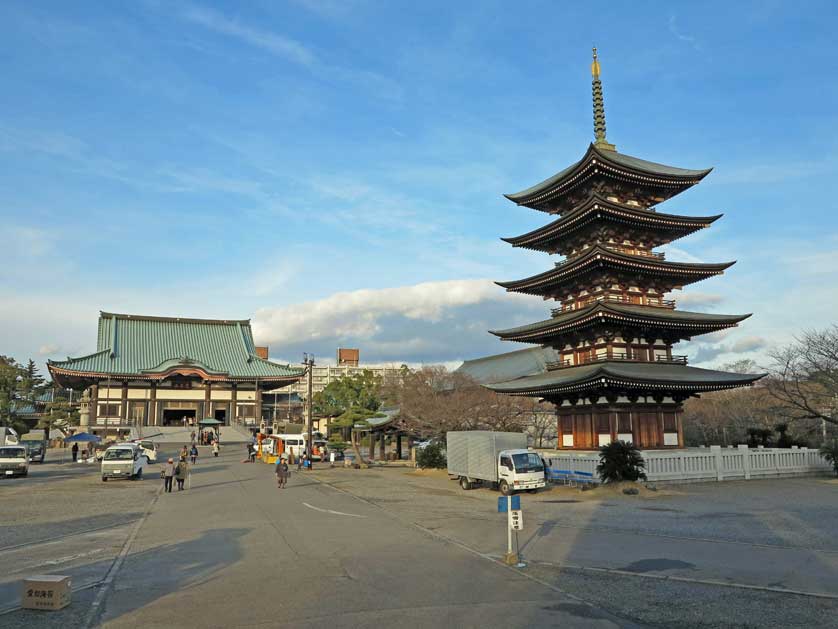
The Nittaiji Temple (lit. Japan-Thailand Temple) in Kakuozan in the north east of the city was established in 1904 and rebuilt in 1984 as a repository for a Thai-style golden image of Buddha and Buddhist relics present by the King Chulalongkorn of Siam in 1900. The Temple is maintained by various sects of Buddhism as an international, non-sectarian temple. The 21st of each month sees the approaches to the temple play host to a large flea-market. Admission free. Access : Kakuozan subway station (Higashiyama Line).
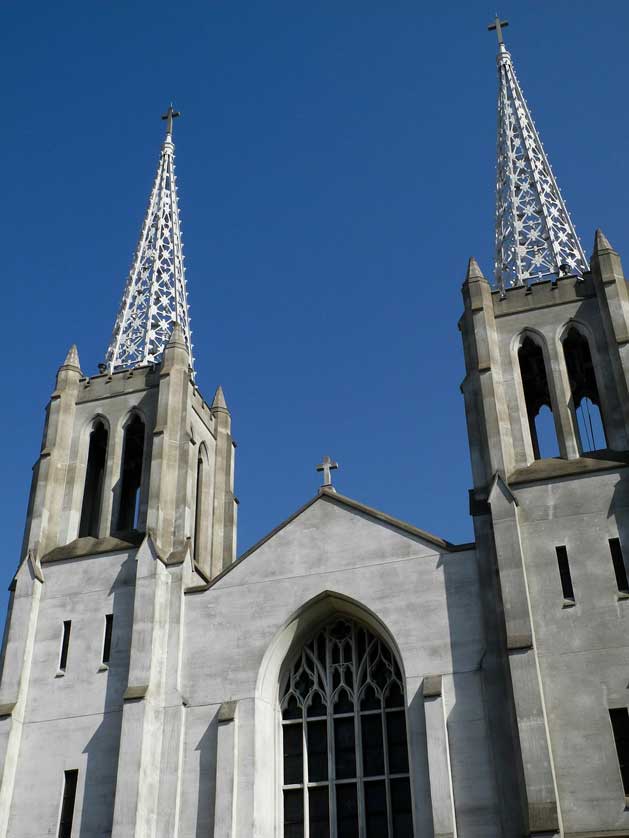
The Nunoike Cathedral is Nagoya's Catholic Cathedral and the large Gothic-style building with two impressive spires was completed in 1962. The church holds masses everyday with multiple services on Sundays. There are also monthly masses celebrated in both English and Tagalog. Next door is St. Mary College - an English language college. The diocese of Nagoya includes churches in Aichi, Gifu, Fukui, Ishikawa and Toyama Prefectures. 12-23 Aoi 1chome, Higashi-ku, Nagoya, 461-0001 Tel: 052 935 6305 Access : Shinsakae-machi subway station (Higashiyama Line) or Kuramamichi subway station (Sakuradori Line).
Toyota Municipal Museum of Art features works by Gustav Klimt, Egon Schiele, Edvard Munch, and others. Not only strictly for art lovers, it is worth the trip just to see the building. The architect, Yoshio Taniguchi, better known for his recent work on the Museum of Modern Art (MoMA)'s renovations in Manhattan has created a building that appears to float on water. Spectacular. Adults 300 yen, high school/university Students 200 yen for the permanent collection (reductions for groups over 20). Elementary/junior high school students free. 10 am-5.30 pm (entrance until 5 pm), closed Monday. Access : From Nagoya Station, take the Higashiyama line to Fushimi station. Then take the Tsurumai line bound for Toyota city and get off at the last stop. Approximately 12 minutes walk. Tel: 0565 34 6610
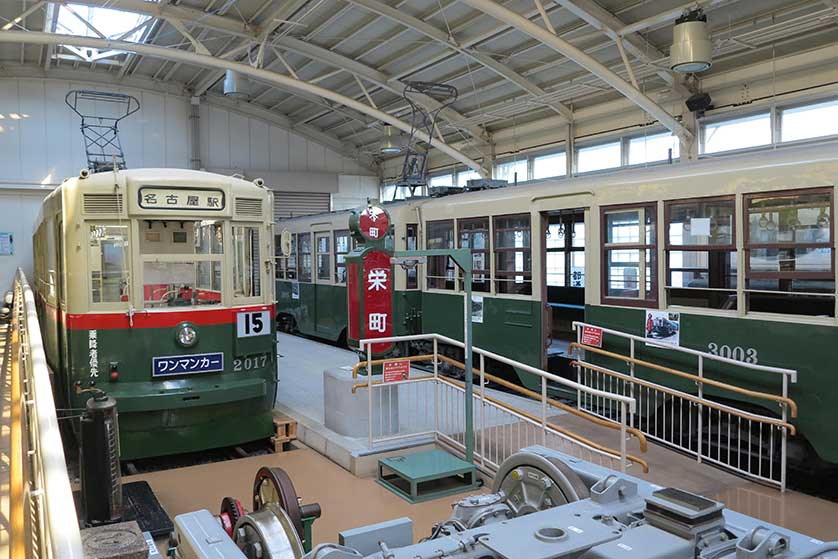
Nagoya City Tram & Subway Museum , a few minutes walk from Akaike subway station, houses a collection of the city's old subway trains and streetcars. The museum is popular with children (and their fathers!), who can practice driving Nagoya's present-day subway trains and older models of streetcars using Playstation-style computer simulators, watch model train displays as well as run around inside the carriages and try on railway staff uniforms and hats. Outside the museum is a giant drill used to dig Nagoya's subway lines. Admission free. Access : 5 minutes walk from Akaike Station on the Tsurumai line. Open 10 am-4 pm; closed Wednesday. Tel: 052 807 7587
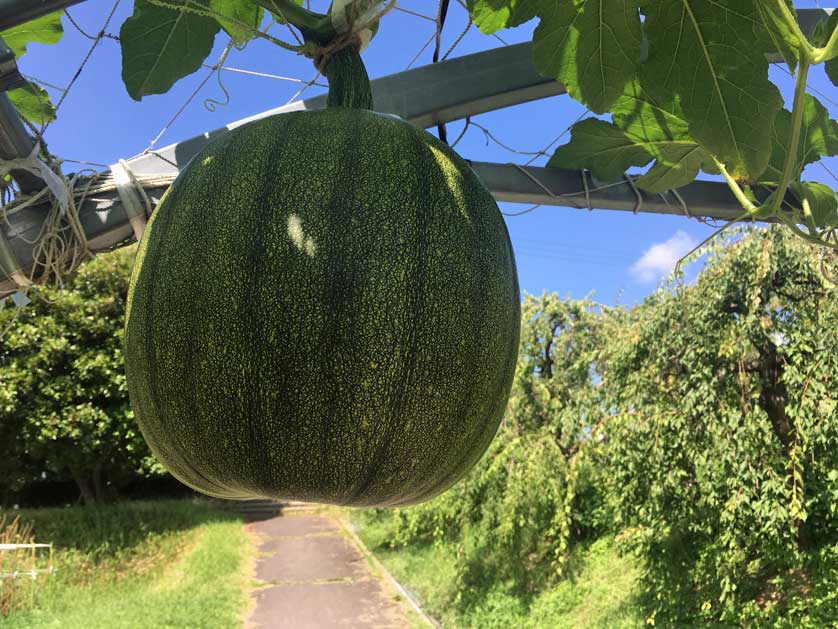
Nagoya Agricultural Center is free to get in, there's a cafe, a shop selling often organic vegetables as well as plants and health foods, temperate glass houses, streams and even a model farm with battery chickens, pigs, sheep, goats and cows. The grounds are a popular picnic center for families and couples and everything gets very busy at plum and cherry blossom time. Admission free. Access : 15 minutes walk east from Hirabari Station on the Tsurumai line. Open 10 am-4 pm. Tel: 052 801 5221
Inuyama is located just outside the city on a beautiful river often referred to as Japan's Rhine. The toy-like castle on the hill is Japan's oldest dating from 1537. Nearby Tagata shrine plays host to an annual fertility festival on March 15th when through the shrine grounds freshly carved 3m-long wooden phalluses are drunkenly paraded, which women trying to have children come in hope to touch. Access : Meitetsu train from Nagoya station.
Little World Museum of Man
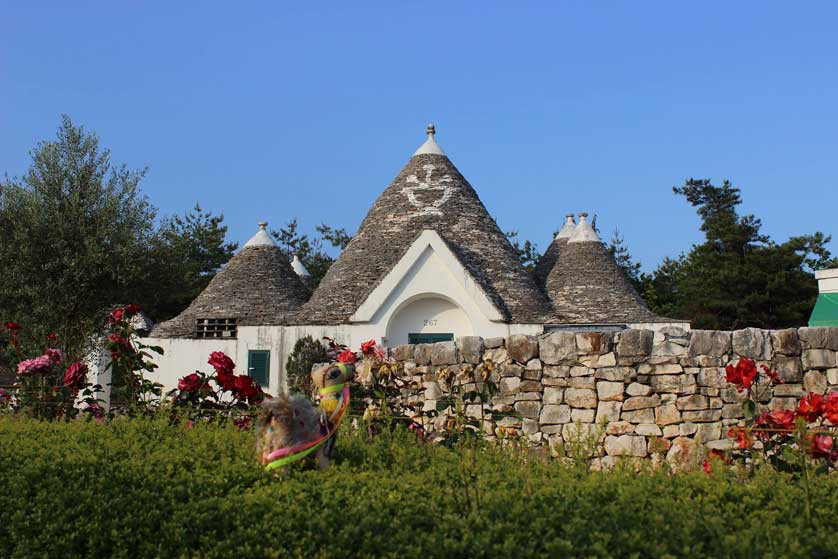
This large (approximately 1,230,000 square meters) open-air anthropological museum contains 33 homes from 22 countries in South East Asia, Europe, Africa and other parts of the world transported all the way to Inuyama . You can sample not only food, but beer and wine, from the different countries as well as catch a variety of ethnic shows and musical performances as you stroll through the pleasant grounds set in the countryside. More fun for the whole family. Admission 1,700 yen (1,500 yen for foreign visitors). 9.30 am-5 pm daily. Summer evening openings. Access : Bus from Inuyama Meitetsu Station or Nagoya Station.
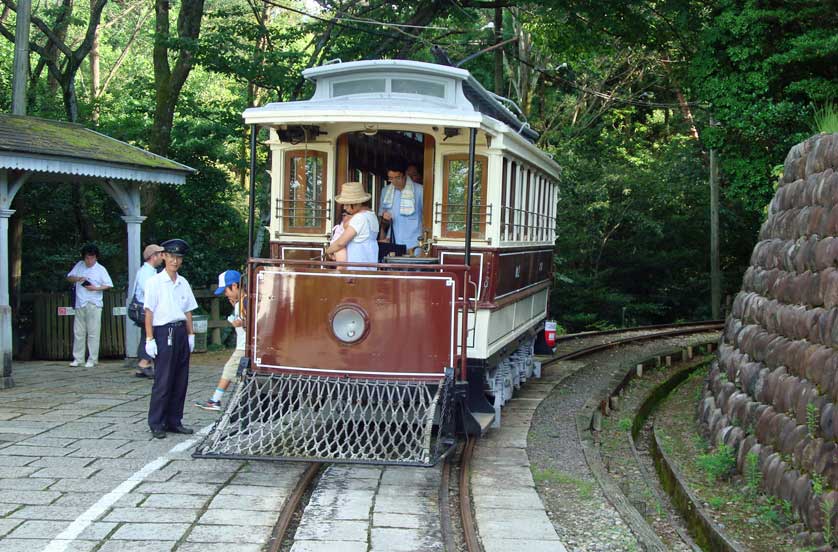
Also near Inuyama, Meiji Mura , opened in 1965 the brainchild of Yoshiro Taniguchi and Motoo Tsuchikawa, is another fascinating open-air attraction. It features buildings preserved in their original state from the Meiji Period of Japanese history (1868-1912) when the country fully opened up to the West. You can stroll through the pleasant parklands (approximately 1,000,000 square meters) or ride the steam train or Kyoto street car, taking in the various architectural delights, including the lobby of Frank Lloyd Wright's Imperial Hotel (built in 1923 and demolished in 1965), Lafcadio Hearn's summer house and the smooth, shiny all-wood Maebashi Prison. Altogether 67 structures have been carefully and tastefully renovated and preserved. Each building has an explanation in both English and Japanese of the history behind the structure. There are also performances on site by a kabuki troupe in the Kurehaza Theater and sake tastings in Kyoto's former Nakai brewery. Admission 600 yen. 9.30 am-5 pm (Mar-Oct) 9.30 am-4 pm (Nov-Feb). Access : 20 minutes by bus from Inuyama Station. Tel: 0568 670 314
Kasadera Kannon
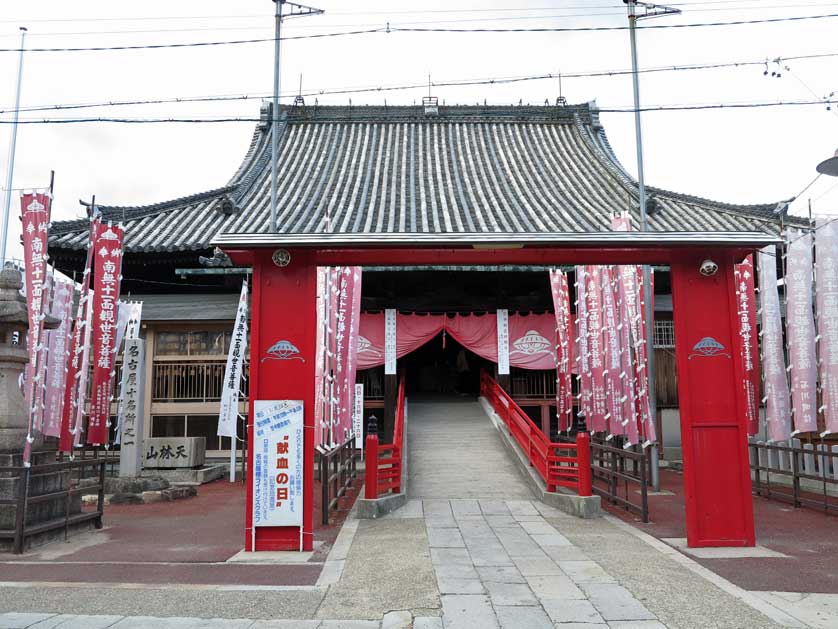
Kasadera Kannon or Ryufukuji was founded by the priest Zenko and belongs to the Shingon sect of Japanese Buddhism. The temple has a fine Niomon entrance gate, a number of small subsidiary temples and a two storey pagoda. Kasadera Kannon stages a colorful Setsubun Festival on February 3 each year and a temple flea market on the 18th of every month. Listen to a Buddhist prayer at Kasadera Access : A five minute walk from Moto Kasadera Meitetsu Station.
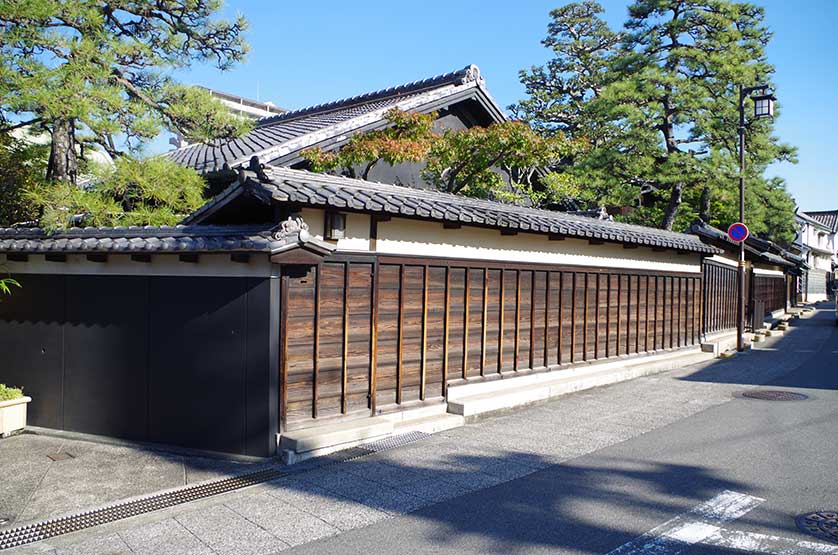
Arimatsu is famous for its shibori textiles
Arimatsu , just outside central Nagoya in Midori-ku, was an old Edo-period (1603-1867) post station town on the Tokaido highway between Kyoto and Tokyo. Arimatsu's claim to fame are its intricate Arimatsu shibori (tie-dyed fabrics). The technique is used to produce colorful designs for cotton kimonos and yukata . As the industry is still carried on to this day, many of the original merchant houses have been preserved. There are a number of shops and shibori museums where visitors can purchase both traditional and more contemporary tie-dyed products as well as try their hand at producing them. Arimatsu Narumi Shibori Kaikan is a good place to start. The technique found its way to the Nagoya area when craftsmen from Oita in Kyushu skilled in shibori were ordered to help in the construction of Nagoya castle by the Shogun Tokugawa Ieyasu and later settled in the area. Arimatsu's festival is held on the first Sunday of October and consists of a street parade with floats and participants in traditional costume. Access : Arimatsu station on the Meitetsu Honsen Line from Nagoya station.
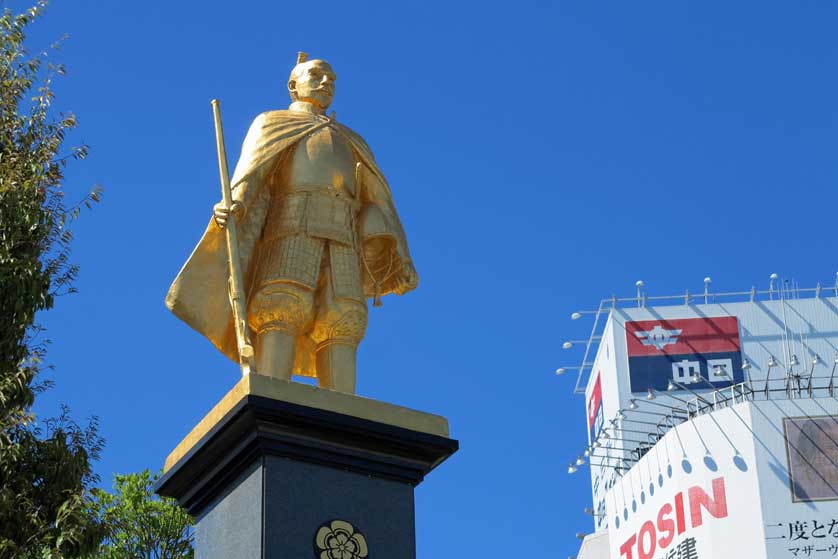
Oda Nobunaga statue at JR Gifu Station
Gifu , around 30 km north of Nagoya city, and accessible by either the Meitetsu or JR Line from Nagoya station is worth visiting for its twin attractions of cormorant fishing ( ukai ) on the Nagara River and Gifu castle (Gifujo), perched on top of Kinka-zan, which affords great views of the surrounding area even as far as the Hida mountains and Mt. Hakusan. The cormorant fishing takes place at night from May 11 to October 15 and visitors can book a place on the long, canopied boats hung with paper lanterns to watch the birds in action as they catch, but can't swallow, the local ayu sweet fish. Gifu is famous for its production of paper umbrellas and lanterns and it is possible to visit the workshops and purchase directly. Other attractions include Shohoji Temple which contains an impressive 13 meter Buddha made of lacquered paper and Zuiryuji Temple near the cable car station in Gifu Park at the foot of Kinka-zan. Gifu Park also contains Nawa Insect Museum with over 300,000 specimens on display making it one of the largest such museums in the country. Gifu tourist office is located on the 2nd floor the JR station (Tel: 0582 62 4415).
Street cars may no longer run in the city streets, but the town retains an unhurried and relaxed air. Last July, however, the Mayor of Gifu, Shigemitsu Horie, announced the city could not continue to operate the streetcar system, which is deep in the red. Meitetsu, the operator of the 36.6- kilometer-long system, said service would discontinue at the end of March 2005. With the city unwilling to pump taxpayer yen into the system, municipalities along tram routes floated a plan where they would purchase the Meitetsu assets and entrust operation of the system to Okayama Denki Kido. But negotiations broke down over the transfer price. A provisional estimate put the cost of infrastructure development and operation at 8.4 billion yen over 10 years. Though street cars are making a comeback around Japan, they may be a thing of the past in Gifu very soon. Access : Meitetsu or JR Lines from Nagoya station. Bars & Restaurants in Gifu
Read a detailed guide to Gifu city
Book Hotels in Nagoya
Accommodation in nagoya.
Nagoya has a nice range of accommodation including hotels and ryokan. Most of Nagoya's hostels cluster near Nagoya Station in the Meieki district of the city. Other groupings of hotels are in Fushimi and Sakae , the financial and entertainment areas of the city, respectively.
Some recommendations near Nagoya Station include the luxury Nagoya Marriott Associa in the JR Central Towers, the 3-star Hotel Resol Nagoya, the Meitetsu Grand Hotel, the Castle Plaza Hotel, the Chisun Inn, the budget Toyoko Inn Nagoya-eki Shinkansen-guchi, the Meitetsu Inn Nagoya Eki-mae, the large Daiwa Roynet Hotel Nagoya Eki Mae, the basic and cheap Eco Hotel Nagoya and the Royal Park Hotel.
In Fushimi try the Hilton Nagoya, the Nagoya Kanko Hotel , a deluxe five-star hotel, the landmark Hamilton Hotel Black, Nagoya Rich Hotel Nishiki (formerly Green Hotel), Fushimi Montblanc Hotel and the 3-star Nagoya Grace Inn with complimentary breakfast.
Some of Sakae's best hotels include the b Nagoya, the Hotel Creston, the stylish Hotel Trusty business hotel, the no-frills but affordable Hotel Econo Nagoya Sakae, the four star Nishitetsu Hotel Croom Nagoya near Hisaya Odori Station and the reliable Tokyu Inn.
Food and Drink
Don't leave town without slurping down some kishmen : the flat noodles that are a city specialty available in any noodle restaurant.
Recommended Bars, Restaurants, Cafes and Clubs in Nagoya
- Bars, clubs & restaurants in Sakae
- around Yagoto
Anadolu Turkish kebabs - authentic Turkish restaurant and kebab takeaway.
Casablanca - Nagoya's one and only Moroccan restaurant.
The 59's - American style bar and diner.
My Bar - elegant cocktail bar.
STEPS - cool club and bar.
Red Rock - Aussie bar & grill.
The Elephant's Nest - a spacious British style pub.
Shooters - American style sports bar and grill.
Osu, Kamimaezu & Tsurumai
Jerry's Uno - Mexican tacos and world beers.
Yagoto, Irinaka, Shiogamaguchi, Hara
Torikomachi - delicious beer and yakitori in Hara.
The 12th and 13th floors of the Twin Towers at Nagoya station also have a good choice of Japanese and international cuisine coupled with stunning views. For further information on where to eat and drink in Nagoya visit our entertainment page or inquire at the tourist information center at Nagoya Station.
Related Nagoya Features
Nagoya Highlights
Nagoya Hotels
Books on japan.
Sightseeing in Nagoya: read a Nagoya city guide with information on temples, shrines, theme parks, museums, day-trips to Inuyama and Gifu, hotels and attractions.
Our activities in Nagoya

Nagoya Sumo Tournament (July) Nagoya
- Duration : 3 hour
- Location : Nagoya
Our tours in Nagoya
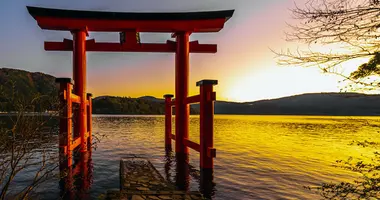
Discover Japan Group Tours in Japan
- Duration : 13 days
- Locations : Tokyo, Hakone Mt Fuji, Kyoto, Nara, Hiroshima, Miyajima
- Included : Visits & meals, English-speaking tour leader, Hotel temple, 3*/4* Hotels & Ryokan
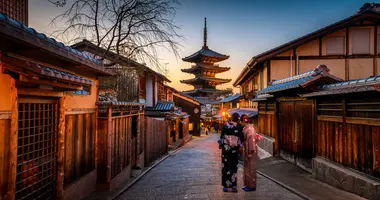
The Tokaido Road Group Tours in Japan
- Duration : 14 days
- Locations : Tokyo, Hakone Mt Fuji, Kyoto, Nara, Koyasan, Osaka
- Included : English-speaking tour leader, 3*/4* Hotels & Ryokan, Hotel temple, Visits & meals
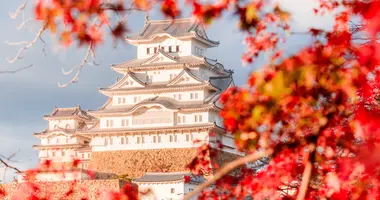
Autumn Leaves Photography Group Tours in Japan
- Duration : 12 days
- Locations : Tokyo, Mt Fuji (Kawaguchiko), Osaka, Himeji, Kyoto, Nara
- Included : English-speaking tour leader, 3* Hotels & Ryokan, Visits & meals
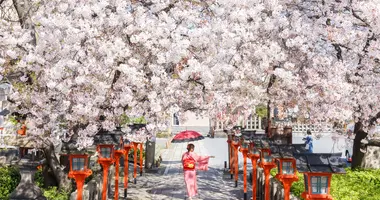
Cherry Blossoms Photography Group Tours in Japan
- Locations : Tokyo, Kyoto, Osaka, Nara, Kawaguchiko, Tokyo
- Included : English-speaking tour leader, 3*/4* Hotels & Ryokan, Visits & meals
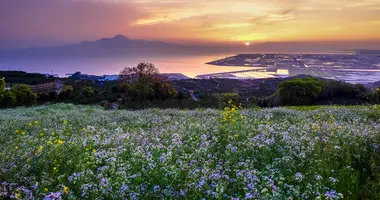
Urban and Rural Japan Group Tours in Japan
- Duration : 21 days
- Locations : Tokyo, Hakone Mt Fuji, Kyoto, Nara, Koyasan, Osaka, Kobe, Takachiho, Kumamoto, Nagasaki, Hiroshima, Miyajima
Latest Articles
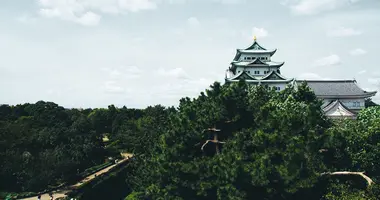
Destroyed during the Second World War, all that remained of Tokugawa's prestigious castle was the main keep. But gradually, the palace is rising from the ashes.
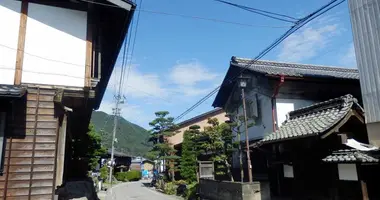
Wada Post Town
Wada Post Town (Wada Shuku) in Nagano Prefecture has a well-preserved honjin (inn) and many other historical buildings set in lovely countryside.
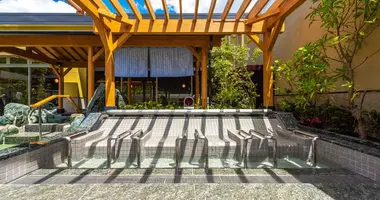
Nagoya Baths
Nagoya Baths & Bathing in Nagoya: enjoy modern Japanese bathing at Funoyu at Chubu International Airport and Raku Spa Garden in Chikusa-ku.
All the themes of the city

Markets in Japan
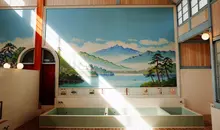
Onsen, Hot Springs and Public Baths
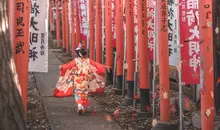
Family Travel
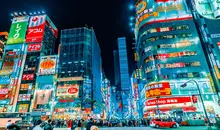
Nightlife in Japan: Going out, exploring and drinking

Temples and Shrines
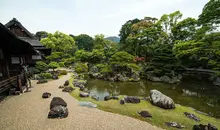
Parks and Gardens
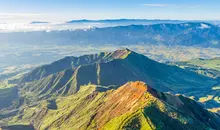
Outdoor Activities
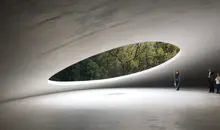
Museums and Galleries
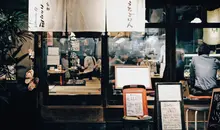
Restaurants and Cafes
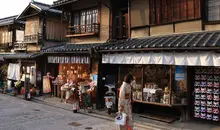
Shopping and souvenirs
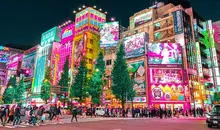
Japanese Pop Culture
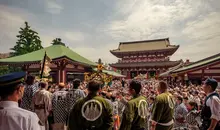
Events and Festivals
Please select your country on the list below:
- Switzerland
- United Kingdom
- Other countries
10 Best Things to Do in Nagoya
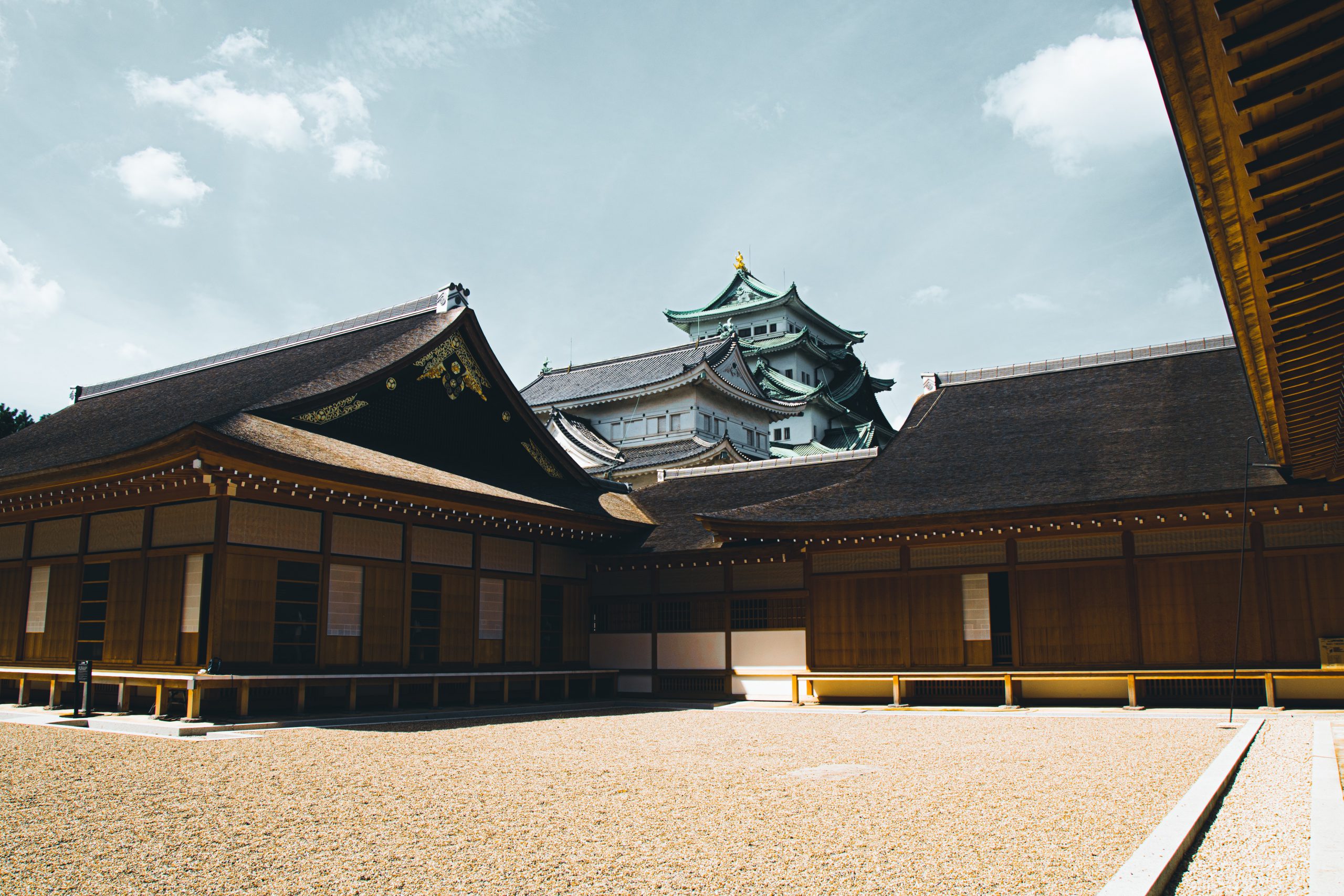
Nagoya is one of the biggest cities in Japan located in Aichi prefecture . Being at the convenient location between Tokyo and Osaka , many tourists visit there every year. And if you are planning to visit the first Studio Ghibli Park that opened in November 2022, combine the other attractions in Nagoya for your trip! Thanks to the convenient transportation system, you can get around the main tourist spots in Nagoya in one or two days. Here we introduce the best things to do in Nagoya.
1. Have a “Morning”, breakfast at Nagoya Station
Japan wonder travel tours , other articles you might like.
When you travel to Nagoya City by highway bus or Shinkansen from Tokyo or Kyoto, you will get to Nagoya Station. Nagoya Station connects to the main spots by subway, so you can start your trip easily! If you get there in the morning, have breakfast here at the station. There are many restaurants in the station buildings and around the station too. Actually, breakfast is what Nagoya is famous for― when you order a drink, usually, bread, salad, and boiled egg will come along at the price of a drink! This style of breakfast is called “Morning” in Japanese. We recommend Konparu and KAKO BUCYO COFFEE for a tasty breakfast. Try one of the best Nagoya’s specialty Ogura Toast which is a buttered toast with sweetened red beans on top.
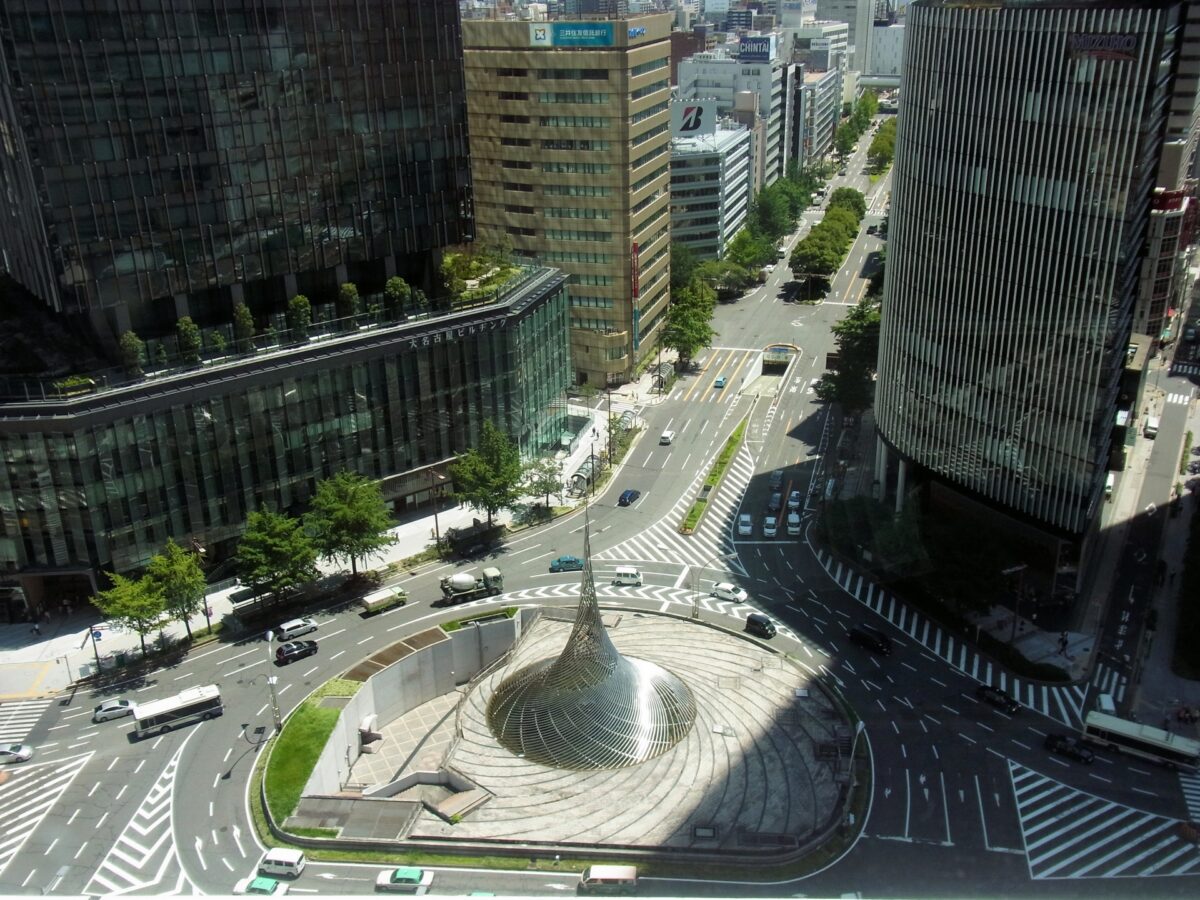
2. Visit Nagoya Castle
Do you know what is the symbol of Nagoya? It’s Shachihoko, and you can find it on the top of Nagoya Castle . Shachihoko is a legendary creature with a head of a dragon and a body of a fish. People set it on the castle’s roof since it is believed to protect the castle from fire. Originally Nagoya Castle was built in 1610 but was destroyed during the war. However, Honmaru Goten was reconstructed and completed in 2018 and many visitors come to see its outstanding beauty.
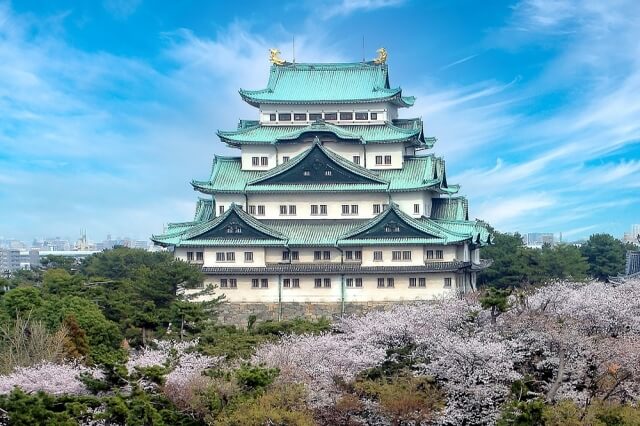
5 minutes walk from Meijo Line Shiyakusho Station Or get off at Nagoya Castle Bus Stop (Nagoya Sightseeing Rout Bus Meguru)
Recommended Tour:
3. Stroll around the Sakae Area
If you want to go shopping, or just stroll around the exciting city, Sakae is a good destination for you. It is the center of Nagoya and the most urban area. Oasis 21 is a modern facility that has some restaurants and shops, and also a convenient bus terminal. Its rooftop is called Spaceship-Aqua, where water is running on the surface of the glass. You can also enjoy the illumination in the evening. Another iconic building in Sakae is Chubu Electric Power MIRAI TOWER. Enjoy the panorama view from the observation deck at 90 meters above the ground. There are mirrors on the ceiling and floor at the observation deck so that you can see the reflection of the city view. Don’t miss the project mapping at night too! You can also enjoy the trendy cafes and shops at the foot of the tower.

Get off at Sakae Station
4. Shopping at Osu District
Visit Osu Shotengai (shopping district), where small stores and restaurants line up the street. There are a variety of shops and restaurants such as thrift stores, a Japanese Unagi (eel) restaurant, a Brazilian restaurant, an Italian restaurant which is run by the world pizza-making champion, maid cafes, and an Alice in Wonderland-themed concept shop, etc. It’s also fun to just walk around and try some finger foods. Taiwanese fried chicken and bubble tea are popular picks for the locals. You can also find a big statue of Manekineko (lucky cats) and the unique temple Banshoji where you can see the digital show on the dragon statue in front of the temple!

Get off at Osukannon Station or Kamimaezu Station
5. Higashiyama Zoo and Botanical Gardens
Higashiyama Zoo and Botanical Gardens is about 60ha, and there is a zoo, botanical garden, small theme park, and Higashiyama Sky Tower. The zoo has about 500 different species which is the biggest number in Japan. One of the popular animals is a handsome gorilla who attracts many tourists from all over Japan! The botanical garden has about 7,000 different kinds of plants and is the oldest greenhouse in Japan. At Higashiyama Sky Tower, you can look over the city of Nagoya including the TV Tower and Nagoya Dome. If the wealth er is clear, you can even look at Mt. Ontake and Suzuka mountain ranges.

3 minutes walk from Higashiyama Line Higashiyama Koen Station 7 minutes walk from Higashiyama Line Hoshigaoka Station Opening hours 9am – 4:30pm Monday and New Years (December 29th to January 1st) closed Admission fee 500 yen (Adult) 100 yen (65 years old and above)
6. Port of Nagoya Public Aquarium
Port of Nagoya Public Aquarium is one of the biggest aquariums in Japan. It’s also known as one of a few aquariums where you can see a killer whale. You can learn about aquatic animals and history through each exhibition. Sardine Tornado is a must-see show, the best part is over 35,000 schools of sardines move together while changing their shape as the aquarist moves the bag of their feed. Also, don’t forget to watch the amazing dolphin shows too!
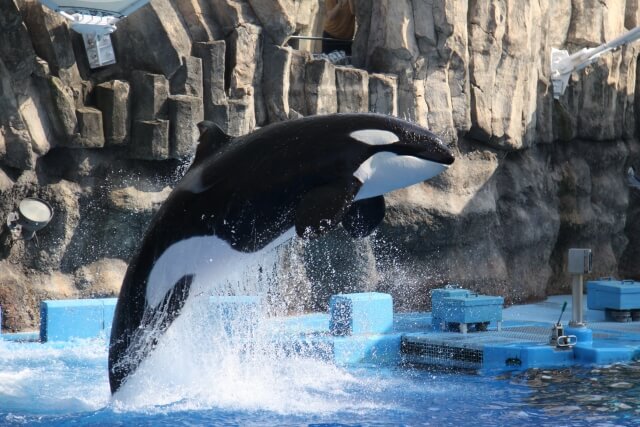
5 minutes walk from Nagoyako Station Opening hours 9:30am-5:30pm Admission fee 2,030 yen (adult) 1,010 yen (elementary & junior high school students) 500 yen (4 years old and above)
7. Learn the History at Atsuta Jingu
Atsuta Jingu is one of the most important shrines in Japan. It was built over 1,900 years ago and enshrines Amaterasu Omikami who is the deity of the sun and stores one of the three sacred treasures, Kusanagi no mitsurugi . This sacred sword is not open to the public but you can see over 6,000 historical items at the museum. Even though the shrine is located in the city, there is a little forest that allows you to enjoy a quiet walk at the shrine.
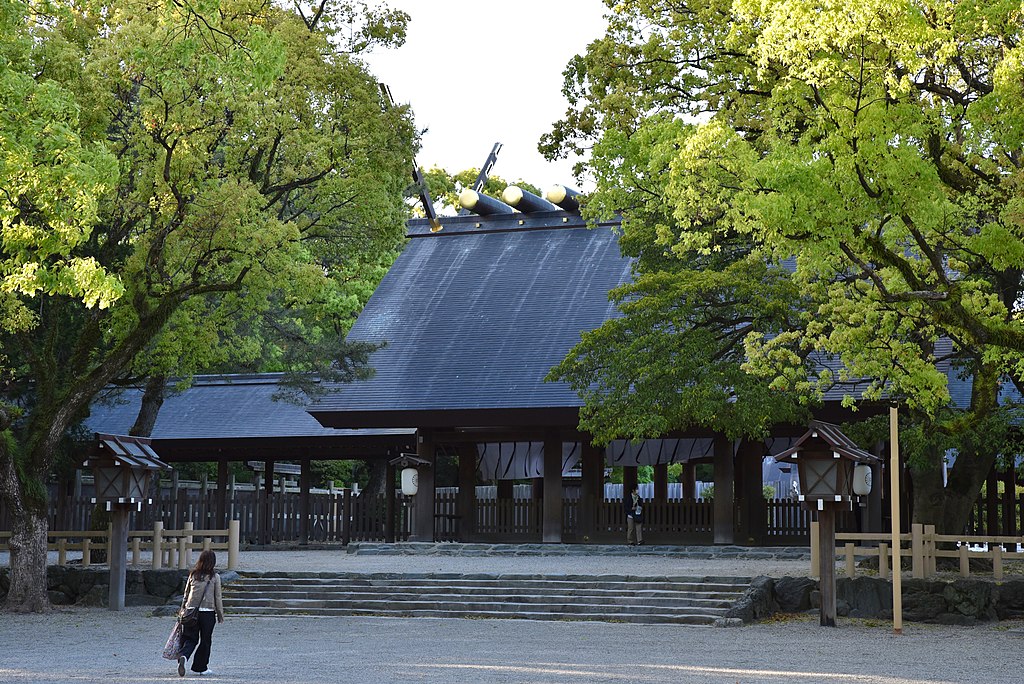
3 minutes walk from Meitetsu Nagoya Honsen Tokoname Line Jingumae Station 1 minute walk from Meijo Line Jingunishi Station
8. Take a Memorable Photo at Nagoya City Hall
Nagoya City Hall is known for being used for many movie shoots. It’s a mix of modern and traditional styles of architecture. The clock tower and Shachihoko stand proudly to overlook the city. Inside the building, when you enter the city hall, the marble stairs in the main hall welcome visitors. This marble was a leftover from National Diet Building in Tokyo and there are only two places in Japan to use this marble! Another iconic place is the long corridor which is a popular place for shooting. You can visit and take pictures inside of the city hall anytime during business hours.

Get off at Shiyakusho Bus Stop Opening hours 8:45am-5:15pm
9. Relax at Beautiful Tokugawaen Garden
Tokugawaen is a beautiful Japanese garden, which was originally built in 1695 as a retirement house for Mitsutomo who was the lord of Owari. In 1931, the house and garden were donated to Nagoya City and after some reconstruction was made, Tokugawaen was opened to the public. There is Tokugawa Art Museum adjacent to the garden, and they exhibit over 10,000 items from the collection of the Tokugawa family.
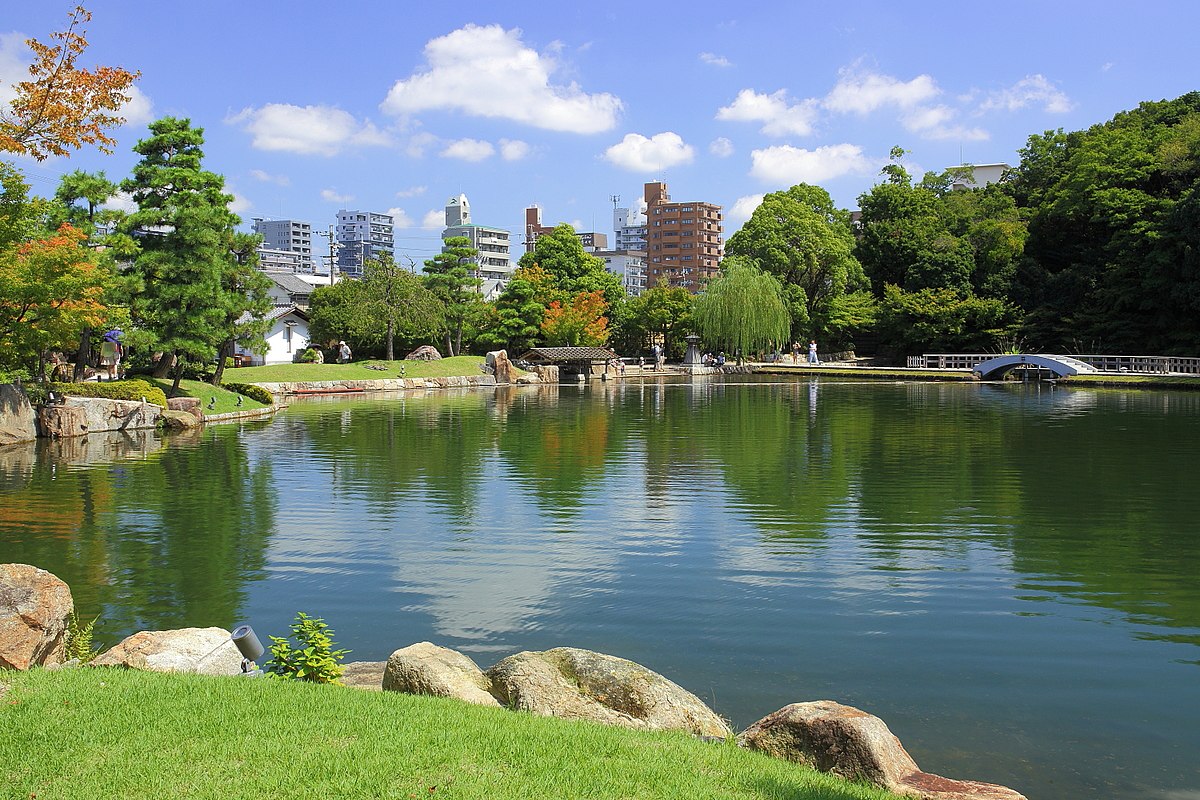
3 minutes walk from Tokugawaen Shindeki Bus Stop Opening hours 9:30am – 5:30pm Monday and New Years (December 29th to January 1st) closed Admission fee 300 yen (adult), 100 yen (65 years old and above)
10. Step into the World of Ghibli at Ghibli Park
Ghibli Park is the first theme park that features Studio Ghibli films. It opened in November 2022, and it’s about 45 minutes train ride from Nagoya Station. Being located at the former site of the World EXPO 2005, you can explore the vast park and enjoy various kinds of flowers and plants as well. There will be 5 areas featuring popular films, but first, they will open the 3 areas: Ghibli’s Grand Warehouse, Hill of Youth and Dondoko Forest. Ghibli’s Grand Warehouse features popular Ghibli films and the studio’s secret with some shops, cafes, and exhibitions. Hill of Youth is inspired by Whisper of the Heart, and Dondoko Forest is inspired by My Neighbor Totoro. In 2023, other 2 areas featuring Princess Mononoke, Kiki’s Delivery Service, and Howl’s Moving Castle will open. There will be no rides and attractions like the other theme parks, but if you are a Ghibli fan, this theme park should be added to your list.
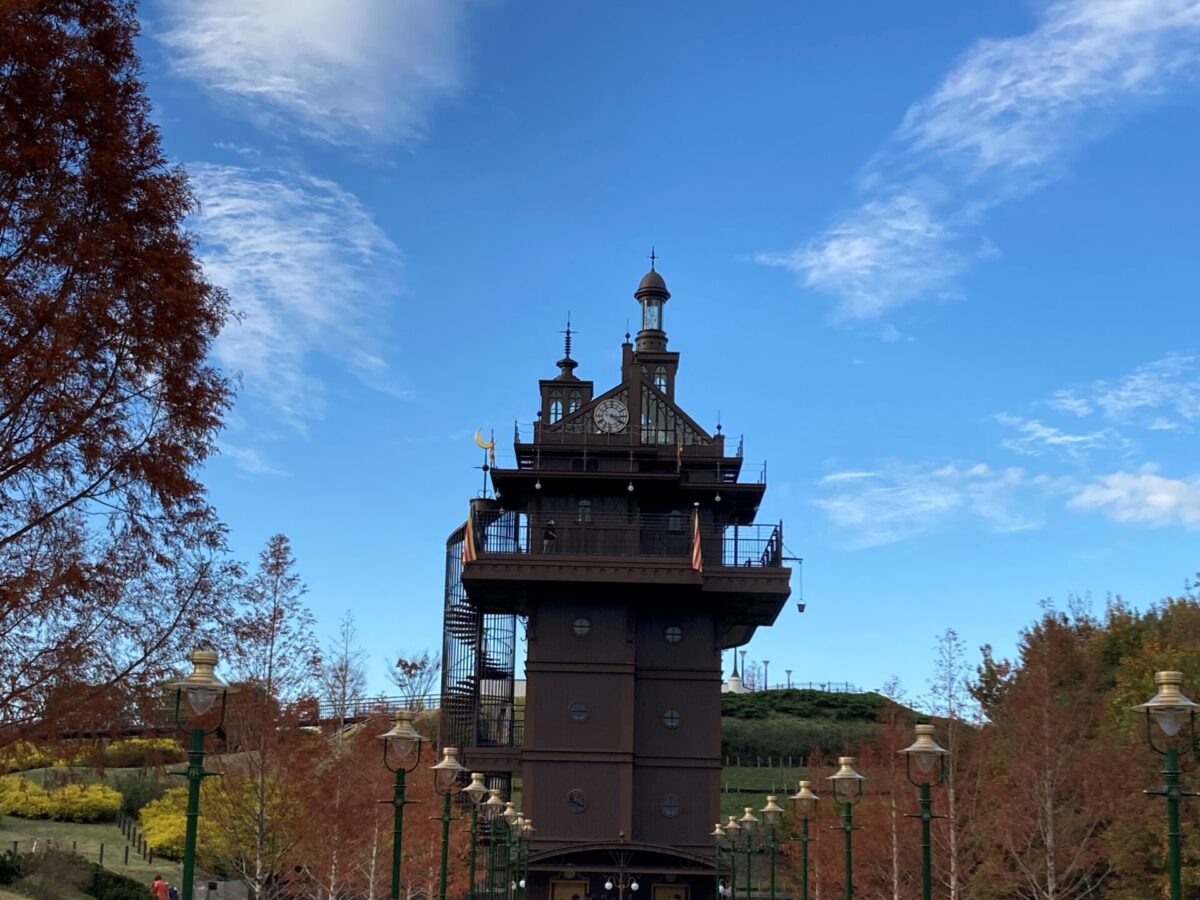
From Nagoya Station, take a subway Higashiyama Line to Fujigaoka Station, transfer to Linimo then get off at Ai-Chikyuhaku-Kinen-Koen Station.
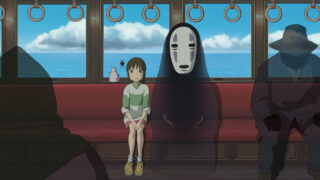
Japan Wonder Travel is a travel agency that offers guided tours throughout Japan. From private walking tours to delicious Food and Drink tours, we can help you organize the best tours just for you! If you want to explore Japan and learn more about the history and backstories of each area you are visiting, our knowledgeable and friendly English speaking guides will happily take you to the best spots! In addition, we can provide you with any assistance you may need for your upcoming trip to Japan, so please feel free to contact us if yu have any questions or need some help!
▶ Tokyo Tsukiji Fish Market Food and Drink Tour Explore the most lively and popular fish market in Tokyo and try some of the local’s favorite street foods and sake with one of our friendly and knowledgeable English speaking guides!

▶ Tokyo 1–Day Highlights Private Walking Tour (8 Hours) There’s no better way to explore an area than taking a tour with a knowledgeable local guide. You will have the chance to learn about the history and interesting background stories of Tokyo, as well as discover some hidden gems which can be hard to do without a guide.

▶ Mt. Fuji Day Trip Bus Tour from Tokyo Experience the breathtaking views of Mt. Fuji by visiting the highlights of the area on our guided sightseeing bus tour! Departing from Shinjuku in central Tokyo, you can travel comfortably to all of the best spots in the area by bus.

Follow us on Instagram or Facebook for more travel inspiration. Or tag us to get featured!
Happy traveling!
Stay informed of the best travel tips to Japan, the most exciting things to do and see, and the top experiences to have with the Japan Wonder Travel Newsletter. Once every two weeks we will introduce you to our latest content.

- Popular destinations
- Hidden places in Japan
- Tours and workshop
- Food and drink in Japan
- Itinerary in Japan
- Places to visit in Tokyo
- Food and drink in Tokyo
- Seasonal events
- Tours & workshops
- Tokyo This Week
- Day trip from Tokyo
- Itinerary in Tokyo
- Places to visit in Kyoto
- Food and drink in Kyoto
- Itinerary in Kyoto
- Day trip from Kyoto
- Travel tips
- Accommodation
- Cultural tips
- Transportation
- Tokyo Tours
- Kyoto Tours
- Kimono Rental
- Fukushima Tours
- Mount Fuji Tours
- Tour Package
- Media Kit(English/日本語)
25 Things to Do Around Nagoya & Where to Stay
Nagoya is one of Japan’s great metropolises and one of the country’s financial and industrial hubs. A modern and innovative city, Nagoya also has a rich history and great food scene, making it an ideal stop as you move from east to west, west to east, or into the mountainous heartland of Central Japan from Nagoya Station. On this page you will find the following information:
— Where is Nagoya?
— Best Things to Do Around Nagoya
— Where to Stay When Visiting Nagoya?
— How to Get to Nagoya
— Book With Us! Nagano’s No.1 Tour & Charter Operator
Many international visitors will pass through Nagoya en route to Tokyo, Kyoto and Osaka, without thinking to stop. Those who do will discover one of Japan’s great metropolises, one of the country’s financial and industrial hubs. A modern and youthful city, Nagoya also has a rich history and great food scene well worth exploring.
Best Places to Stay in Nagoya
As one of Japan’s largest cities, Nagoya has plenty of accommodation to cho…
Nagoya is a great starting point from where to head into Central Japan – with destinations including the Kiso Valley and Nakasendo, Matsumoto and Nagano all accessible using the Limited Express ‘Shinano’ service along with Gero Onsen, Takayama and as far as Toyama using the Limited Express ‘Hida’ service. Nagoya is also a convenient point from where to head west to the Kii Peninsula. Boasting some of Japan’s most important religious sites including the Ise Grand Shrine, the pilgramage trails, shrines and temples of the Kumano Kodo and the temple-mountain of Koyasan, the Kii Peninsula is a destination all to itself.
WHERE IS NAGOYA?
Located around 350KM to the west of Tokyo and 130KM to the east of Kyoto, Nagoya is the largest city in Central Japan and fourth largest in Japan. Nagoya Station is a stop on the Tokaido Shinkansen line running from Tokyo to Kyoto and Osaka, making it easy to reach the city from the capital in only 95-minutes. The Limited Express ‘Shinano’ service also runs from Nagoya Station into Central Japan including the Kiso Valley and Nakasendo, Matsumoto and onto Nagano City; while the Limited Express ‘Hida’ service runs to Gero Onsen, Takayama and onto Toyama on the north coast. The city is also serviced by one of Japan’s main airports, Chubu Centrair International Airport , located around 50KM to the south of Nagoya Station. As a major transport hub between Tokyo, Kyoto and Osaka, many international visitors will pass through Nagoya without stopping. Those who do take the time to visit Nagoya discover an industrious and vibrant city with a great food scene and a mix of historic and contemporary attractions. An ideal launching point from where to head into Central Japan, Nagoya also places you within easy reach of the multiple religious destinations of the Kii Peninsula.
BEST THINGS TO DO AROUND NAGOYA
The largest city in Central Japan, Nagoya is one of Japan’s great metropolises and one of the country’s financial and industrial hubs. Nagoya is a modern, industrious and youthful city with rich history and great food scene offering plenty to do in its own right while putting you with easy reaching distance of many great destinations. Here’s our suggestion of some of the best things on offer:
1 / NAGOYA CENTRAL AREA / all year round
The areas immediately around and nearby Nagoya Station are full of dining, shopping and accommodation options making it a great area to stay and play. Numerous large hotels are located in this area, with accommodation ranging from high-end to budget. For further information about accommodation in Nagoya, please refer to our ‘Nagoya Area’ hotel page . To the east of the station, Sakae is known for its large department stores and shopping centres – including Matsuzakaya, Sunshine Sakae, Nadya Park and Mitsukoshi – and many restaurants. From the station, Sakae is around 20 to 30 minutes on-foot or only a 5-minute subway ride to Sakae Station or Hisayaodori Station.
2 / NAGOYA STATION & JR CENTRAL TOWER / all year round
The area immediately around and above Nagoya Station is heavily built-up and includes JR Central Towers. Completed in 1999, the Office Tower rises to 245 metres while the somewhat smaller Hotel Tower sits nearby. The lower floors of the towers house a range of facilities including the station itself (1F), a vast Takashimaya department store (2F to 11F), and Tower Plaza shopping centre including around 40 restaurants (12F to 13F). Above those floors, the Hotel Tower is home to a Marriott Hotel while the Office Tower is occupied by many companies. While this may not be of interest to international visitors, the ‘Panorama Salon’ at the top of the Office Tower includes a wine bar, café and day spa offering great views of the city.
Opened 2017, JR Gate Tower connects to JR Central Tower and contains further large departments stores, shopping, Nagoya JR Gate Tower Hotel and more. As such, basing yourself in this area is a great option to get the most out of your time in Nagoya.
3 / ATSUTA JINGU / all year round
One of the most important Shinto shrines in Japan, Atsuta Jingu enshrines the sun goddess Amaterasu and is the repository of the ‘Sword of Kusanagi’ – one of the three sacred treasures that symbolize the imperial throne. The site has been consecrated for at least 1900 years, with the current structures remodelled in a style similar to those of the Ise Grand Shrine, the most sacred in the country – discussed below at No.11. The grounds are always open to the public and admission is free. Around 10 minutes from Nagoya Station. Jingumae Station or Jingunishi Station are the nearest.
4 / NAGOYA CASTLE / all year round
Located in central Nagoya, Nagoya Castle was once the heart of the city and region. As one of the most important castle towns in Edo Period Japan (1603-1868), the story of the castle is inextricable from that of the city and its people. Sadly, the castle was largely destroyed in air raids during the Second World War and today’s structure is mostly a post-war reconstruction. Nevertheless, what stands today is one of the city’s biggest attractions. The adjacent Honmaru Goten (castle palace) is a recent reconstruction but given the attention to detail and traditional methods used is well-worth visiting – considered one of the finest examples of ‘Shion’ architecture existing today.
The castle is open daily (other than Dec.29 – Jan.1) from 09:00 to 16:30. Admission is JPY500 per adult and free for junior high school students and younger children. Approximately 15 minutes from Nagoya Station. Nearest station: Shiyakusho Station.
5 / TOYOTA COMMEMORATIVE MUSEUM OF INDUSTRY & TECHNOLOGY / all year round
Housed in the original redbrick building of the Toyoda Company, the forerunner to the now global Toyota, this well-planned museum tells the story of one of Japan’s great companies . In doing so, it reflects Nagoya’s position as one of Japan’s industrial centres and traces the country’s rise to become a technological powerhouse. Originally a textile company, Toyoda Kiichiro – son of company founder Toyoda Sakichi – adapted the machinery and technology to the production of motor vehicles and transformation into the Toyota Motor Corporation. The rest, as they say, is history.
Exhibitions are separated into the Textile Machinery Pavilion and Automobile Pavilion, with the museum open daily (other than Mondays) from 09:00 to 17:00. Admission is JPY1200 for adults, JPY600 for middle and high schools students, and JPY400 for primary school students. Approximately 10 to 15 minutes from Nagoya Station, the nearest station is Sako Station. Alternatively, the museum can be reached on-foot with 25 minutes from Nagoya Station.
6 / SCMAGLEV & RAILWAY PARK / all year round
For the trainspotters among you, the SCMAGLEV and Railway Park showcases the history and technological ingenuity of the Central Japan Railways Company. A collection of 39 train cars and locomotives – ranging from older, retired to models to the ‘maglev’ prototypes currently being trialled – sits on the first floor, while the second floor is dedicated to interactive learning experiences for children and train simulators – fun for children and adults alike.
The museum also houses some of Japan’s largest model train sets including highly detailed recreations of Tokyo, Osaka and of course, Nagoya. While trainspotters will love the whole experience, you don’t have to be a train nerd to enjoy this excellent museum. Open daily (other than Dec.28-Jan.1) from 10:00 to 17:30. Admission is JPY1000 (with additional fees of JPY100/500 for use of the simulators – booking required). Around 30 minutes from Nagoya Station. The nearest station is Kinjofuto Station.
7 / TOKUGAWA ART MUSEUM & TOKUGAWA GARDEN / all year round
This private museum exhibits over 12,000 items including ceramics, paintings, furniture, Noh costumes and masks, along with armour and swords once owned by the Owari clan – one of three branches of the ruling Tokugawa family during the Edo Period. At that time, Nagoya and its ruling Owari were among the wealthiest areas and clans in Japan; amassing great wealth as reflected by the collection now on display. Located on the what was the site of their residence, the museum adjoins the Tokugawa-en or Tokugawa Garden. The beautiful grounds are home to a tea house and several bridges, best experience in spring or autumn. Open daily (other Mondays and mid-Dec. until Jan.3) from 10:00 to 17:00. Admission to the museum is JPY1200 per adult, JPY700 for students and JPY500 for children. Admission to the garden is JPY300 or a joint ticket for both is JPY1550. The nearest station is Ozone Station – a 15 minute walk the museum and total journey of around 30 minutes from Nagoya Station.
8 / TRY THE FAMOUS FOOD OF NAGOYA / all year round
One of the great pleasures of any travel is food and Nagoya definitely won’t disappoint. When visiting Nagoya you have plenty of tasty food to tempt you. We recommend trying these local staples:
Hitsumabushi – pictured above – as Japan’s largest producer of ‘unagi’ (freshwater eel), this is a bit of must while in Nagoya. Typically grilled and then coated in dark sauce, served on rice with accompanying condiments and broth, hitsumabushi is a signature dish of Nagoya.
Misonikomi Udon – using ‘hoto’ noodles – thicker noodles from Yamanishi Prefecture – and a miso broth, misonikomi udon is served in an earthen pot and garnished with spring onions, chicken, mushroom, raw egg and ‘mochi’ (rice cakes). As you can imagine, it fills you up.
Misokatsu – another miso-based Nagoya favourite, misokatsu is your typically tonkatsu (deep fried crumbed pork cutlet), with a special miso sauce coating. Known of its indulgent and earthy flavour, misokatsu makes a great ‘bento’ (lunch box) to take on the train when heading-out of Nagoya Station.
Tebasaki – season, deep fried chicken wings. Salty, spicy and crispy – need we say more?
9 / LEGOLAND / all year round
Also accessible via Kinjofuto Station – the nearest station to the SCMAGLEV and Railway Park – Legoland Japan opened in 2017 and has quickly established itself as one of Nagoya’s most popular attractions. Primarily aimed at children, there’s enough in the park to keep adults entertained including large-scale Lego models and rides divided into seven themed areas – reflecting different worlds in the Lego universe. Like any good theme park, there are plenty of dining areas, merchandise and a hotel on-site to fully immerse you in the world of Lego. A great option for families, particularly those with younger children. Open daily from 10:00 to 17:00, extended to 18:00 on weekends and national holidays. Admission is (peak/off-peak days): Adult (aged 13+) JPY5700/4600; children (3-12) JPY3700/3400. Legoland Japan is a 35-minute journey from Nagoya Station via Kinjofuto Station.
10 / KORANKEI / best: November
Korankei or the ‘Koran Valley’ is regarded as one of the region’s best locations to enjoy the beauty of Japan’s autumn leaves . Following the Tomoe River around the base of Mount Iimori, the leaves are typically at their best along the river through November. Legend has it that in the 17 th century, the head abbot of the local Kojaku-ji Temple planted many of the maple trees that today, attract visitors from all over the region each autumn. During that time, trees around the Taigetsu-kyo Bridge are illuminated in the evening – from sunset until 21:00 – creating a beautiful environment through which to wander.
If heading to Nagano during autumn, we recommend taking the time to seek out of the region’s beautiful autumn leaves. Our ‘Autumn Leaves in Nagano’ page is a great place to start when looking for tips and suggestions of where to go. Korankei is approximately 2 hours from Nagoya Station.
11 / ISE SHIMA / all year round
Approximately 100 minutes from Nagoya Station by train, Ise Shima – or Ise Peninsula – is home to the most sacred Shinto shrines in Japan. Designated the Ise Shima National Park due to its cultural importance and natural beauty, the area draws a significant amount of domestic tourism from Nagoya, Kyoto, Osaka and Tokyo. The Ise Grand Shrine complex consists of two main shrines – the Kotai Jingu (Inner Shrine) and Geku (Outer Shrine). Believed to have first been established over 2000 and 1500 years (respectively), the inner shrine is dismantled, moved and reconstructed every 20 years.
Next occurring in 2033, this tradition embodies the Shinto belief that death and renewal are a necessary and constant aspect of existence while serving the practical task of teaching each generation the skills needed to construct and maintain the shrines.
In total there are more than 100 shrines making-up the overall complex with the two main shrines – Kotai Jingu and Geku – located several kilometres apart. Leading-up to the Kotai Jingu, the Oharaimachi is a picturesque and historic shopping street lined with restaurants, cafes and traditional buildings. The scenic region is also home to ‘onsen’ (hot springs), numerous hotels and guesthouses, theme parks and a thriving pearl industry.
While Ise Shima can be visited as a day-trip from Nagoya Station, we recommended spending at least one night there. For further information, please refer to our ‘Ise Shima Area’ hotel page .
12 / WALK THE KUMANO KODO / best: March to November
For more than 1000 years, the pilgrimage trails of the Kumano Kodo have been walked by monks, pilgrims, aristocracy and lay-people between sacred sites and temples on the Kii Peninsula. As one of only two pilgrimage routes in the world to have World Heritage-listing – along with the Camino de Santiago in Spain – walking the Kumano Kodo is one of Japan’s most rewarding experiences.
There are many routes that can be walked, varying in difficulty and length. The Nakahechi is one of the most popular. Stretching 30km from Tanabe on the west coast, this is a comfortable two-day walk – requiring an overnight stay in Chikatsuya Oji – which ends at the Kumano Hongu Taisha , one of the Kumano Grand Shrines. Located at the centre of the Kumano Kodo network of pilgrimage trails, the Kumano Hongu Taisha serves as the head shrine for more than 3000 Kumano shrines spread throughout Japan. Along with the nearby Kumano Hayatama Taisha and Kumano Nachi Taisha , the shrine is one of the grand shrines of Kumano, enshrining deities including the sun goddess Amaterasu.
Visitors to the region have several options in terms of of where to stay with the Kumano Hongu Area , Katsuura Onsen Area and Tanabe City Area providing a large choice of accommodation from where you can walk the trails or use local buses to visit the sites on day-trips. From Nagoya Station, it typically takes between 2.5 to 3.5 hours to reach the sites and trails of Kumano Kodo – depending on which area you choose to visit/start from.
13 / MOUNT KOYA (KOYASAN) / all year round
15 Things to Do Around Koyasan (Mount Koya) & Where to Stay
Centre of the Shingon sect of Buddhism, Koyasan is one of Japan’s most impo…
As the centre of the Shingon school of Buddhism, Mount Koya or ‘Koyasan’ is another of Japan’s most important religious sites. Founded in the 9 th century by the monk Kukai – one of the most significant historic and religious figures in Japan’s history – ‘Koya-san’ is an immense temple settlement spread through the forests of Mount Koya. Also known as Kobo Daishi, Kukai’s mausoleum – Okunoin Temple – is in Koya-san and acts as the start and end point for the ‘Henro’ – the famous ‘Shikoku 88 Temple Pilgrimage’.
While the precinct is home to numerous temples, the Okunoin is the most revered – the place where Kukai is said to wait in eternal meditation for the arrival of the future Buddha. With many nationally important temples in the area, visitors could spend days exploring Mount Koya with Kongobuji Temple and Garan being two more notable attractions. For international visitors to Japan, Koya-san may not be as well-known as the temples of Kyoto, but it should not be over-looked and is truly one of Japan’s most rewarding destinations. Within Koya-san, more than fifty temples – called ‘shukubo’ – offer lodging – allowing visitors to glimpse the monastic life. Accommodation is open to visitors of any faith and background, and again, is one of the most engaging experiences awaiting you in Japan. Koyasan is a 3.5 to 4 hour journey from Nagoya Station.
14 / THE HISTORIC OLD TOWN OF TAKAYAMA / all year round
25 Things to Do Around Takayama & Where to Stay
Located deep within the mountains of Central Japan, Takayama is famous for …
Directly accessible from Nagoya using the Limited Express ‘Hida’ service, the historic old town of Takayama is a popular destination. Famous for the excellent preservation of its Edo Period (1603-1868) historic centre, Takayama draws large crowds. Try to avoid the middle of the day – between 11:00 and 15:00 – when large tour buses arrive and crowd the small historic area with tourists. Takayama is equally well-known for its food culture including Hida beef – considered some of the best in Japan – and its famous beef sushi, Takayama ramen and more! For foodies, Takayama is a real treat. If you have your eye on a particular restaurant, make sure to book in advance! From Nagoya Station, Takayama is a direct 140 to 160 minute train journey (depending on which service you choose).
15 / VISIT SHIRAKAWA-GO & GOKAYAMA / all year round
15 Things to Do in Shirakawa-go & Where To Stay
The villages making-up Shirakawa-go and Gokyama rank among some of the most…
Also easily accessible from Nagoya via Takayama, the villages of Shirakawa-go and Gokayama were inscribed on the World Heritage list in 1995. Actually consisting of three villages, they are known for this distinctive ‘gassho-style’ thatch-roofed houses set in a beautiful alpine setting of rice fields and high mountains above. World Heritage-listing has ensured that the villages are hugely popular with both domestic and international tourists but don’t let that put you off. The villages are well-worth visiting and walking away for the central area of the main village of Ogimachi, will quickly have you unencumbered by other visitors. If you really want to avoid the crowds, consider heading to the other villages of Suganuma and Ainokura. Much smaller than Ogimachi they are also far less visited and offer a peaceful experience of these important rural hamlets.
16 / GERO ONSEN / all year round
Gero Onsen is one of Japan’s most famous hot spring towns , located between Nagoya and Takayama. As such it is readily accessible from Nagoya Station using the Limited Express ‘Hida’ service. The thermal water of Gero is said to treat a variety of ailments including rheumatism, muscle aches and skin problems, neuralgia, and fatigue. The greatest majority of hotels are in the main village along the Hida River, with further guesthouses located in the forests and hills surrounding the town.
There are three public hot springs in Gero, as well as a large outdoor bath close to the Gero Bridge where you can bathe out in the open for free. As many other hot spring resorts, Gero Onsen has four free foot baths, open to anyone that wants to dip their feet in the water. If you want to know more about the history of the town, the Gero Onsen Museum displays centuries-old artefacts tracing the history of Gero, while Onsenji Temple is a short but energetic walk uphill form the town. Using the Limited Express ‘Hida’ service from Nagoya, the direct journey to Gero takes just under 2 hours.
17 / GUJO HACHIMAN / all year round
Located around 2 hours from Nagoya, Gujo Hachiman is a quaint castle town set in a beautiful area of Gifu Prefecture. The reconstructed castle is the obvious attraction however visitors to Gujo will quickly discover a pleasant town which is ideal for exploring on-foot. Small waterways and canals criss-cross the town offering fantastic photo opportunities, with koi swimming in some. While Gujo Hachiman is an all year round destination, it is most popular in summer for its Obon dance festival – the ‘Gujo Odori’ runs through the month of August – and in autumn, as visitors come to the area to view the beautiful changing leaves. From Nagoya, take the Limited Express ‘Hida’ to Mino-Ota and transfer to the Nagaragawa Railway Line bound for Hokuno, and disembark at Gujohachiman Station.
18 / INUYAMA / all year round
Another castle town to the north of Nagoya, Inuyama was another domain of the Owari clan. The small but beautiful Inuyama Castle is a registered National Treasur e and the oldest original wooden castle remaining today. The castle is open daily (other than Dec.29-Jan.1) from 09:00 until 17:00 and costs JPY550 for admission This pleasant town is situated next to the Kiso River, which sees the continued practice of cormorant fishing, called ‘ukai’ in Japanese. Also nearby, Uraku-en Garden is a traditional Japanese garden including the Jo-an Tea House. Built in the 17 th century, the tea house is open daily (other than Dec.29-Jan.1) from 09:00 to 17:00 and costs JPY1000 to enter. Inuyama Station is approximately 35 to 45 minutes from Nagoya.
19 / WALK THE NAKASENDO / best: April to November
25 Things To Do Around The Kiso Valley / Nakasendo & Where To Stay
Most famous for the historic Nakasendo and its beautifully preserved ‘shuku…
Directly accessible from Nagoya Station – via either Nakatsugawa Station or Kiso-Fukushima Station – the Nakasendo Trail traces a historic highway that once connected Tokyo – then called Edo – and Kyoto during the Edo Period (1603-1868). Though much of the route is now gone, several sections can still be walked including the picturesque ‘Kisoji’, the section of road that runs through the Kiso Valley. Serviced by many ‘juku’ or post towns, the Kisoji is k nown for the historic preservation of Narai-juku, Magome-juku and Tsumago-juku. These picturesque little towns are cared for by local residents who strive to maintain their traditional aesthetic and ways of life. The journey on-foot between the towns is a lovely experience, particularly in spring and autumn. From Nagoya, take the Limited Express ‘Shinano’ service to either Nakatsugawa Station – 50 minutes – or Kiso-Fukushima Station – 85 minutes.
20 / KISO-ONTAKE MOUNTAIN RANGE & KISO VALLEY / all year round
The Kiso Ontake Mountain Range is one of several dramatic and beautiful alpine areas covering Central Japan. Dominated by the imposing volcanic peak of Mount Ontake – Japan’s second highest volcano behind Fuji – the region is known for its pristine nature, lush landscapes and stunningly-coloured water of its rivers and gorges. The geography of the mountain range including its rugged and high peaks, dense forests and deep gorge made the region somewhat inaccessible until modern times, and in doing so, allowed a strong and independent culture to develop; and though modern infrastructure has now opened Kiso Ontake to the wider world, it retains much of its historic character and maintains many traditions. Blessed with rare natural beauty the Kiso Ontake Mountain Range includes the stunning Kiso Valley and the most famous section of the Nakasendo, including the beautiful postal towns of Narai, Magome and Tsumago, which can still be walked today. Somewhat undiscovered by international visitors, exploring Kiso Ontake and the Kiso Valley takes you deep into the heart of Central Japan.
21 / KAMIKOCHI / April to November
15 Things to Do in Kamikochi & Where to Stay
Part of the larger Chubu Sangaku National Park, Kamikochi is a beautiful al…
Situated in the Chubu Sangaku National Park, Kamikochi is a pristine and beautiful alpine valley open to the public from mid-April until mid-November each year. The valley follows the Azusa River while some of Japan’s tallest mountain peaks rise to over 3000 meters above. From the Kamikochi Bus Terminal, walking trails span-out along the valley – suitable to anyone of reasonable fitness – before more advanced hiking and mountaineering trails lead into the mountains. Considered the jewel of the Chubu Sangaku National Park, visiting Kamikochi is one of Nagano’s most memorable experiences – a truly special place of natural and spiritual importance.
22 / MATSUMOTO CASTLE / all year round
25 Things to Do Around Matsumoto & Where to Stay
Located in the shadow the North Japan Alps, Matsumoto is a small historic c…
Standing guard over Matsumoto City for more than 400 years, Matsumoto Castle is a registered National Treasure and for Japanese, an instantly recognizable structure. Visiting the castle is an easy and enjoyable day-trip or en-route to Nagano. While there, enjoy the historic character of the city along with its many good cafes, restaurants, museums and shopping. Matsumoto can be reached using the Limited Express ‘Shinano’ service, a direct 120 minute journey from Nagoya Station.
23 / JIGOKUDANI MONKEY PARK / all year round
Accessible via Nagano Station, the Jigokudani Monkey Park is one of Central Japan’s most well-known destinations. At its most popular through the snow of winter, the park is in fact open all year round. The monkeys – known for their hot spring-bathing antics – come to the park all year round with each season offering its own reasons to visit. Known fondly as ‘snow monkeys’, they are in fact there all year round with spring, summer and autumn each providing their own reasons to visit to the park. Nagano can be reached using the Limited Express ‘Shinano’ service, a direct 175 minute journey from Nagoya Station.
24 / EXPLORE YAMANOUCHI – HOME OF THE SNOW MONKEYS / all year round
Home to the Jigokudani Monkey Park and ski resorts of Shiga Kogen and Kita-Shiga Kogen, Yamanouchi is at its most popular in winter yet offers just as many reasons to visit through spring, summer and autumn. Blessed with abundant farmlands, pristine nature, numerous hot springs and heavy snow in winter, Yamanouchi has a strong association with healing, refuge and renewal and Yamanouchi is divided into three areas – Yudanaka & Shibu Onsen, Shiga Kogen and Kita-Shiga Kogen. Staying a one of Yamanouchi’s many guesthouses is an ideal way to enjoy Japan’s renowned traditional service – including traditional ‘kaiseki’ (multi-course) dining that showcases the abundant produce of the region. For further information, see our ‘Discover Yamanouchi – Home of the Snow Monkeys’ page .
25 / SKI & SNOWBOARD IN NAGANO / December to April
As host of the 1998 Winter Olympic Games, Nagano is proud of its Olympic heritage . Events were spread across different resorts across the region and at several venues in Nagano City. Nagano is home to around 80 resorts however only a few were lucky enough to host events including Hakuba Happo One. Several events took place in and around Happo One, establishing Hakuba’s global profile. To this day, the resorts of Hakuba can lay claim to being Nagano’s most international and popular. Plenty to keep you entertained on your winter adventure!
The Nagano Winter Olympics were the first to include snowboarding as a medaled sport, with all snowboarding events taking place in Shiga Kogen – Japan’s largest and highest ski resort . Boasting Nagano’s longest season and most reliable snow conditions – given its higher altitude and prevailing weather conditions – Shiga is another resort quickly coming to the attention of international visitors. Offering over 600 hectares terrain, Shiga is likely to become much more poplar over the coming years so get there now while it’s still relatively quiet.
Less than an hours drive from Shiga, Nozawa Onsen is one of Nagano’s most popular resorts – offering skiers and boarders around 300 hectares of train between 565 and 1650 metres. Also known for its great powder and setup for snowboarders, Nozawa is a lively resort serviced by a large village full of accommodation, restaurants and bars and ‘onsen’ (hot springs), Nozawa’s reputation is as much based on what happens off the mountain. For more information and tips of where to go, see our ‘Japan Ski Resorts’ page .
WHERE TO STAY WHEN VISITING NAGOYA?
Nagoya is Japan’s fourth largest city and as such, there is no shortage of accommodation to choose from. Most hotels are located in and around Nagano Station and nearby Sakae Station while travellers with early or late flights out of Chubu Centrair might consider staying around the airport. Our ‘Best Places to Stay in Nagoya’ page provides information about each of those areas including links to accommodation listings.
HOW TO GET TO NAGOYA
As a stop on the Tokaido Shinkansen line running from Tokyo to Kyoto and Osaka, Nagoya is a convenient stop from where you can explore the city itself and head into the mountainous interior of Central Japan. Our ‘How to Get to Nagoya’ page explains how to get there from some of the most popular starting points.
BOOK WITH US! NAGANO’S NO.1 TOUR & CHARTER OPERATOR
Central Japan offers many, many reasons to visit. Operating all year round, we are Nagano’s No.1-rated tour and charter operator , offering a range of services including group tours, private tours and charters. We can arrange transport including a private vehicle and driver, to transport you to, from and between any destination in Central Japan.
Our drivers and vehicles are fully certified , allowing us to transport you to and from your preferred destinations in combination with any activity that suits your schedule. All vehicles are fitted with a protective screen – separating the driver from passenger and luggage area – and our drivers wear protective masks , allowing you to move between your destinations in comfort and safety.
We can arrange both private tours with an English-speaking guide or a private charter, including a private vehicle and driver but without a guide. We’d love to be part of your adventure in Central Japan and help you discover even more!
Why choose us?
Awarded a 2022 TripAdvisor Travelers’ Choice Award for our 1-Day Snow Monkeys, Zenko-ji Temple & Sake Tour – recognised as one of the Top 10 Experiences in Japan – we have the local knowledge and experience to help you get the most out of your time in Nagano and Central Japan.
Got a question about visiting Central Japan? Contact us and let’s get planning together!
Nagoya & Kii Peninsula
How to Get to Nagoya
How to Get to the Kii Peninsula
How to Get to Koyasan (Mount Koya)
[START FROM NAGOYA] Private Takayama & Shirakawa-go Tour
Nagoya Castle
Atsuta Jingu
Tokugawa Art Museum & Tokugawa Garden
SCMAGLEV and Railway Park
Toyota Commemorative Museum of Industry and Technology
Legoland Japan
Ghibli Park
Inuyama Castle
Ise Grand Shrine
Oharaimachi
Walk the Kumano Kodo Trail
Kumano Hongu Taisha
Kumano Nachi Taisha
Kumano Hayatama Taisha
Explore Koyasan (Mount Koya)
Okunoin Temple
Kongobuji Temple
Stay in a Koyasan 'Shukubo' (Temple Lodging)
Toyota Municipal Museum of Art
Nagoya: Nagoya Station / Nakamura Area
Nagoya: Sakae Station / Nishiki Area
Chubu Centrair International Airport Area
Ise Shima Area
Koyasan (Mount Koya) Area
Kumano Hongu Area
Katsuura Onsen Area
Tanabe City Area
Autumn Leaves of Korankei
#TRAVELTOMORROW: Japan Set to Lower Travel Advisories for Certain Countries
#SNOWMONKEYRESORTSLOCAL: Nagano in Autumn – ‘Koyo’ Season Will Soon Be Here!
#SNOWMONKEYRESORTSLOCAL: ‘Go To Travel’ Extended to Tokyo as of October 1st 2020
#SNOWMONKEYRESORTSLOCAL: What is Japan’s ‘Go To Travel’ Campaign?
Discover the Kii Peninsula – Japan’s Inspiring Spiritual Nexus
25 Things to Do Around Nagoya & Where to Stay
FIND A HOTEL

The worst places to travel in 2024
Posted: March 20, 2024 | Last updated: March 20, 2024

There’s no doubt that travel is a booming business and the popularity of going to new places is not declining. In fact, an expected 4.7 billion people will be packing their bags for a trip in 2024 according to airline experts . Not only is travel good for the economy, but studies have shown that it’s great for mental health as well. A full 91 per cent of American travellers see their trips as a reset button on their stress and anxiety levels. However, since vacation time can be limited, intrepid trippers will want to choose their destination wisely, so read on for the 20 worst places to travel in 2024.

Acapulco, Mexico
This beach resort town along Mexico’s Pacific Coast is known for sunny beaches, luxury hotels, and stunning mountain views. While this all sounds like an ideal travel destination, Acapulco is also known for its high rates of violent crime such as homicides, kidnappings, carjackings, and assaults. Several countries have travel advisories for this Mexican city, and after a devastating hurricane in 2023, access to food and water remains a challenge, making it less than perfect for a carefree vacation.
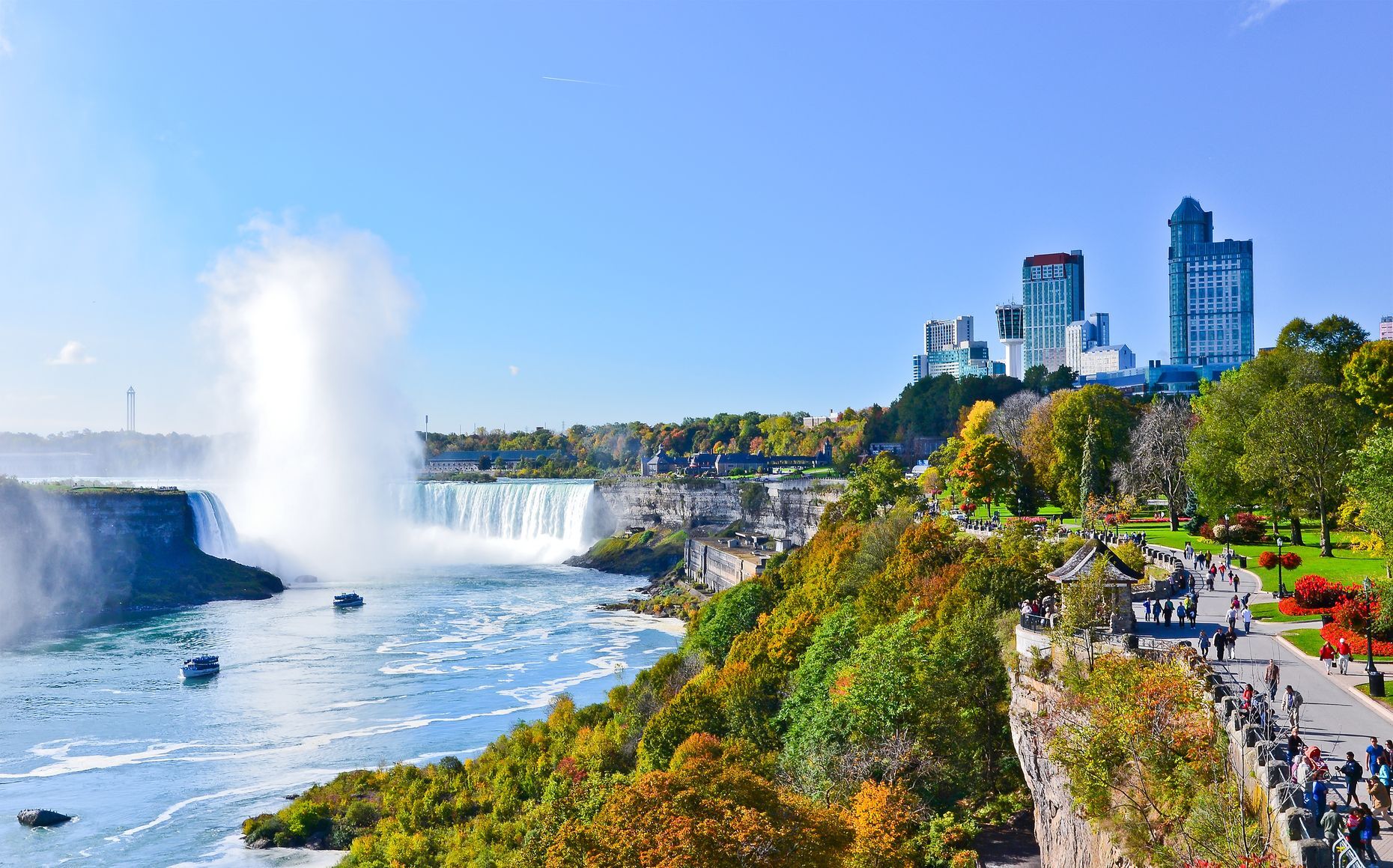
Niagara Falls, Canada/USA
Sure, it’s sometimes considered one of the wonders of the world , but it is also Canada’s biggest tourist trap . Niagara Falls is comprised of three beautiful waterfalls surrounded by tacky and underwhelming attractions. Tourists have described the town as expensive and overcrowded—it is only a perfect location if you have money to burn. For a more sophisticated trip, try Niagara-on-the-Lake , known for its quaint downtown, world-renowned theatre, and award-winning wineries.
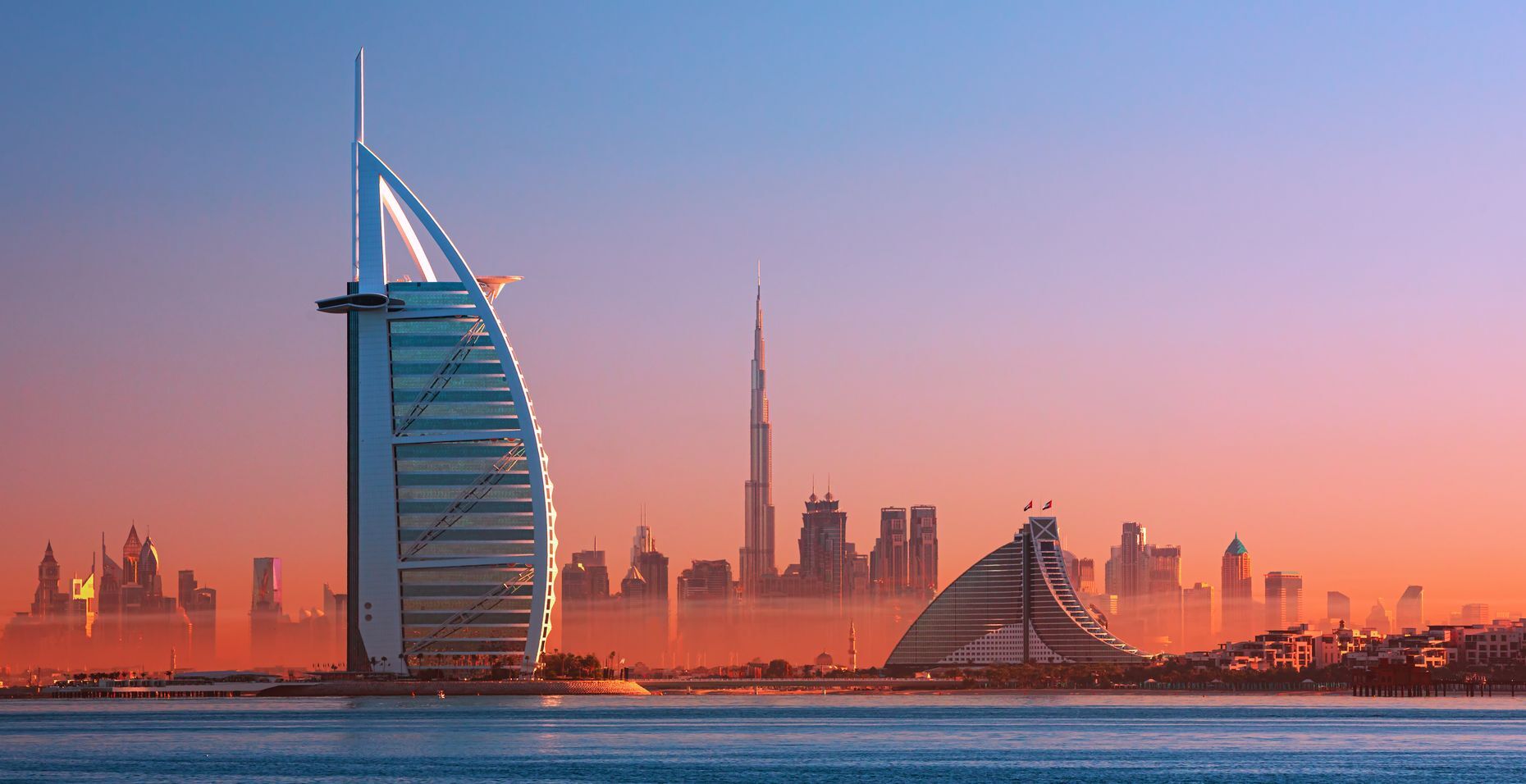
It’s an engineering marvel of giant skyscrapers, luxury shopping, and interesting attractions plopped right down in a desert. However, Dubai is also a city with very strict laws and dubious human rights . It is the safest city in the Middle East, but many countries warn their citizens of the risk of terrorism while visiting. And while violent crime directed at tourists is rare, there is a long list of common actions that are considered illegal here.
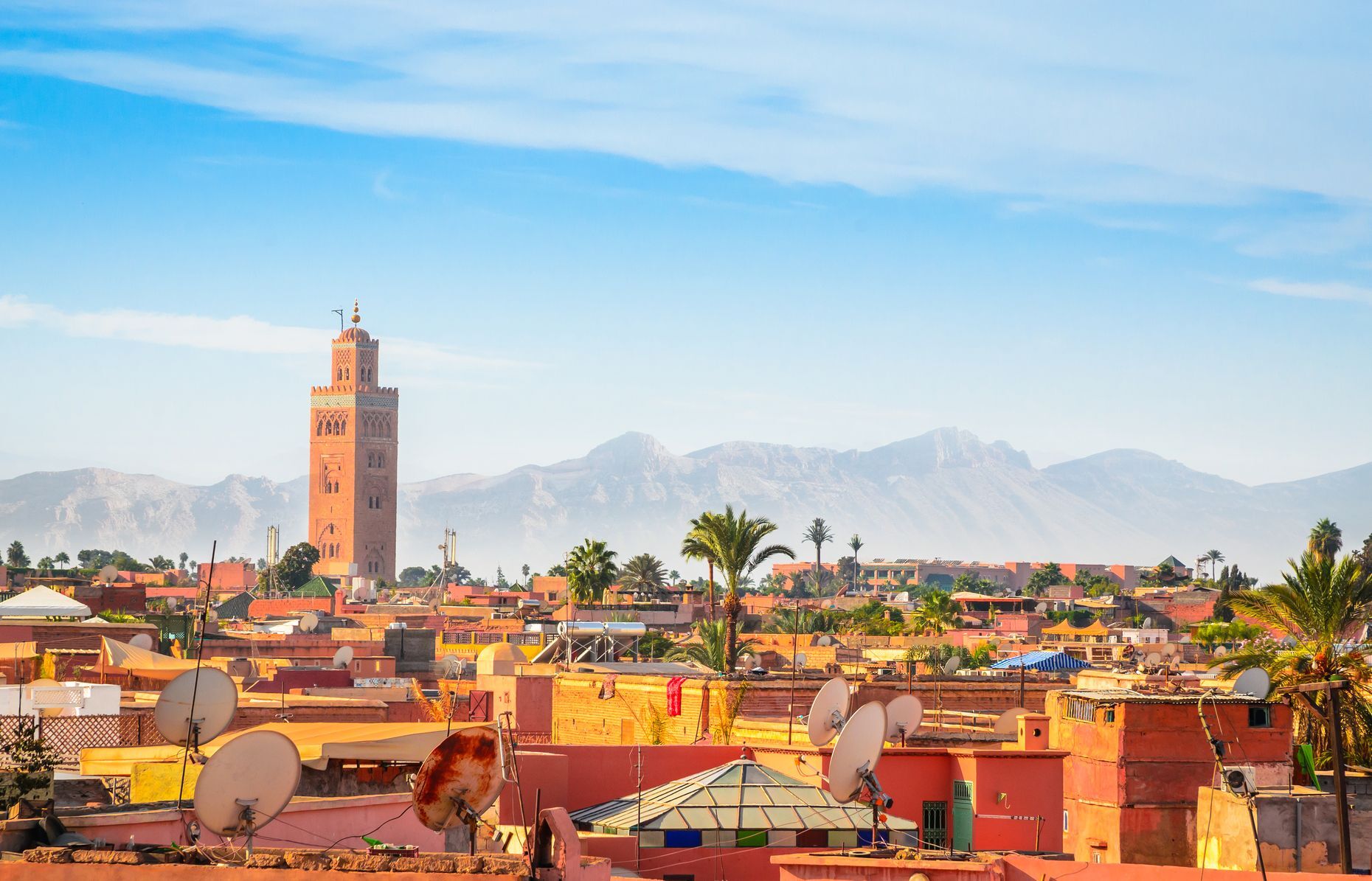
Marrakech, Morocco
This gateway to the Sahara Desert is a touristy and bustling city that, while popular to visit, is best to be avoided. In Marrakech, Morocco visitors will experience verbal harassment from locals who are trying to sell you trinkets and fake guides willing to take your money for a sham tour. Instead, book a flight to these seaside Moroccan cities along the Atlantic Coast: Tangier , Rabat, or Essaouira.

Cape Town, South Africa
While Cape Town, South Africa, is a popular tourist destination, known for its stunning landscapes and cultural experiences, tourists will need to exercise caution during their stay, bearing in mind the crime and safety issues that arise in all major cities. For an interesting alternative, head to Durban with its sunny beaches, rich history, and outdoor adventure.

Mount Everest, Nepal
Many climbers train nearly a lifetime to conquer Mount Everest, the highest point on Earth. However, unless you’re an experienced mountaineer, making the trek up this Himalayan Mountain is best to be avoided. With more and more people visiting the area, it has become largely overcrowded and polluted . Skip the long lines and “highest garbage dump” in the world and try scaling the height of Kilimanjaro instead.
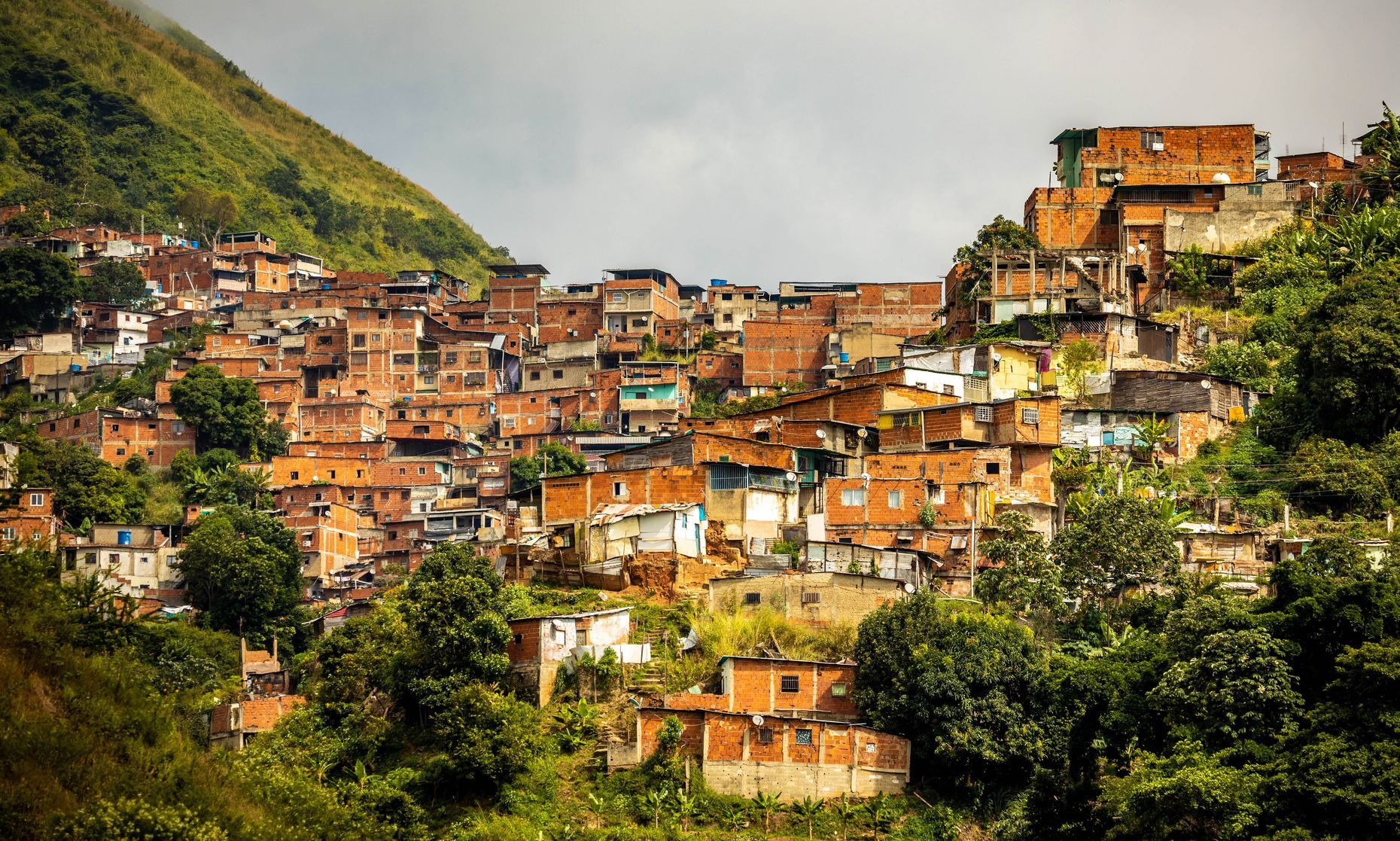
Caracas, Venezuela
This South American capital city is definitely on the list of worst places to travel in 2024. From criminal activity and civil unrest to kidnapping and arbitrary enforcement of local laws, tourists will want to give a wide berth to Caracas, Venezuela. This densely overpopulated and polluted city is a pretty dangerous place and recent economic unrest makes it even worse. Instead, head to the Altiplano region in Bolivia.
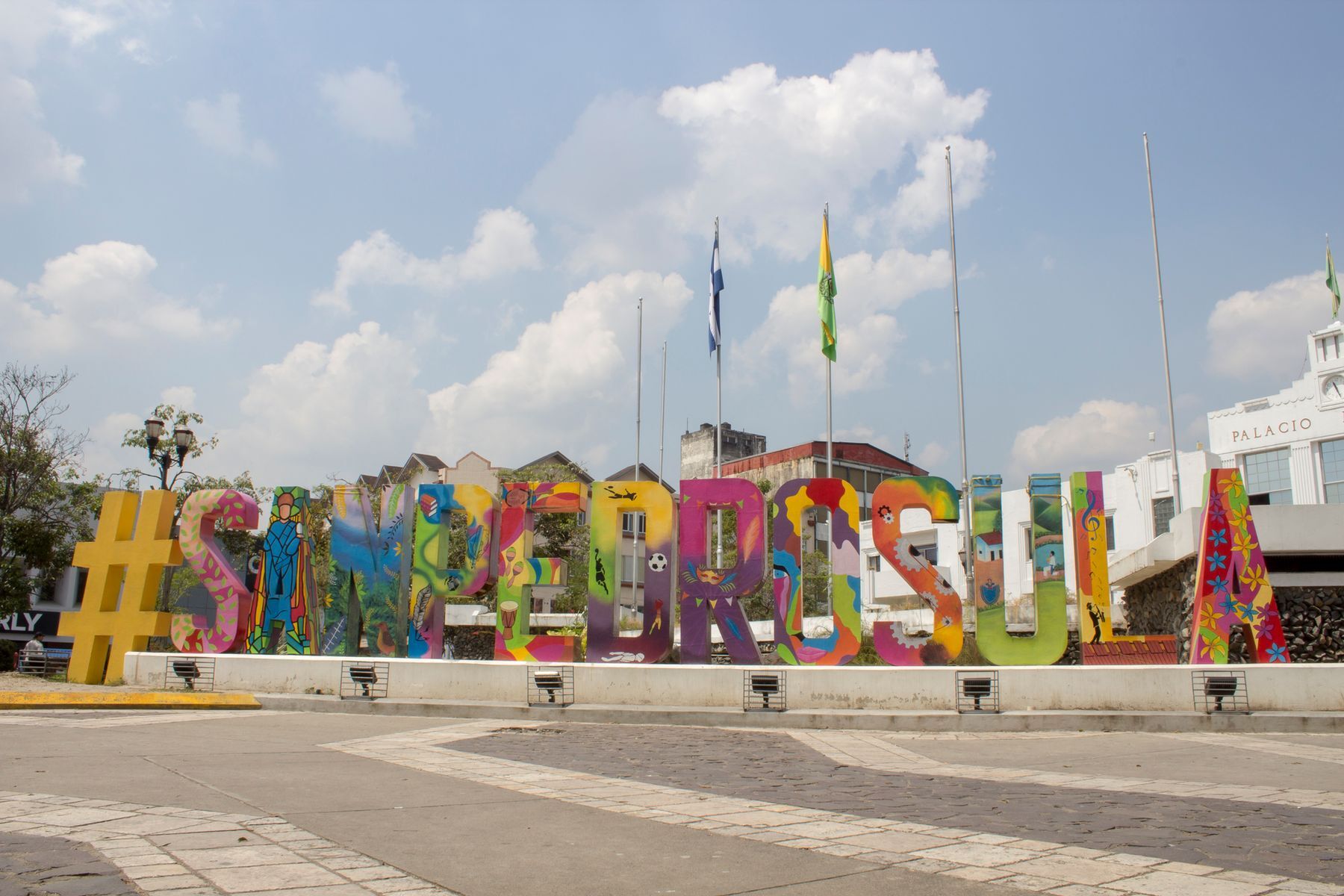
San Pedro Sula, Honduras
This Honduran city is known for its high level of violent crime, making it one of the worst travel destinations in 2024. The second-largest city in the country, San Pedro Sula has one of the highest murder rates in the world and is known for gang activity, drug trafficking, and targeted theft on tourists. Instead, hop on a bus and explore the charming town of Copán and its ancient Mayan ruins .
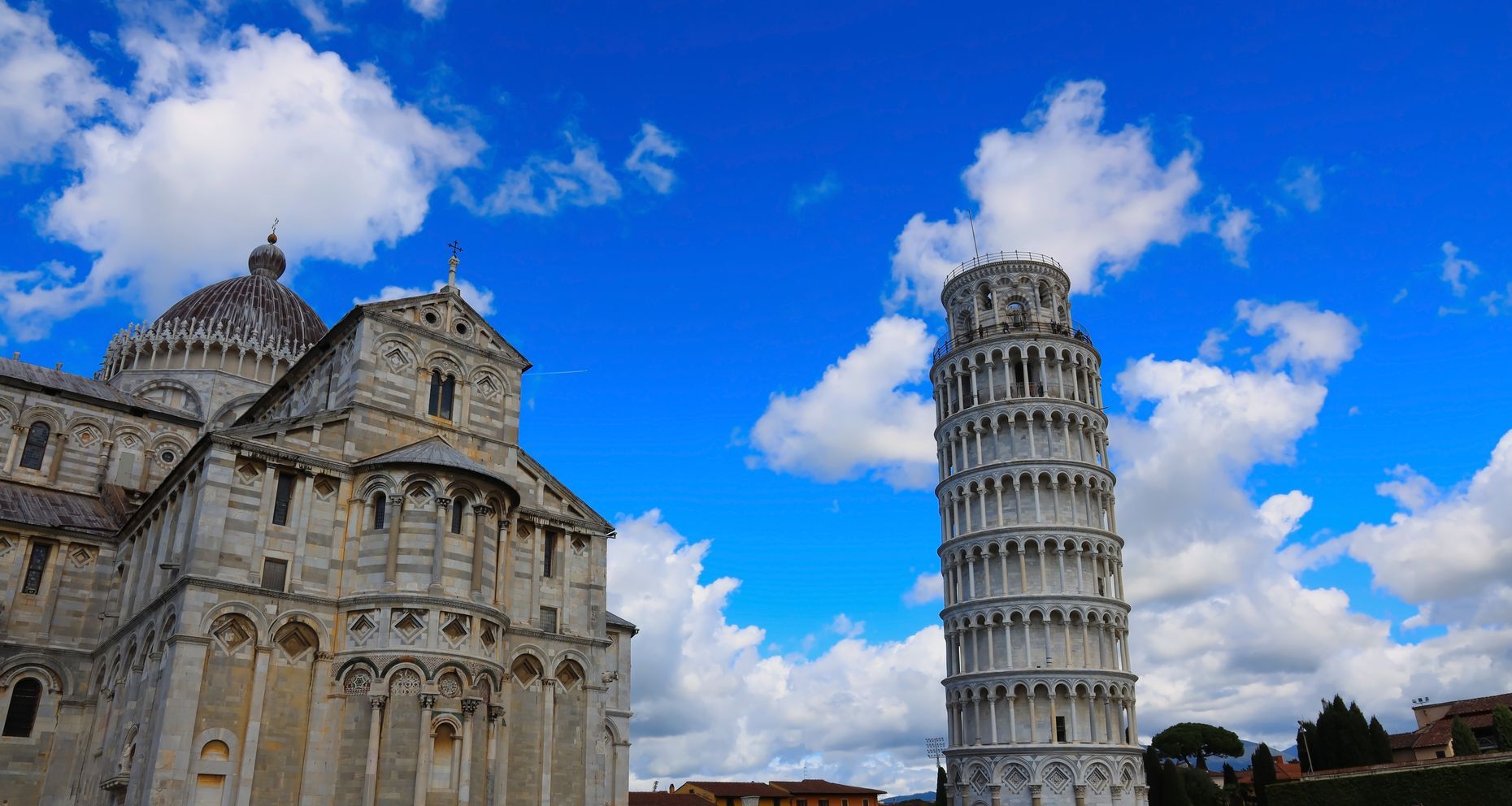
Pisa, Italy
It’s sometimes included on travel bucket lists and many tourists have cheesy photos of themselves in front of it, but the famous Leaning Tower of Pisa is one of the worst places to travel to in 2024. Enthusiastic trippers will most likely be disappointed in the tower and the cathedral in Pisa, Italy. The long lines, expensive tickets, and rather underwhelming leaning of the structure is sure to put people off. Instead, check out San Gimignano in Tuscany to see beautiful medieval towers and stay away from the tourist onslaught.
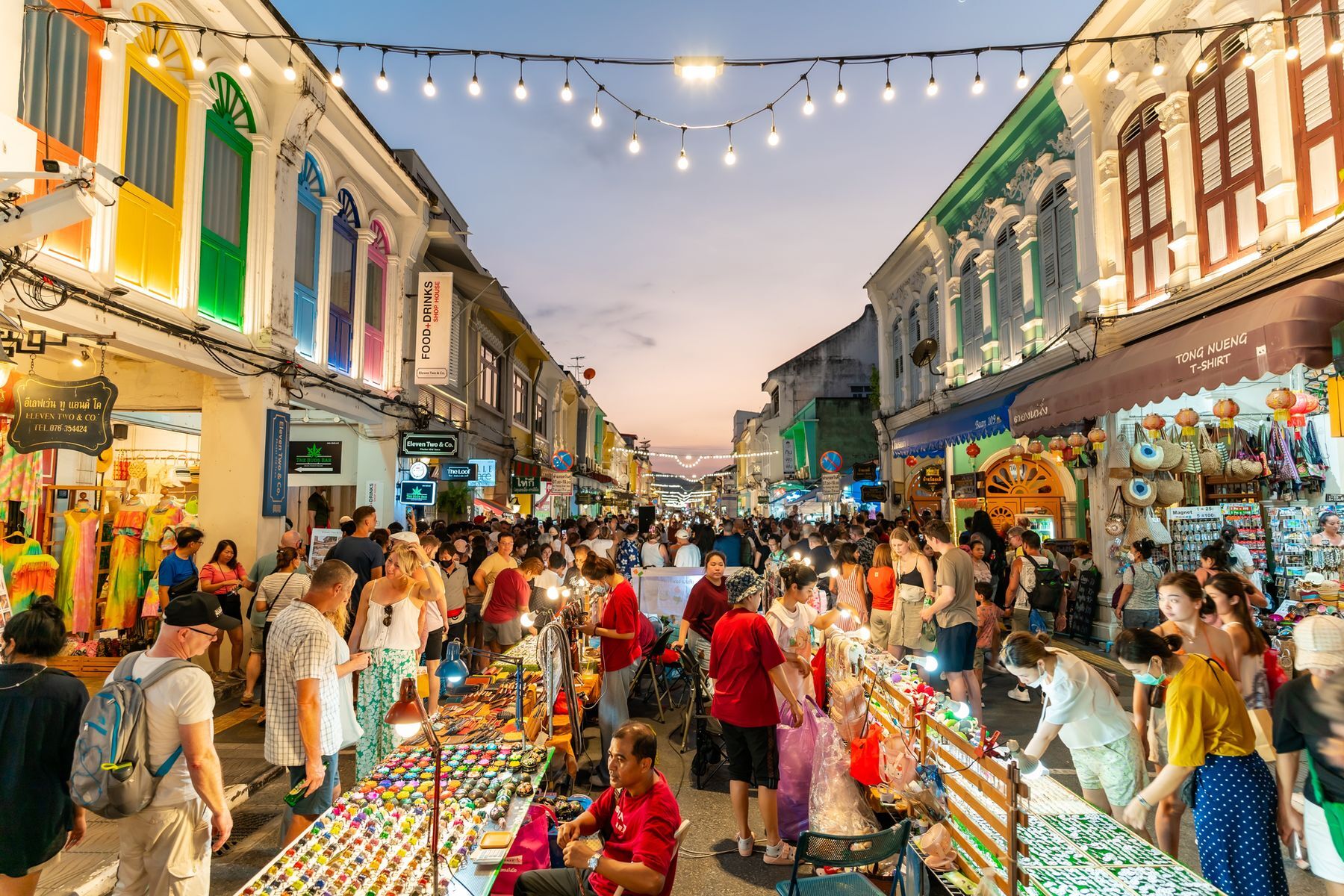
Phuket, Thailand
It’s the largest island in Thailand and it’s surrounded by lush forests and beautiful beaches with warm water, making Phuket sounds like a traveller’s paradise. However, along with the tourist attractions comes crowding, tourist scams , and robberies. For those looking for a more relaxed Thai paradise vacation, check out Koh Poda , which was voted one of the best beaches in the country.
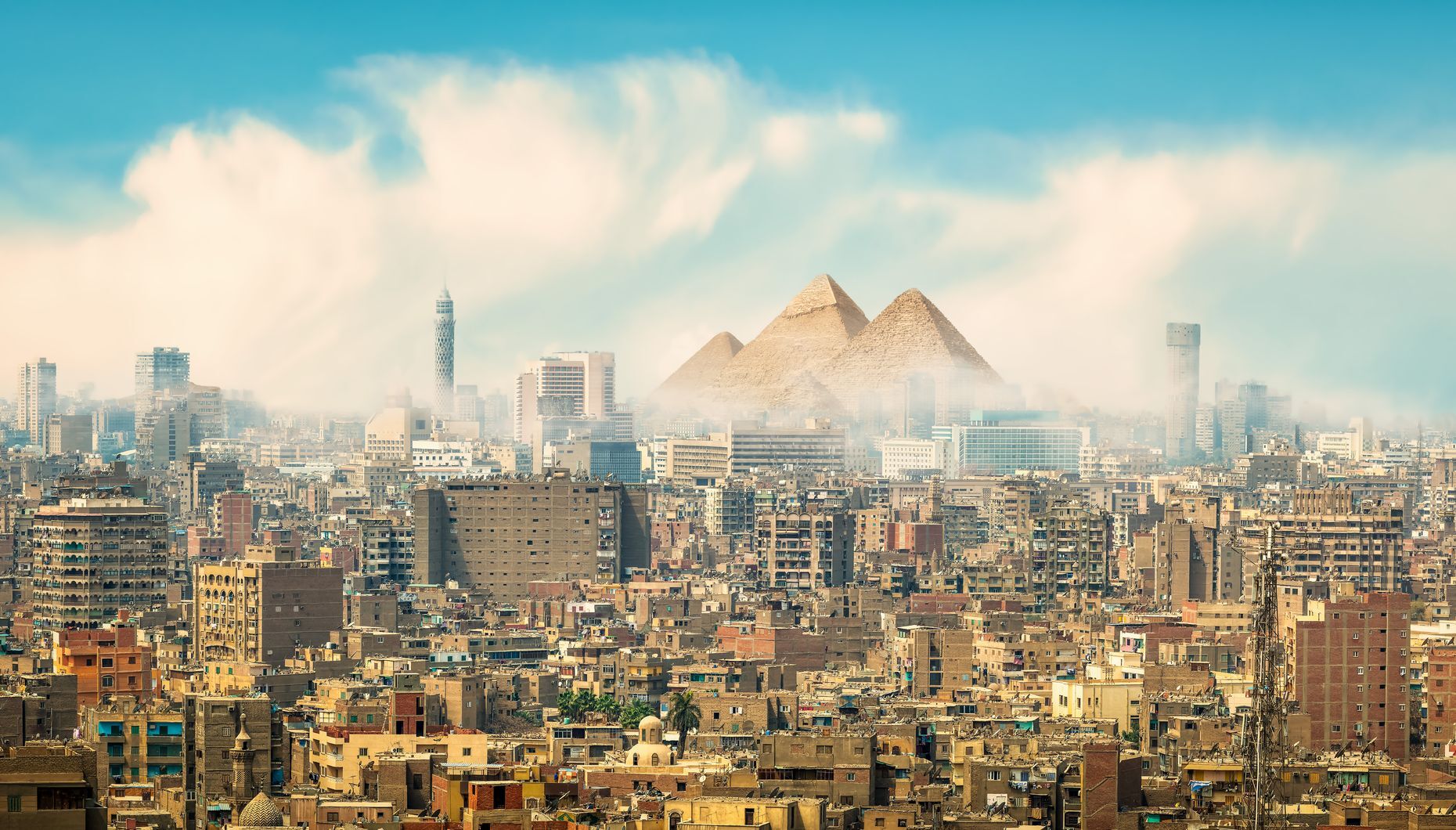
Cairo, Egypt
History buffs travel in droves to check out the ancient pyramids, amazing museums, and the sights and sounds of this historical city. Cairo is home to some very cool tourist spots; however, it can be a very dangerous place to travel to in 2024. Rife with scams, pickpockets, and threats of terrorism, Cairo is also a particularly hostile city for women. Female travellers have reported catcalling, harassment, and sexual assault and Egypt is, in general, unsafe for LGBTQ+ travellers.
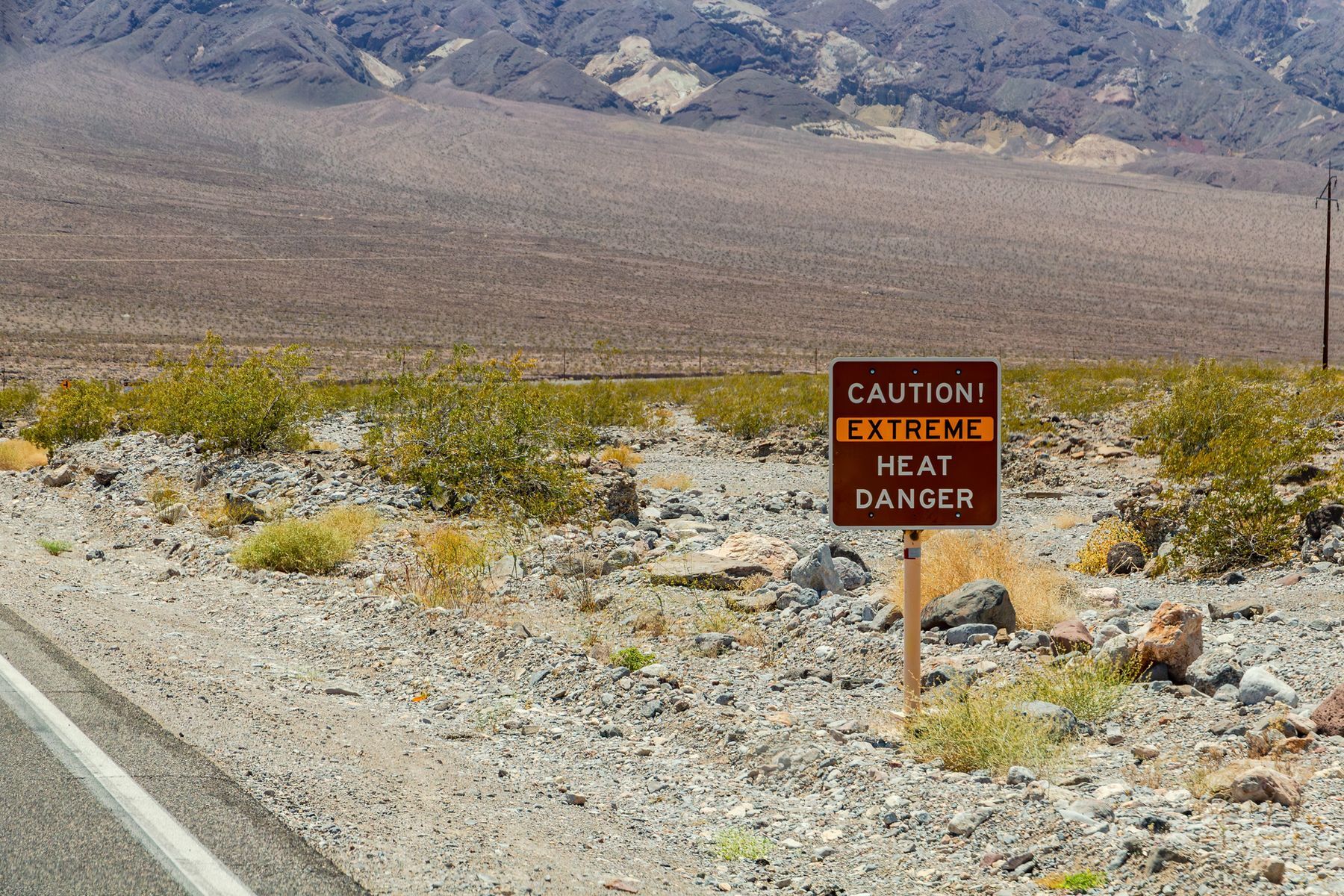
Death Valley, California, USA
The extreme weather conditions of Death Valley in California and its remote location make this one of the worst places to travel in 2024. There are limited options for food, water, and gas, meaning that unprepared travellers are putting themselves at very high risk. With temperatures soaring to 52 degrees Celsius (125 degrees Fahrenheit) and numerous fatalities recorded in the area due to heat and extreme conditions, this is not a tour for the faint of heart. If you still insist on visiting, safety should be a top priority , with guidelines such as drinking plenty of water, avoiding hiking in the heat, and following the speed limits.
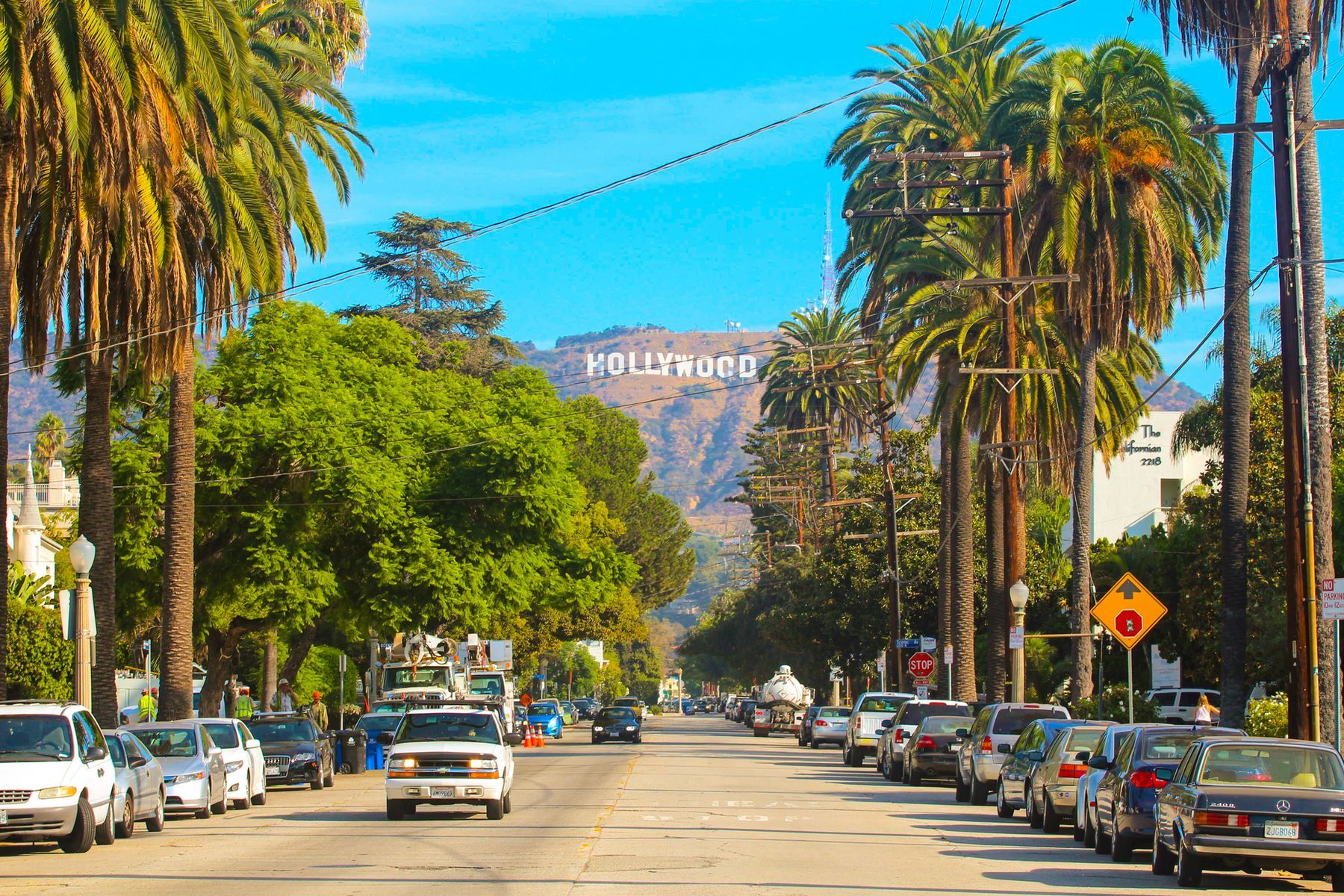
Hollywood, California, USA
Glitz, glamour, and the rich and famous—that sums up many people’s expectations of Hollywood. The reality is that Hollywood is a relatively small neighbourhood in Los Angeles, and while there’s plenty to see—including the Hollywood Walk of Fame, the Dolby Theatre, and the famous sign—it’s a very crowded and sometimes sketchy place. Skip this part of Tinseltown and head to the Getty Museum or Griffith Observatory in downtown L.A. and then hit up some amazing Mexican food as well.
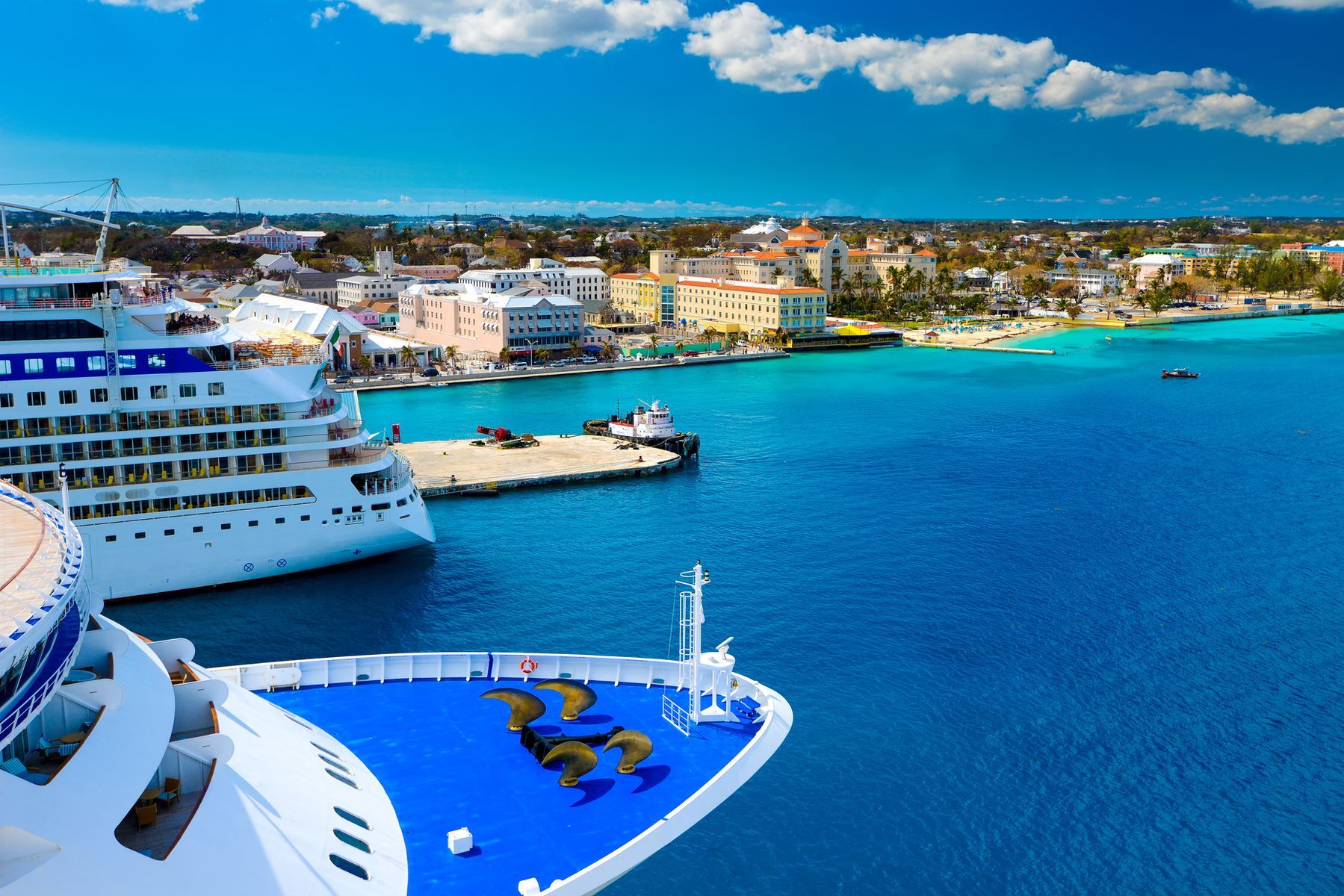
Nassau, Bahamas
Boasting beautiful beaches and a bustling and vibrant nightlife, Nassau , the capital city of the Bahamas, sounds like it has it all. However, due to its popularity, the city is also known for its overcrowding, high prices, and pushy vendors. It is also the most visited port for cruise ships in the Bahamas, leading to an influx of tourists. The city is unfortunately also facing high rates of crime , meaning this destination is one to skip in 2024.
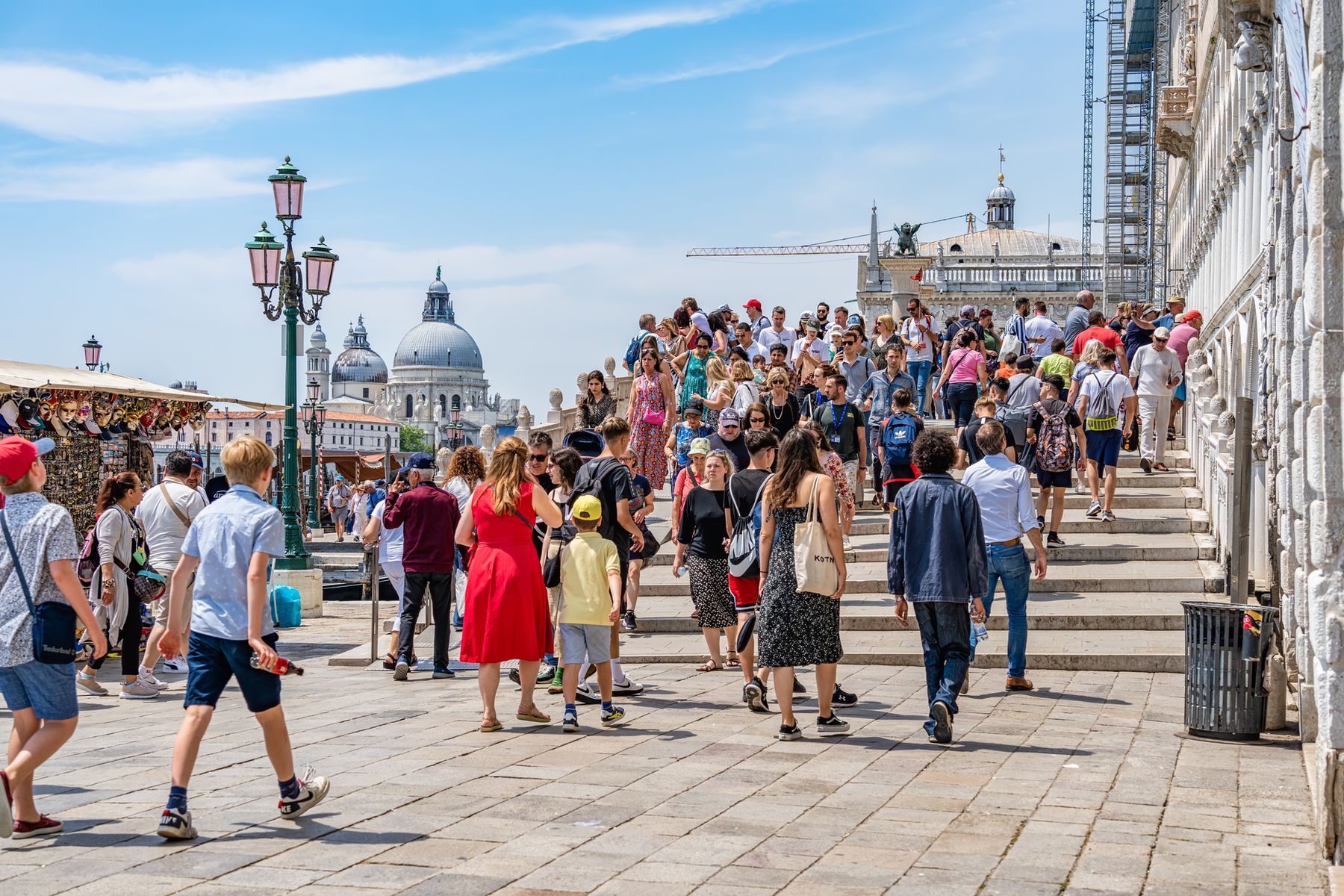
Venice, Italy
Gondola rides, romantic candlelit dinners, and historical canals may await Venetian tourists; however, this sinking city is completely overwhelmed with visitors. More than eight million day-trippers descend onto this tiny Italian city annually, and not only is it crowded but Venice is also one of the most expensive cities in the world. Skip the long lines and wander the waterways of Bassano del Grappa instead.
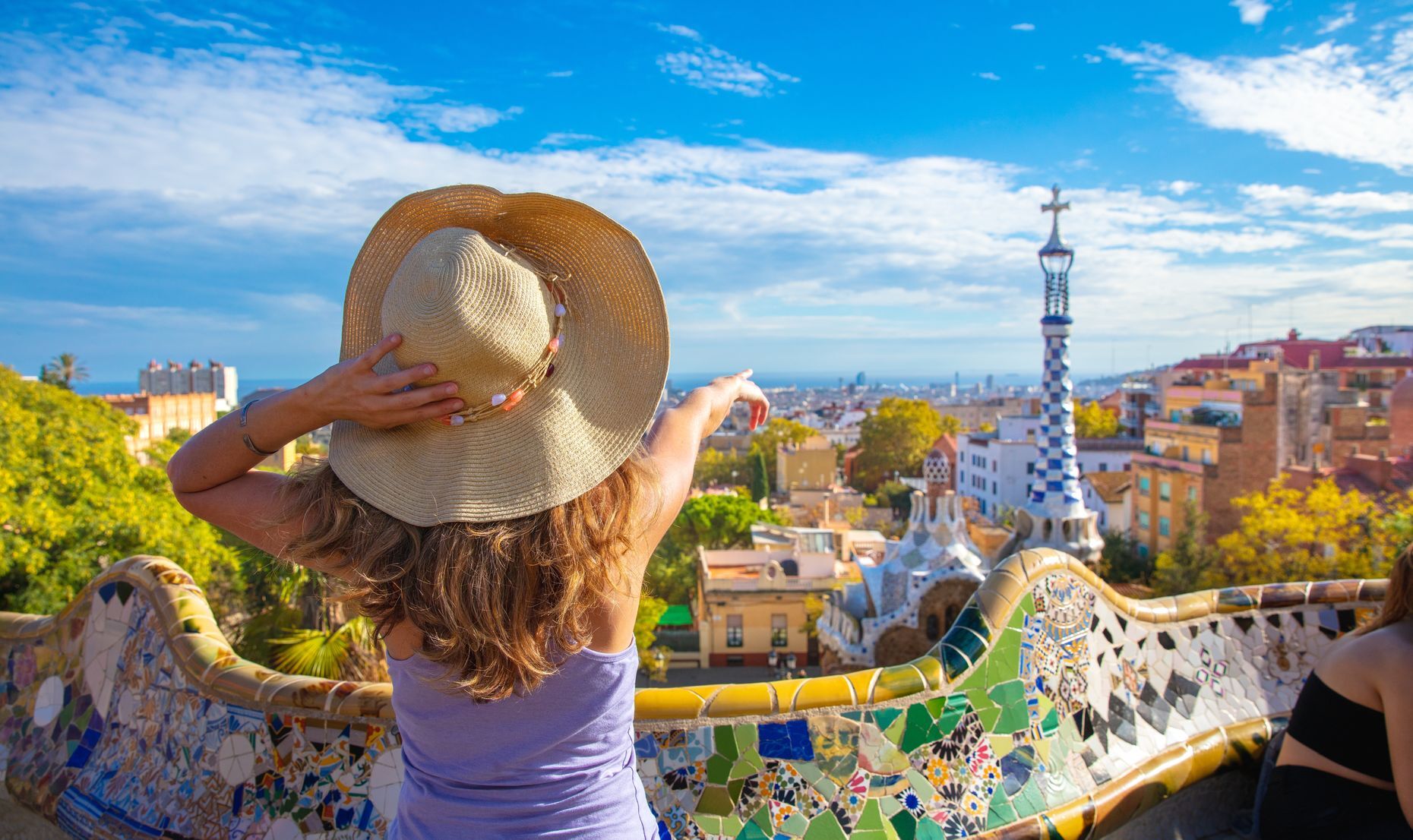
Barcelona, Spain
It has all-night parties, amazing food and culture, and plenty of sunshine, but Barcelona also has an over-tourism problem . As a result, the city has resorted to restricting the number of visitors, from reducing the number of cruise ships allowed to dock to limiting hotel beds, making it one of the places to avoid in 2024.
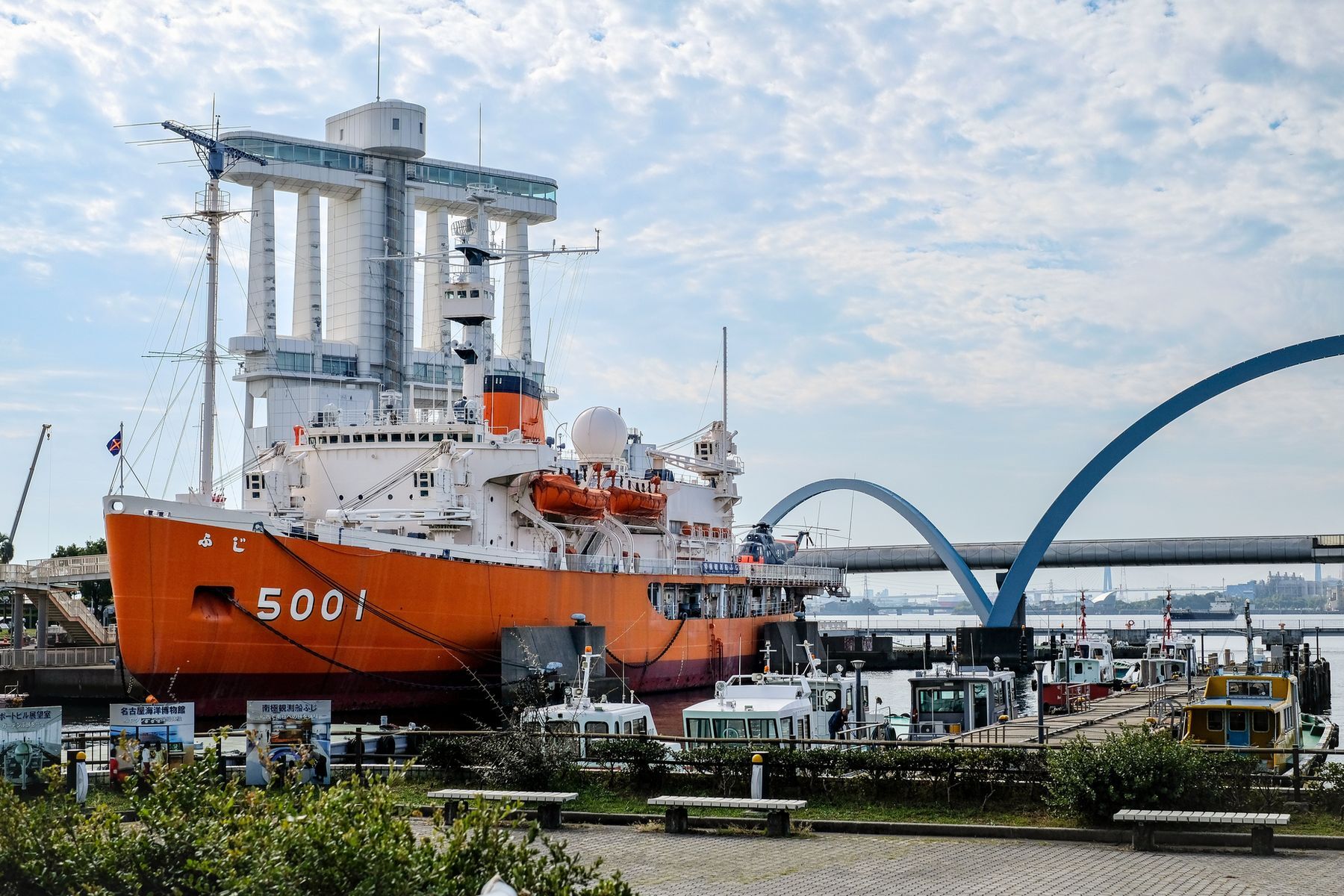
Nagoya, Japan
This fourth-largest city in Japan also has the reputation of being the most boring in the country, meaning that it may just be one of the worst places to travel in 2024. While Nagoya, Japan has some famous attractions, the city is mostly industrial and lacks the tourism infrastructure that many visitors expect. Tourists in the Land of the Rising Sun would be better off heading to Okinawa or Kanoya.

Maui, Hawaii
Devastating forest fires ripped through Lahaina in 2023, making this tropical destination one of the worst places to travel to this year. With its lush rainforests and amazing beaches, it’s not hard to see why the second-biggest island in Hawaii is usually a vacationer’s paradise. However, the area needs time to rebuild and locals are begging tourists to stay away. Instead of Maui, try Fiji for those tropical vibes.
Ha Long Bay, Vietnam
It’s a UNESCO World Heritage Site famed for its limestone pillars rising from the sea. Ha Long Bay, Vietnam is a popular scuba diving, hiking, and boating destination which hosts more than 11 million tourists a year. However, this is one spot travellers will want to avoid in 2024 as the over-tourism issue is negatively affecting the local community and impacting the environment. Plastic pollution and marine waste such as diesel are damaging the local ecosystem of this beautiful bay.
More for You
Murder rate among Russian soldiers returning from Ukraine surges
What a Blood Clot Feels Like, According to Doctors
The biggest new TV show every year since the '50s
In 2024, this is how much it costs to raise a child…
If you and your partner use any of these 5 phrases regularly, your relationship is stronger than most
The Top 10 Most Successful Girl Bands Worldwide
Boomer's remorse: 5 more 'big money' purchases you're likely to regret in retirement
We Ordered 7 Fast-Food Breakfast Sandwiches to Find the Best One
Testing Japan’s Brand New Super Advanced Seaplane in Middle of the Ocean
Putin humiliated after showing off captured US tank and British armoured cars
The 25 best TV couples of all time
See what 25 legendary hip-hop artists look like now
100-year-old explains how he still has $1 million saved: 'I always lived within my means. I'm not a gambler.'
These ice dancers are turning heads at the Ice Palace in West Edmonton Mall
Marlies’ Clifford gets upset in handshake line after elimination from AHL playoffs
These 'Essential 8' habits slowed biological aging significantly, study shows
Here's Everything Carrie Underwood Eats In A Day At 41—Including The Healthy Hacks From Her Own Backyard
Frosted Flakes are banned across Europe and Japan. Here's why, plus more American favorites barred elsewhere.
Why the next generation of wood siding is perfect for your cottage or home
23 TV shows with characters who inexplicably disappeared

COMMENTS
The Temples of Ōsu. 10. Noritake Garden and Ceramics Factory Tour. 11. Legoland Japan. Where to Stay in Nagoya for Sightseeing. Tips and Tours: How to Make the Most of Your Visit to Nagoya. Map of Tourist Attractions in Nagoya. Nagoya, Japan - Climate Chart.
A variety of restaurants and cafes are accessible within a 10-minute walk from this hotel. Nagoya Castle is a 15-minute car ride away from Nagoya Prince Hotel Sky Tower. Nippon Gaishi Hall is 35 minutes by train. Chubu Airport is 45 minutes by train from this hotel. Travel guide for the city of Nagoya, Japan.
The Nagoya tower was built by a shipbuilding company by Kobe, Japan using approximately 1,000 tons of steel materials. Construction began September 29, 1953 and took approximately eight and a half months to reach completion on June 19, 1954. Today, Nagoya TV Tower is the premier landmark of Nagoya.
11. Attend the World Cosplay Summit. Source: Nataliia Maksymenko / shutterstock. World Cosplay Summit. Nagoya comes alive in July and August when it opens its doors to the World Cosplay Summit. This is a must-see attraction for anyone who likes cosplay which features players dressed up in elaborate costumes.
Top Things to Do in Nagoya, Japan: See Tripadvisor's 126,381 traveller reviews and photos of Nagoya tourist attractions. ... Top Attractions in Nagoya. Map. See all. These rankings are informed by traveller reviews—we consider the quality, ... Nagoya TV Tower was constructed as part of a Nagoya City urban planning project to enable the ...
The Nagoya tower was built by a shipbuilding company by Kobe, Japan using approximately 1,000 tons of steel materials. Construction began September 29, 1953 and took approximately eight and a half months to reach completion on June 19, 1954. Today, Nagoya TV Tower is the premier landmark of Nagoya.
Top Things to Do in Nagoya, Japan. Places to Visit in Nagoya. Explore popular experiences. ... Nagoya TV Tower was constructed as part of a Nagoya City urban planning project to enable the broadcast of tourism information and television signals. ... Other Top Attractions around Nagoya. 2023. Fushimi Inari-taisha Shrine. 24,828. 106 km away ...
There's an oasis in the middle of Nagoya: Noritake Garden, the award-winning shopping, culture, and art destination founded by the Noritake company, one of the most well-known and respected names in Japan's ceramics industry. The site was built on the company's former factory grounds (see map) and is an excellent overview of the brand as a whole.Here guests can get hands-on in the craft center ...
The Nagoya tower was built by a shipbuilding company by Kobe, Japan using approximately 1,000 tons of steel materials. Construction began September 29, 1953 and took approximately eight and a half months to reach completion on June 19, 1954. Today, Nagoya TV Tower is the premier landmark of Nagoya.
Nagoya Castle's keep is the biggest of all Japanese castles, and has the most "haafu", or triangular eves of any castle. Nagoya is home to the second most venerated Shinto Shrine in Japan, Atsuta Jingu, second only to the Great Shrine of Ise. Nagoya was the birthplace of the Japanese national past time of passive gambling, Pachinko ...
1. Nagoya Castle: Visit a 400-year-old Samurai Castle. Nagoya Castle has been a symbol of Nagoya for over 400 years. Originally constructed in 1612 by Tokugawa Ieyasu, the military ruler who established the Edo period (1603-1868), the structure stands at an impressive 48m in height.
Nagoya is one of Japan's largest and most famous cities. This travel guide introduces things to do in Nagoya, from visiting Nagoya Castle to Ghibli Park, as well as local food, a recommended itinerary, and travel tips. ... Nagoya also has attractions ideal for families. Take the Aonami Line from Nagoya Station to Kinjo-futo Station for 24 ...
Top 30 Nagoya Tourist Attractions. Nagoya, one of Japan's leading metropolises, is home to historical landmarks such as Nagoya Castle and Atsuta Shrine, Osu Shopping Street and Kinshachi Yokocho where you can enjoy Nagoya gourmet food, Oasis 21 where you can take Instagram-worthy photos, and places to visit with your family.
Visit Japan's fourth most populated city, a castle town and the heart of the country's automobile industry. Nagoya is a major urban center between Tokyo and Kyoto and a gateway for accessing Kanazawa, Takayama and other destinations in the Hokuriku region. It makes for a great side trip with much to see and do—delve into the city's industrial ...
Table of Contents. Top Things to Do in Nagoya, Japan. 1) Fuel Your Inner Car Geek At Toyota Kaikan Museum. 2) Attend the World Cosplay Summit. 3) Explore Nagoya Castle. 4) Stay for the Summer Night Festival. 5) Visit the JR SCMAGLEV & Railway Park. 6) Stroll Through the Botanical Gardens.
8. Nagoya City Science Museum. The building itself is an exhibition with its photovoltaic power generation equipment used to power the building, green…. 9. Tokugawa Art Museum. This museum, garden and gallery highlights the private collection of the shogunate family Tokugawa. 10.
Nagoya is a major port and transportation hub in Japan's Chubu region. An important industrial center, it's Japan's fourth largest city and home to many tourist attractions like three Toyota-related museums, a railway park, and a science museum housing one of the world's biggest planetariums.
Legoland in the port area of the city. The modern Nagoya Aquarium is one of several attractions at the still-developing Garden Pier area of Nagoya port in the south of the city, which includes Legoland, a maritime museum and Port Tower. The aquarium is divided into five different ecosystems all found in the Pacific Ocean.
Nagoya is one of the biggest cities in Japan located in Aichi prefecture.Being at the convenient location between Tokyo and Osaka, many tourists visit there every year.And if you are planning to visit the first Studio Ghibli Park that opened in November 2022, combine the other attractions in Nagoya for your trip!
4 / NAGOYA CASTLE / all year round. Located in central Nagoya, Nagoya Castle was once the heart of the city and region. As one of the most important castle towns in Edo Period Japan (1603-1868), the story of the castle is inextricable from that of the city and its people.
11 Top-Rated Tourist Attractions in Nagoya, Japan | Travel Video | Travel Guide | SKY Travel#japan #nagoya #travelvideo #travelguide #travel #skytravel #trav...
While Nagoya, Japan has some famous attractions, the city is mostly industrial and lacks the tourism infrastructure that many visitors expect. Tourists in the Land of the Rising Sun would be ...
A visit to the busy streets of Tokyo or the tranquil slower pace of Kyoto necessitates staying connected for an optimal and stress-free experience in Japan. With an eSim or Pocket Wifi, you'll be able to stay in the loop and navigate easily with information at your fingertips, enhancing your overall travel experience.You also won't worry about language barriers much because you'll be able to ...